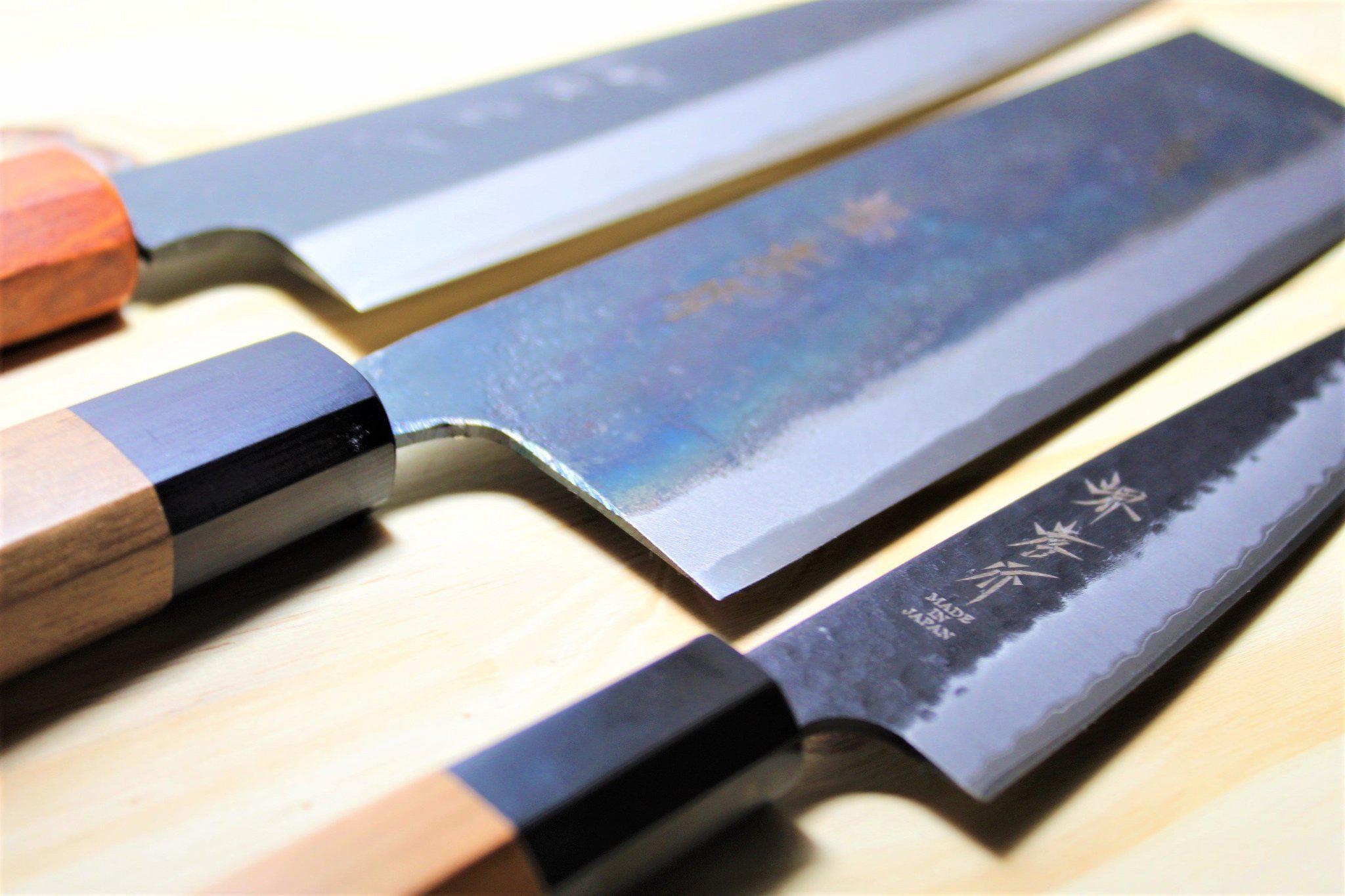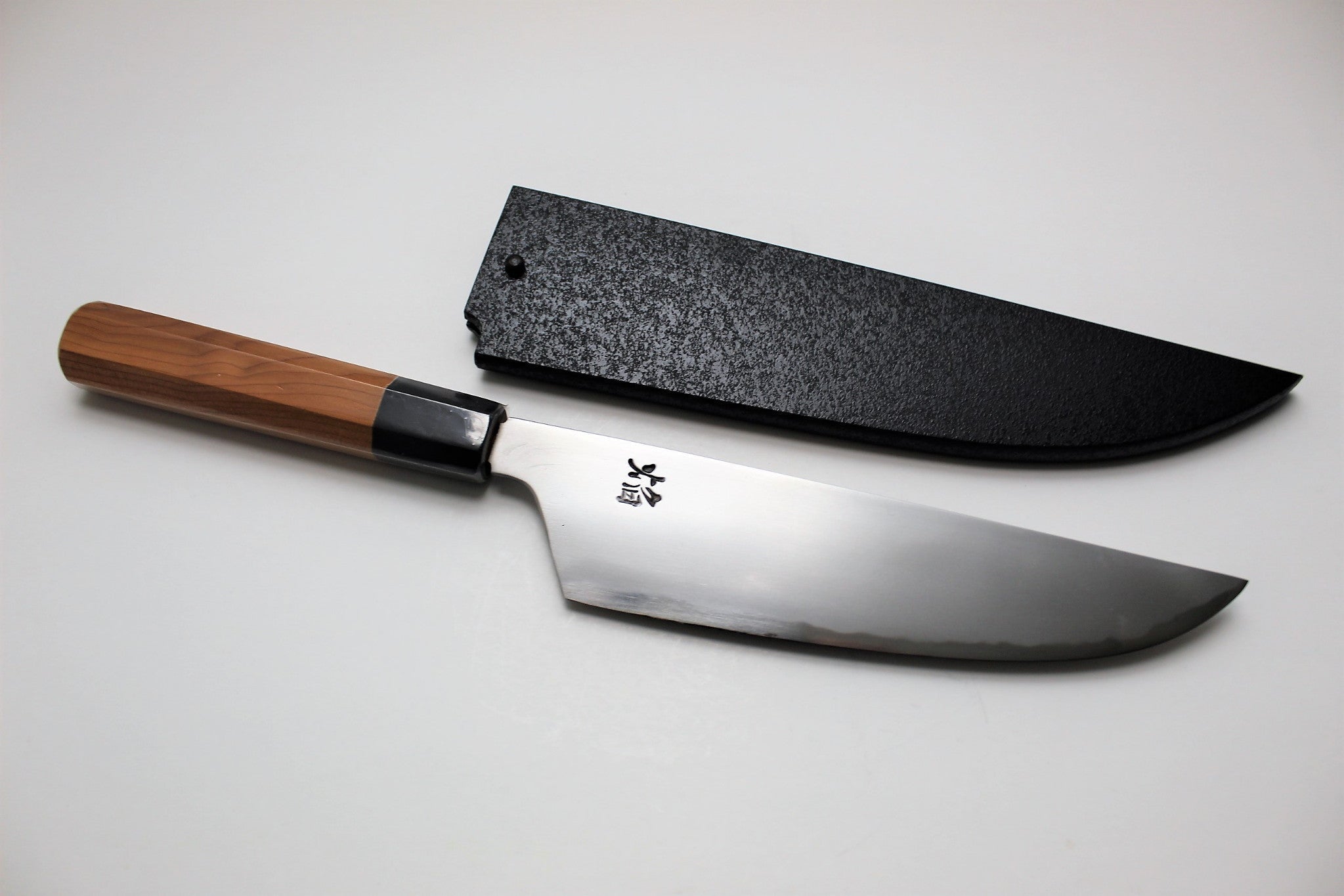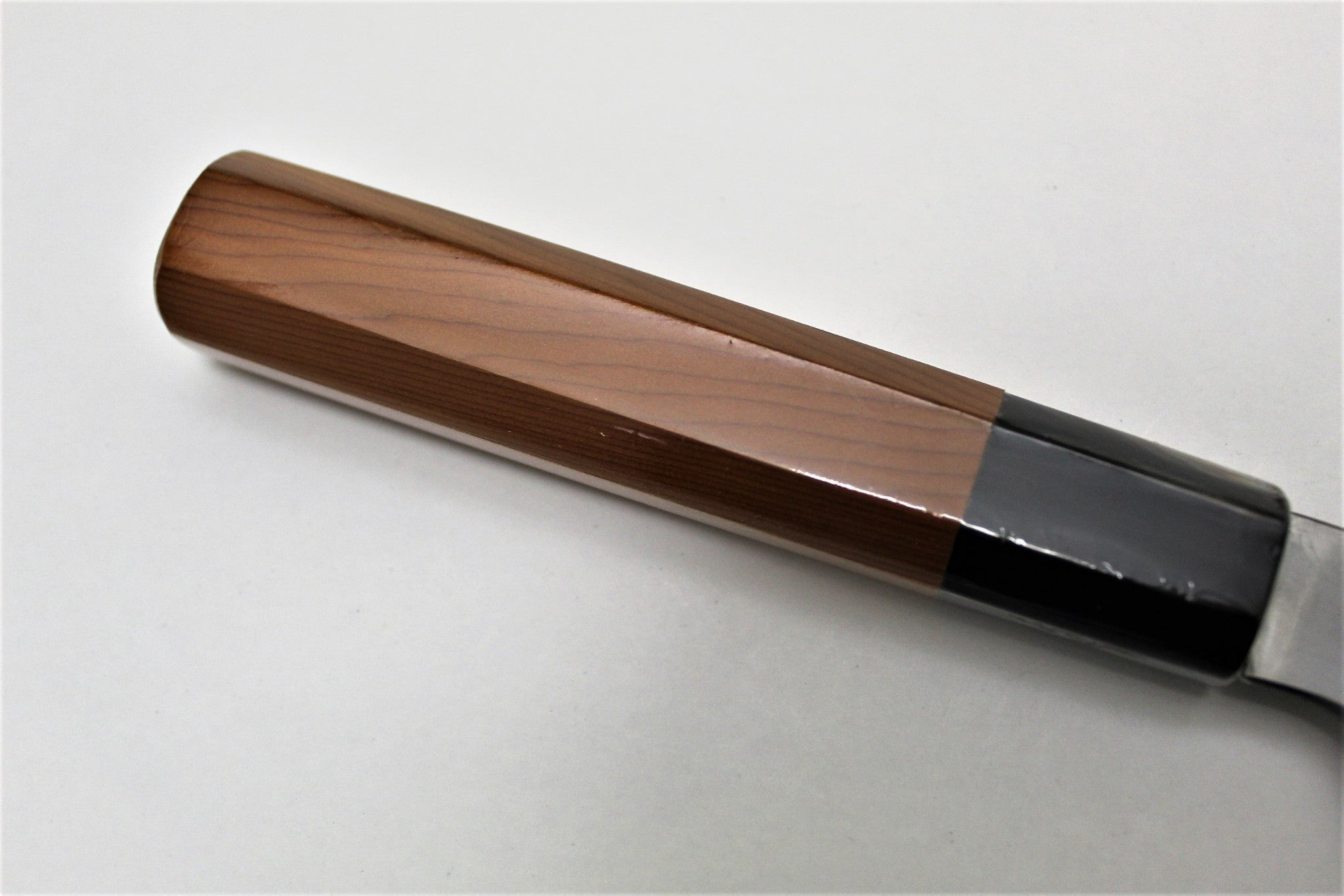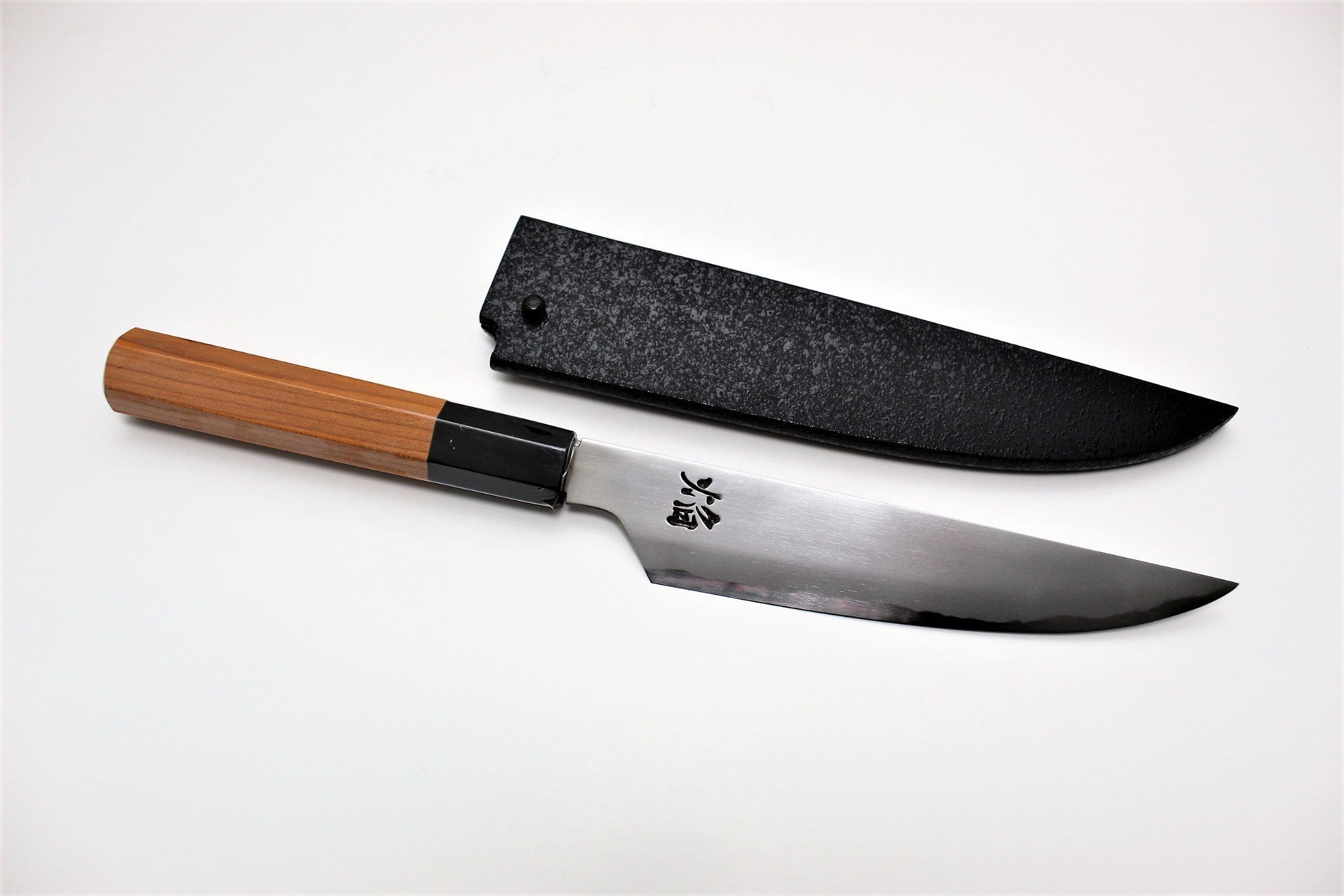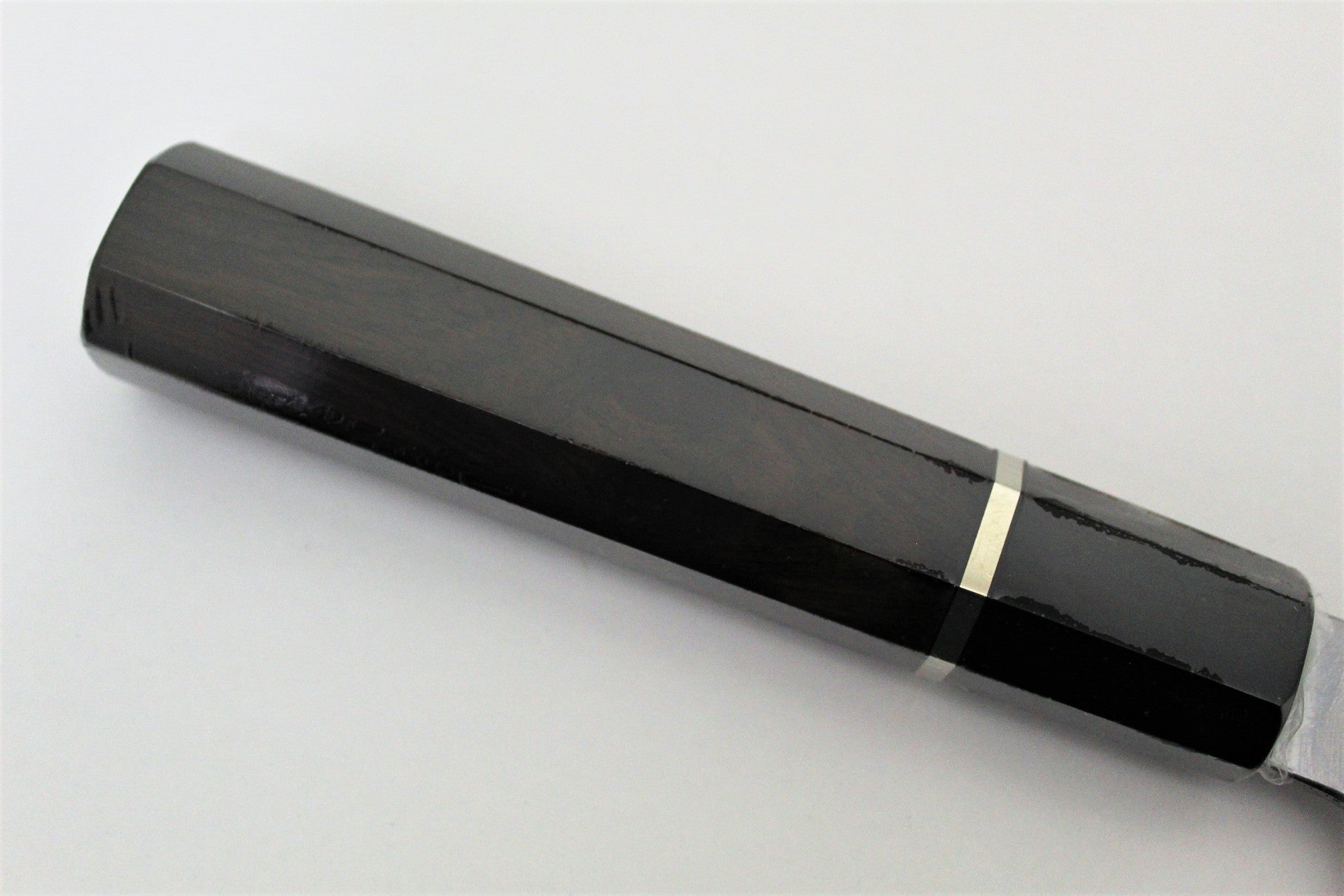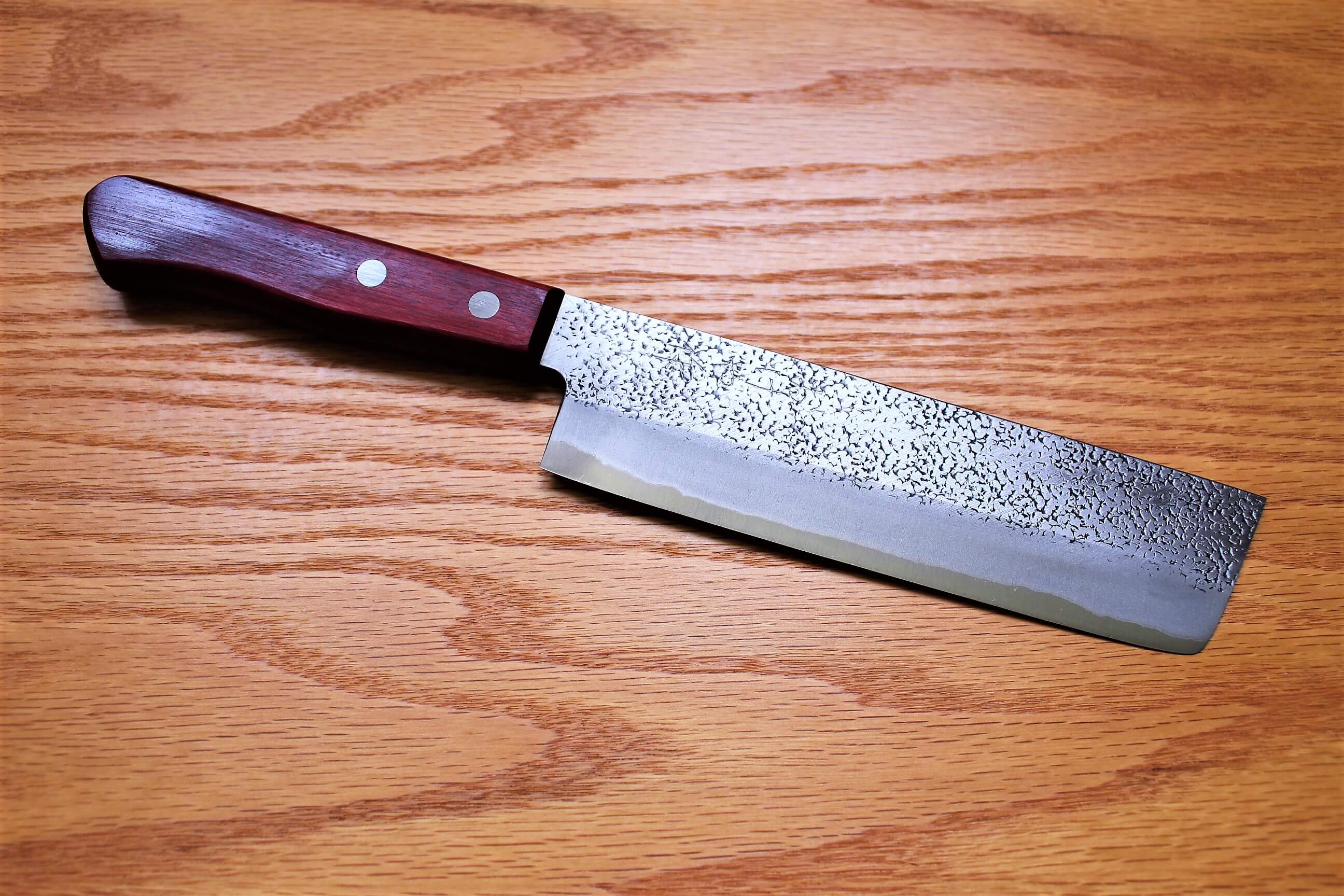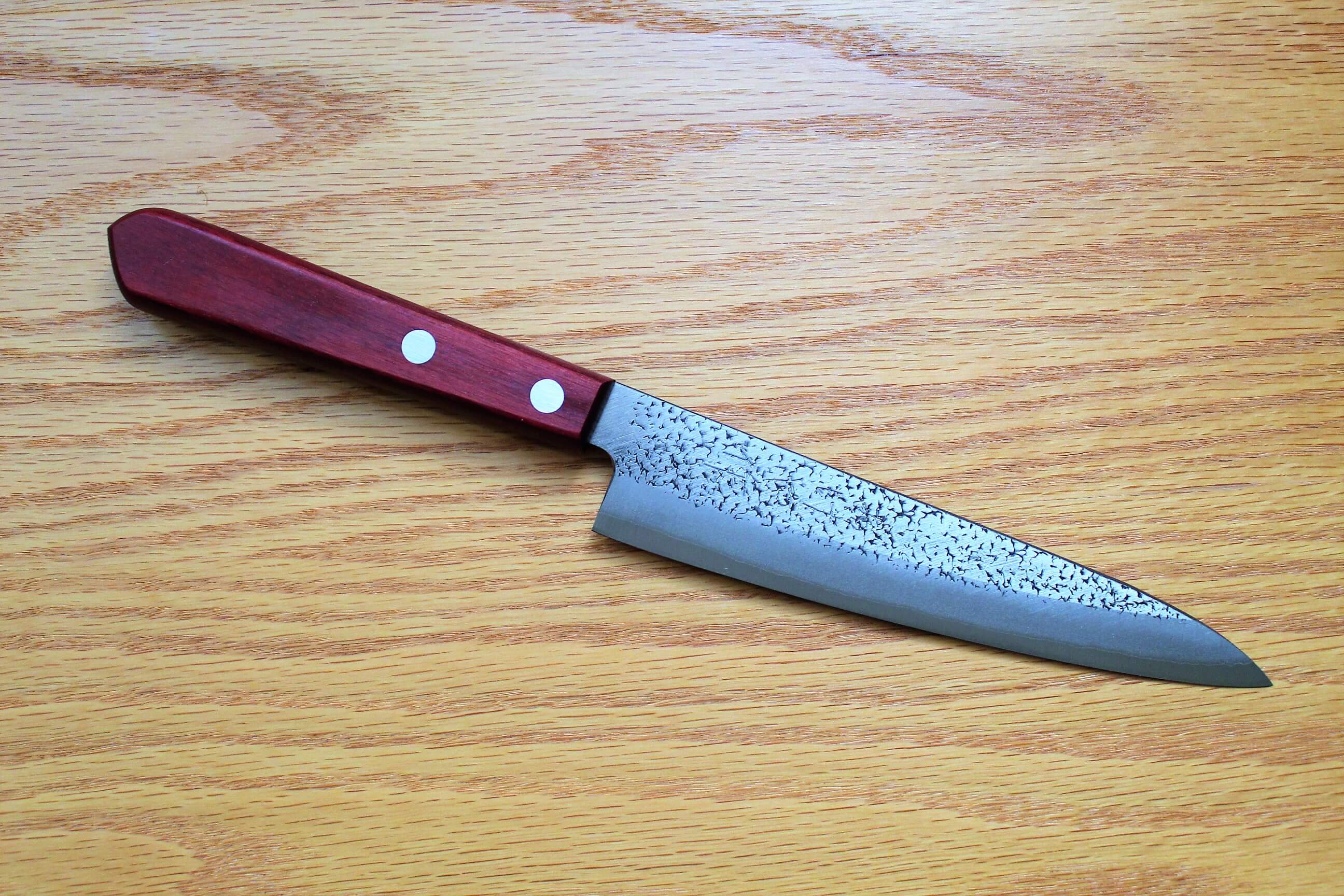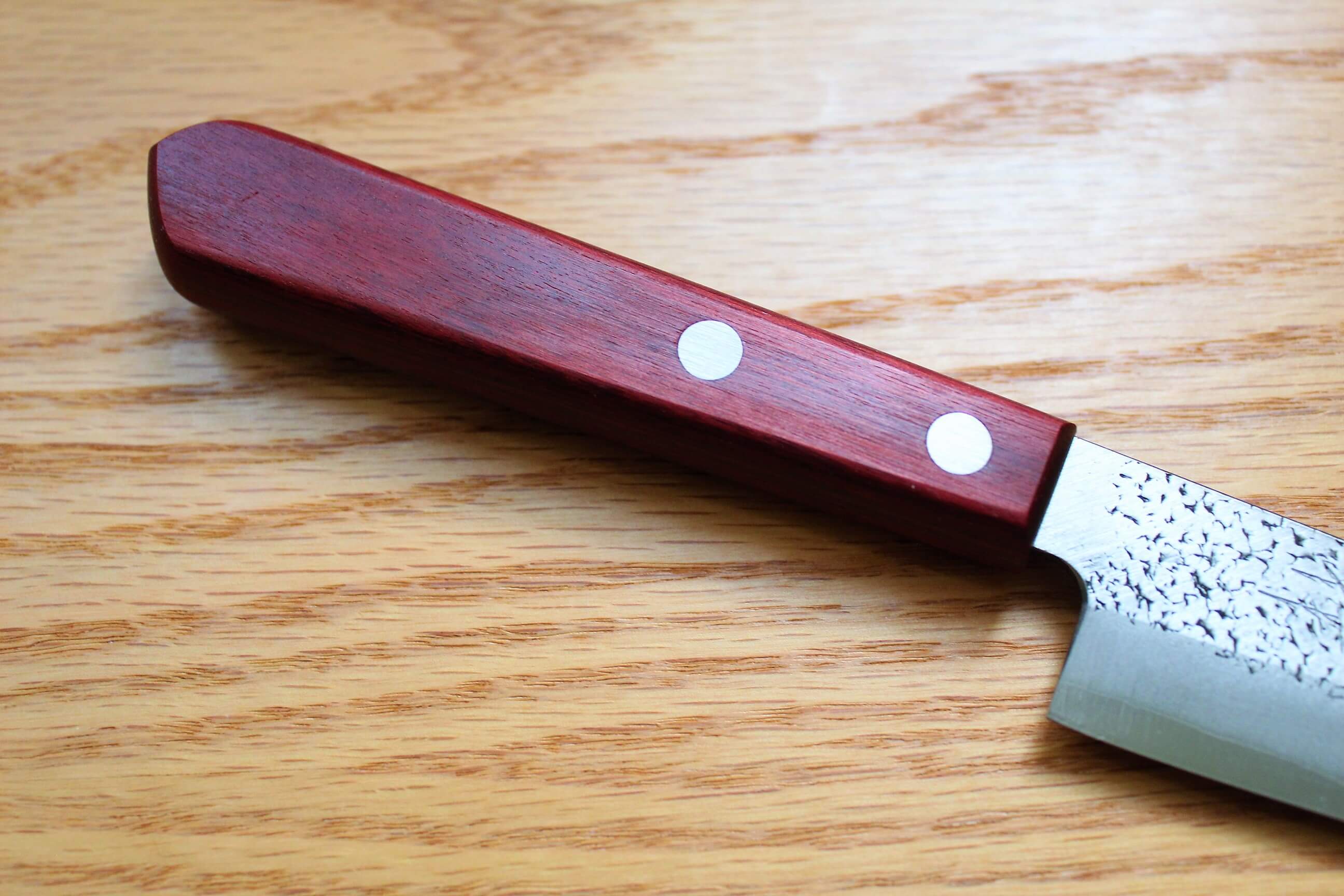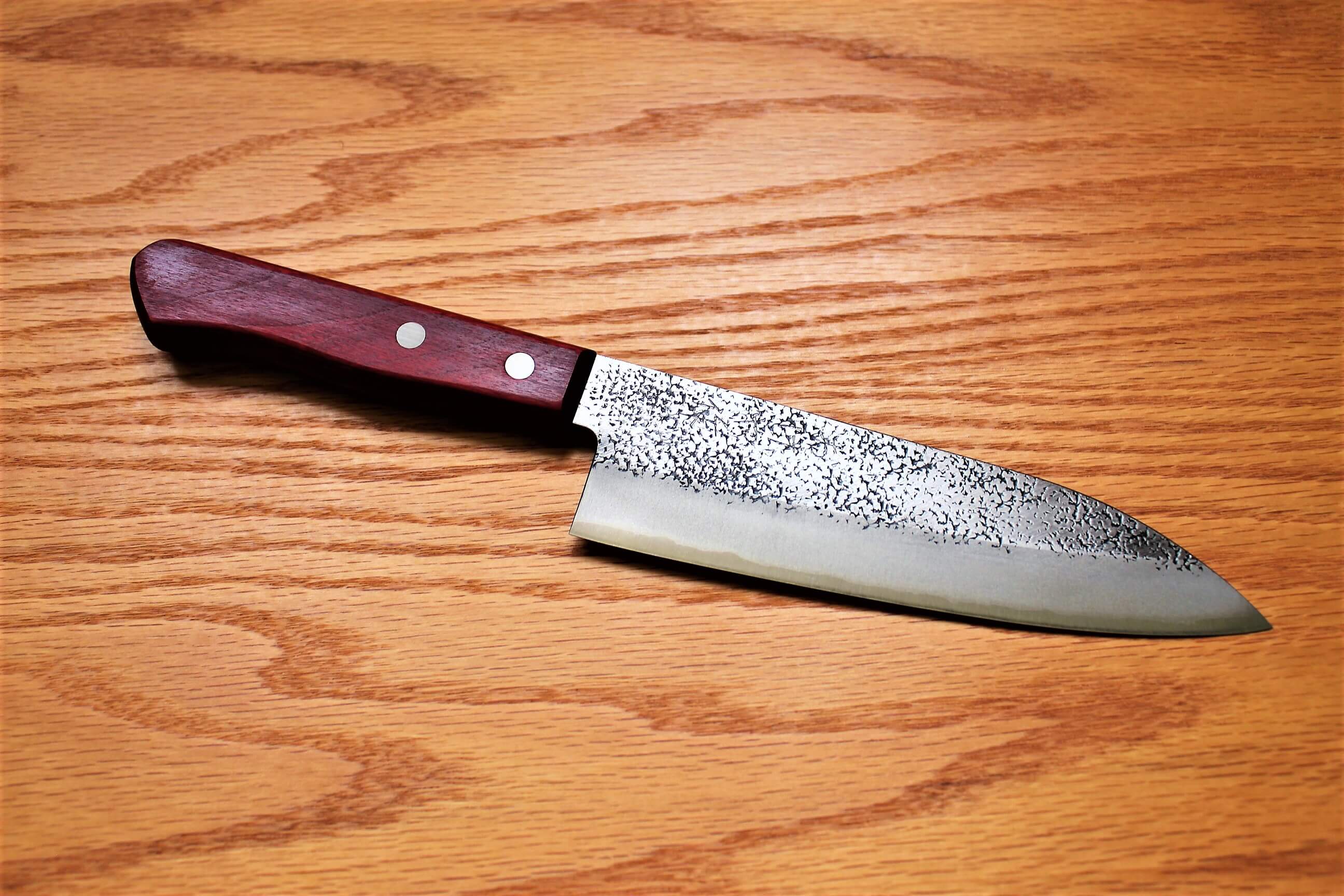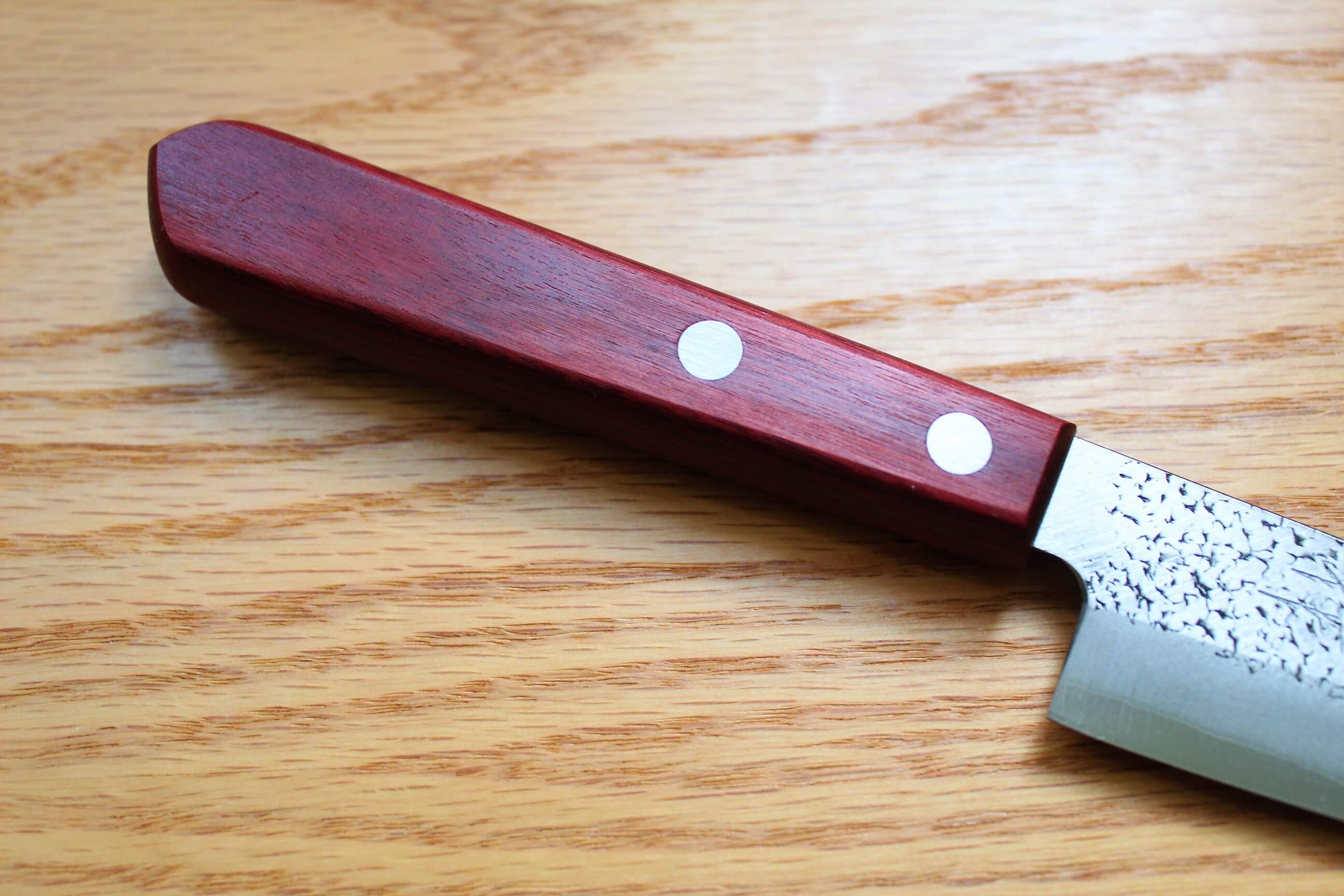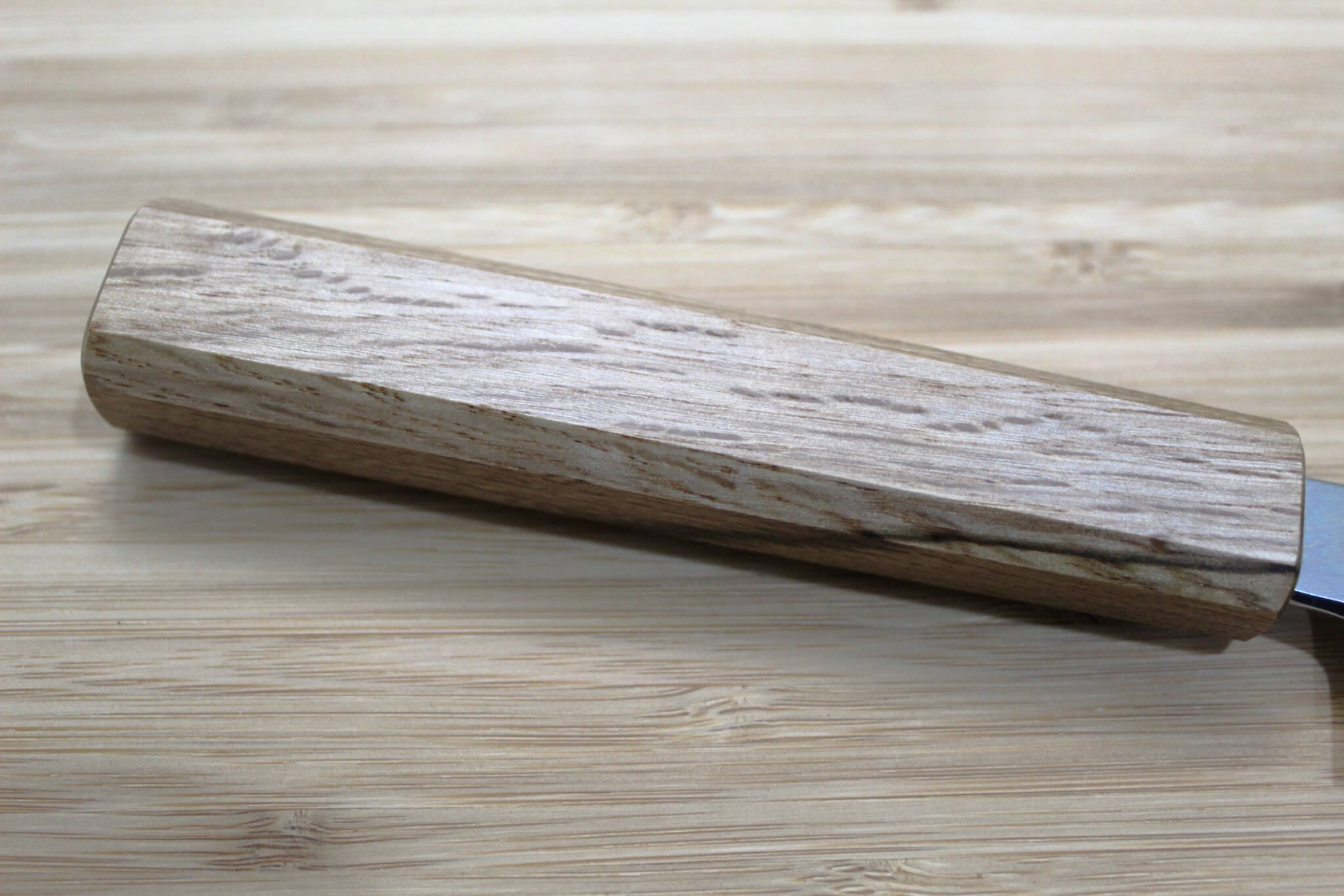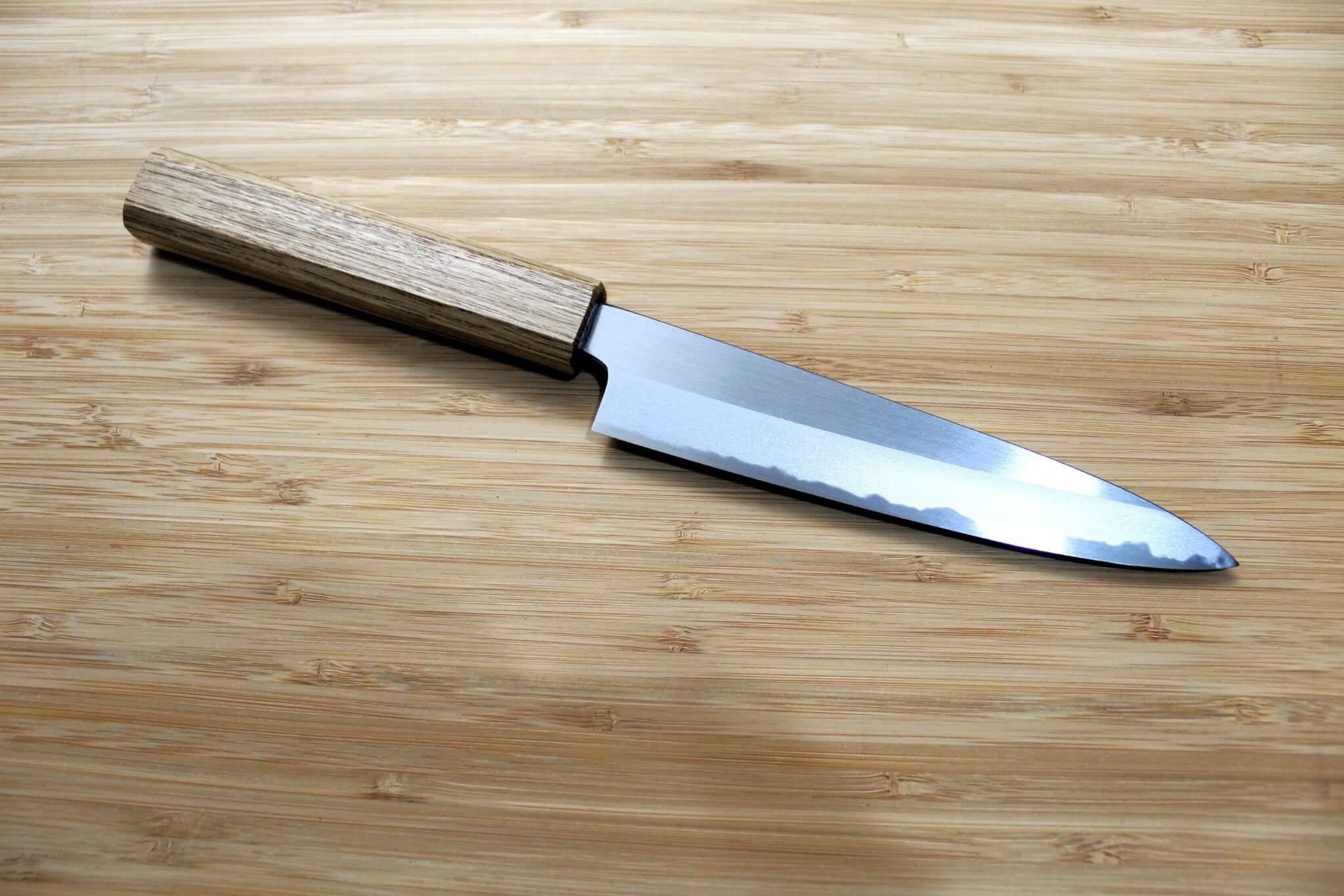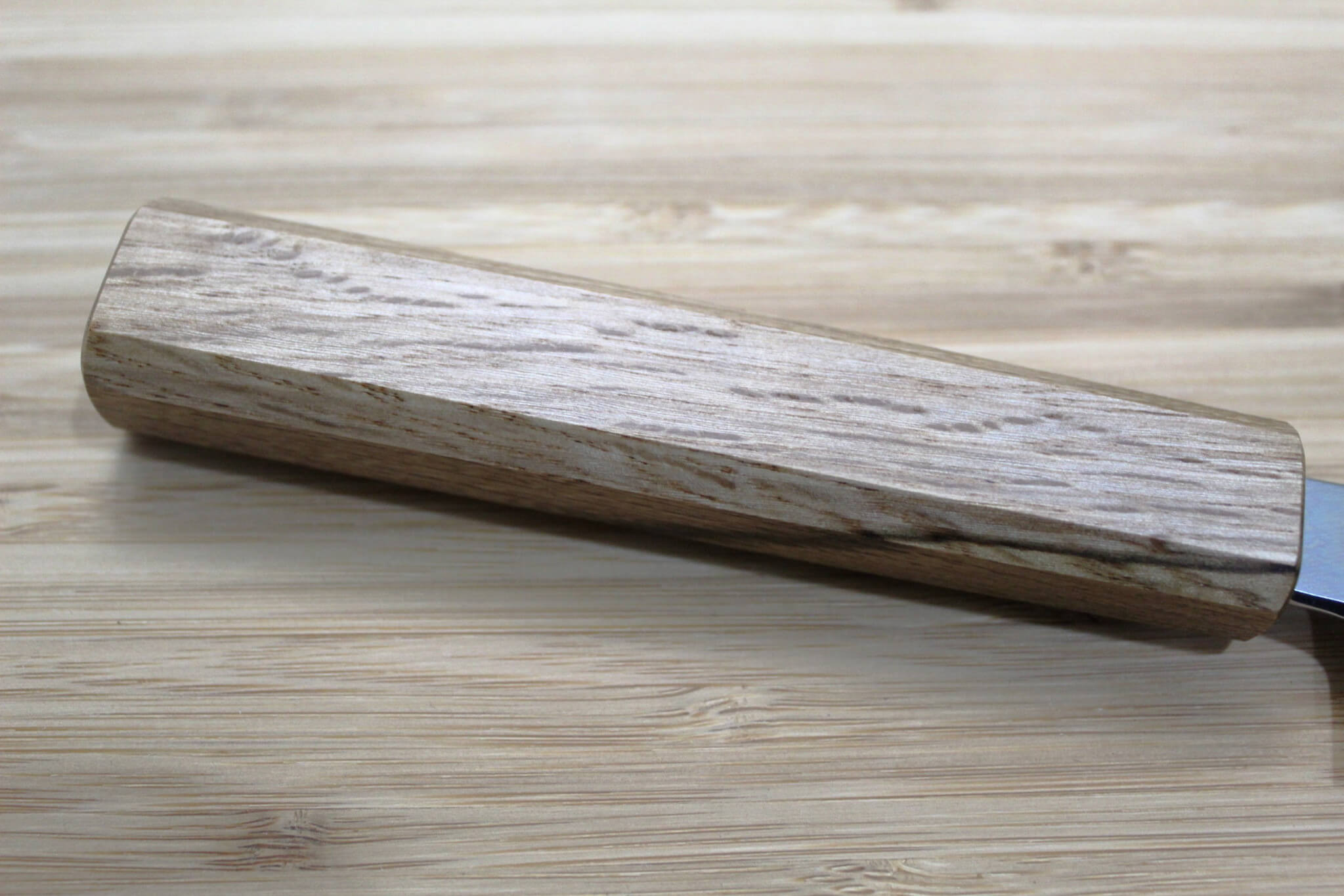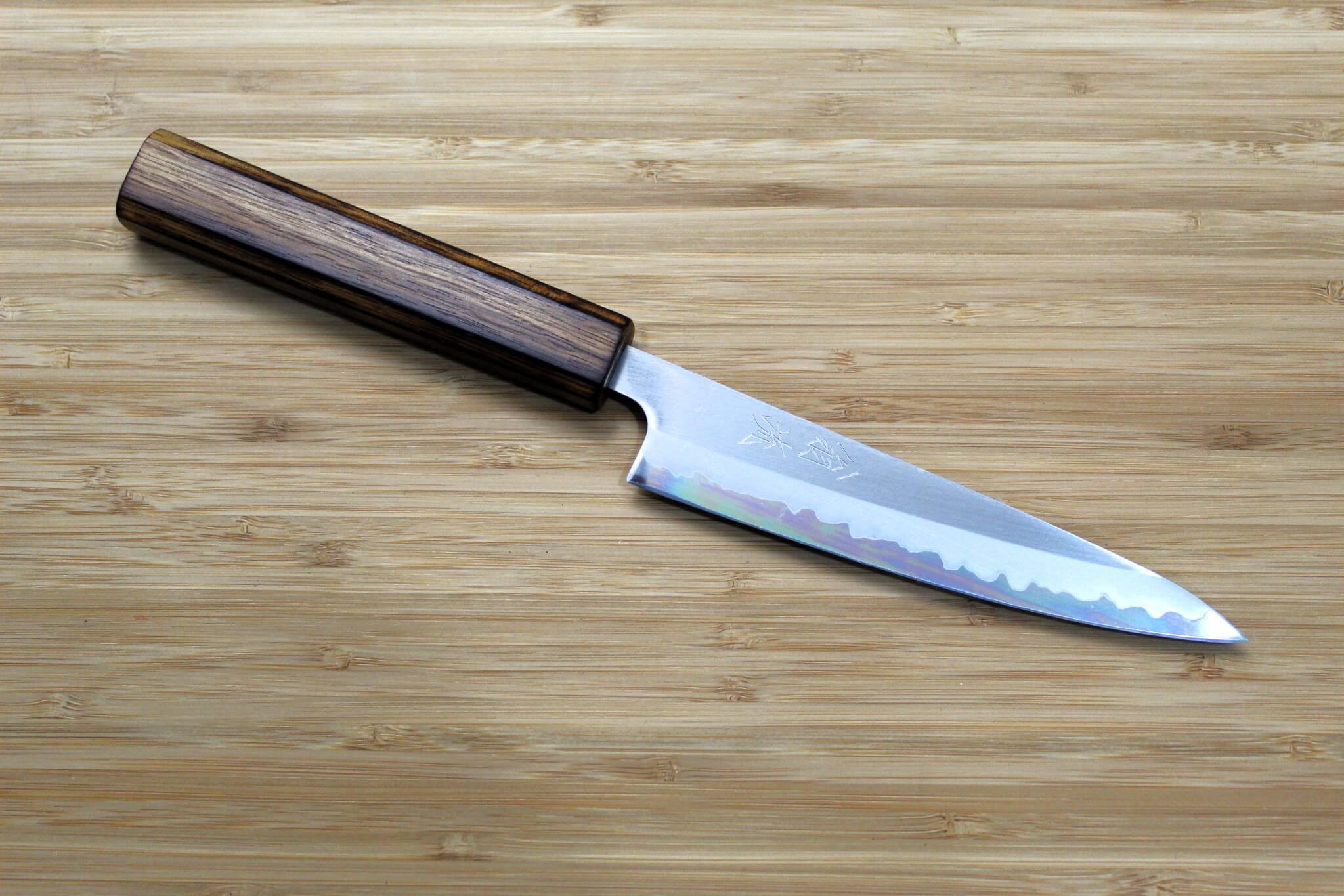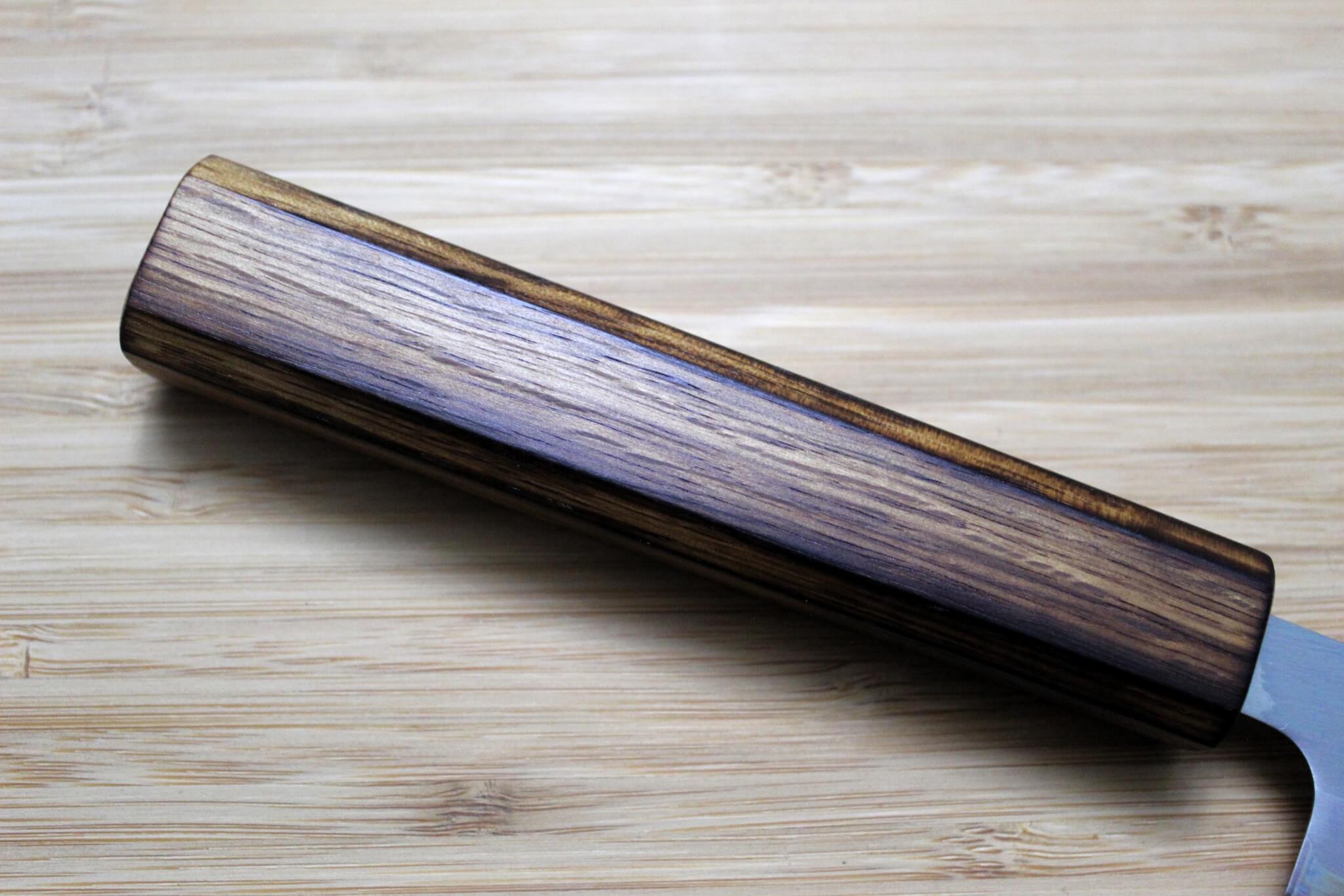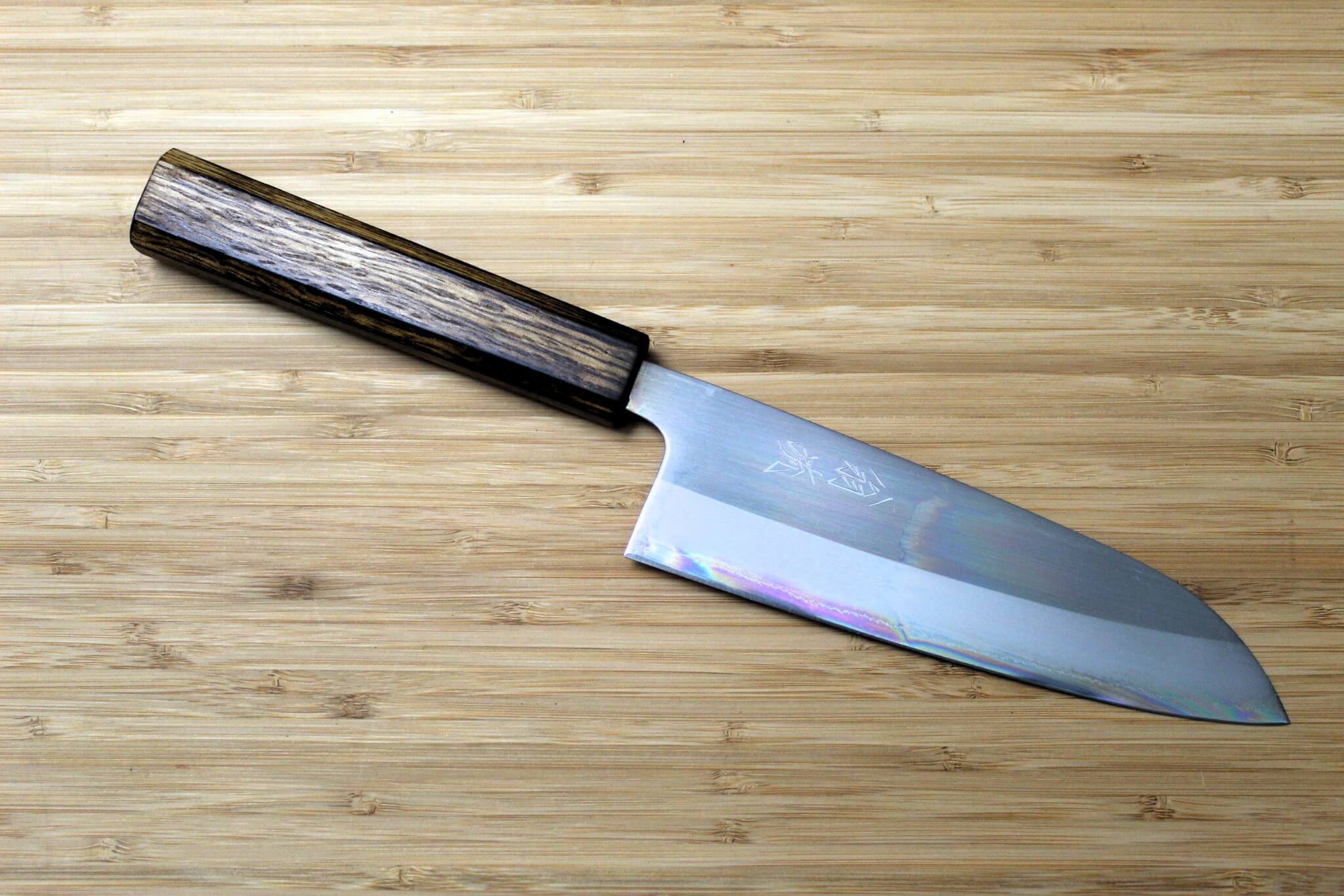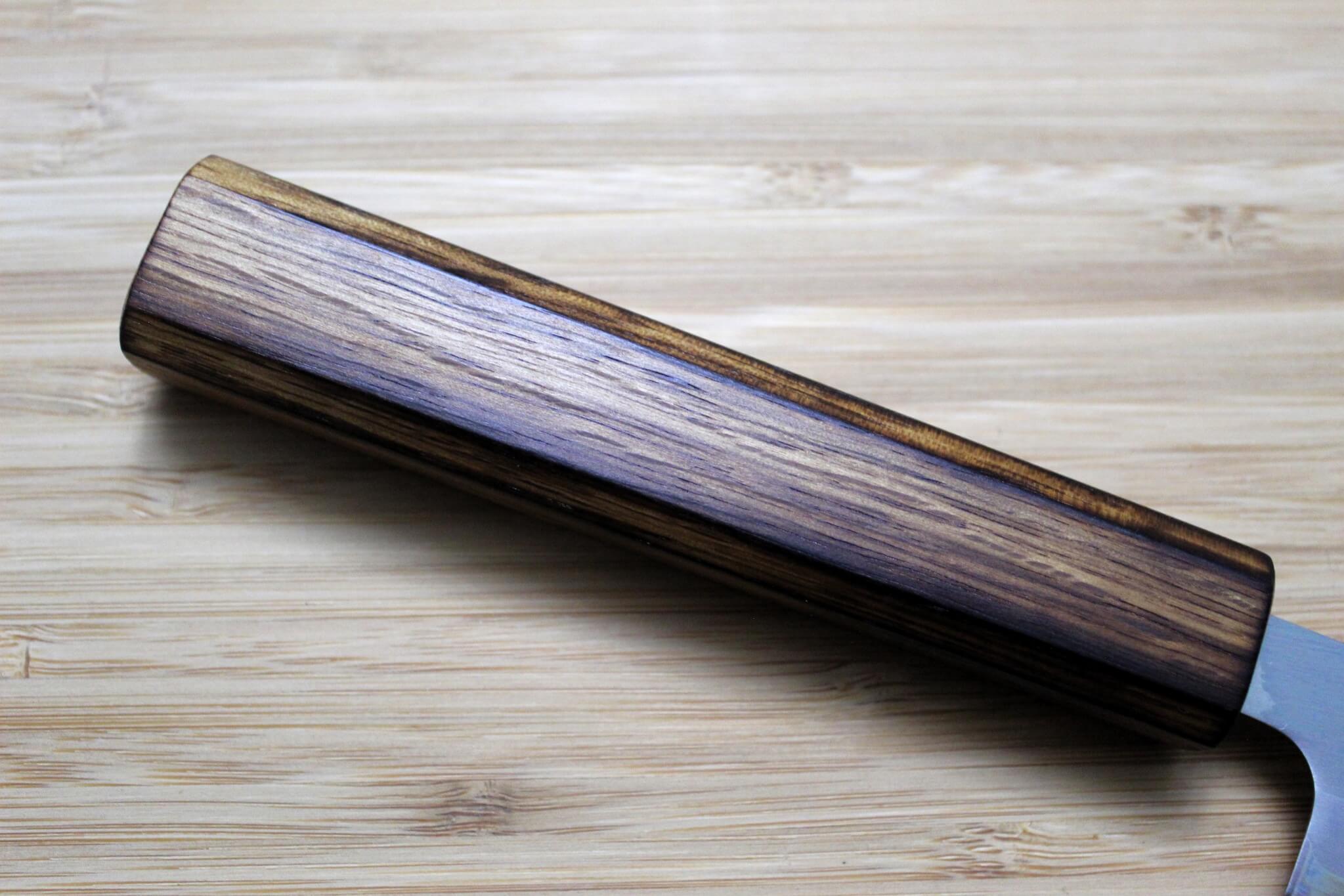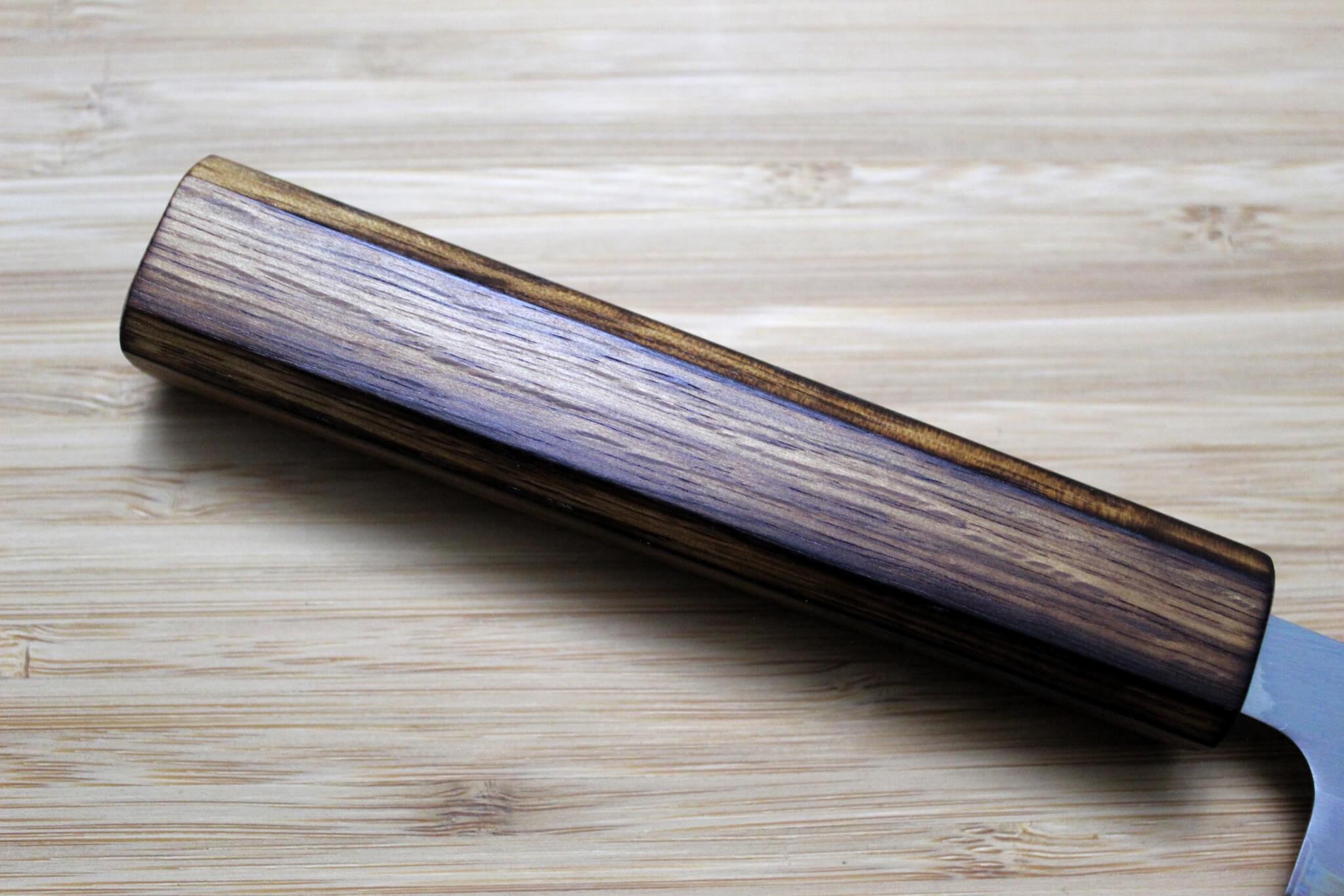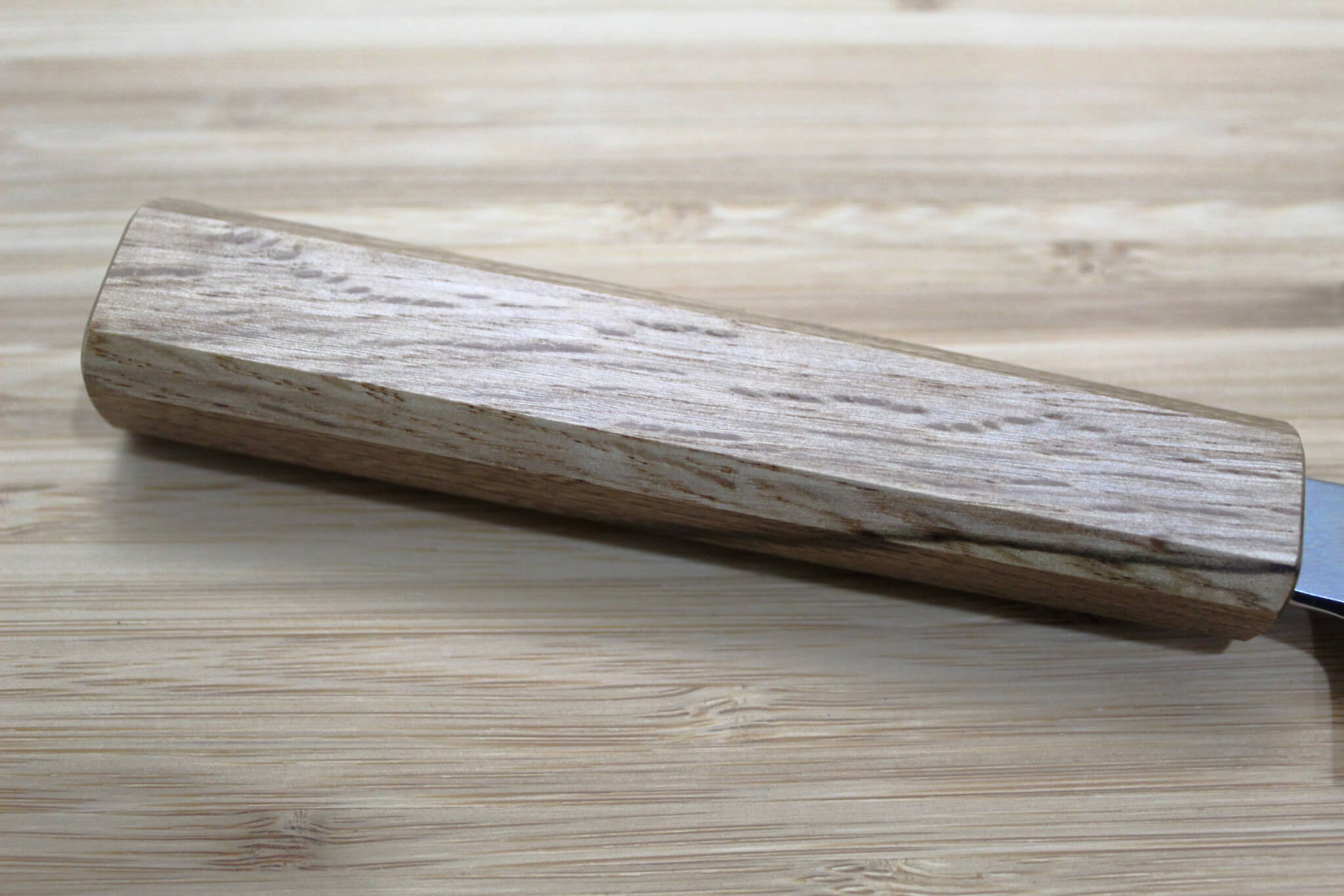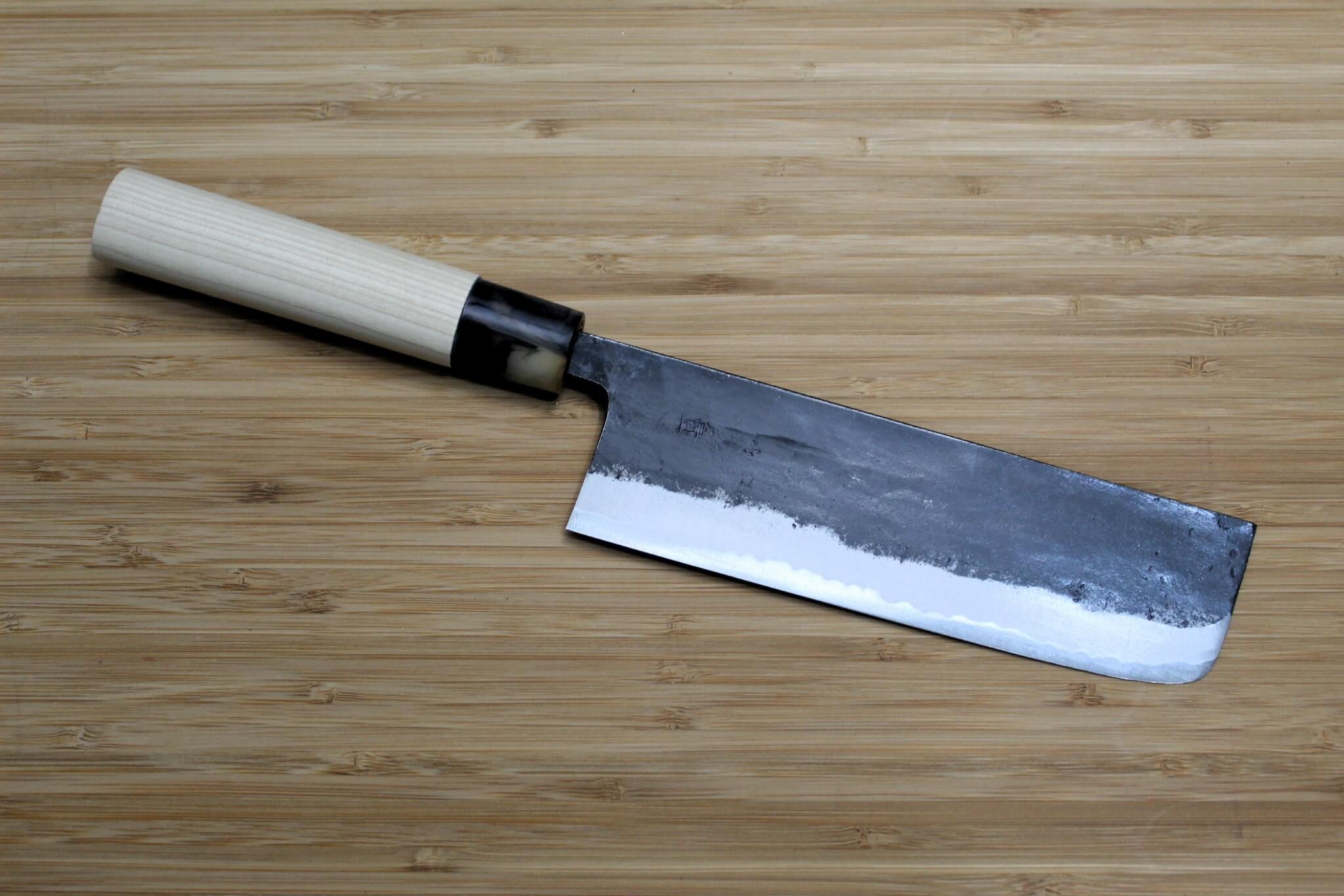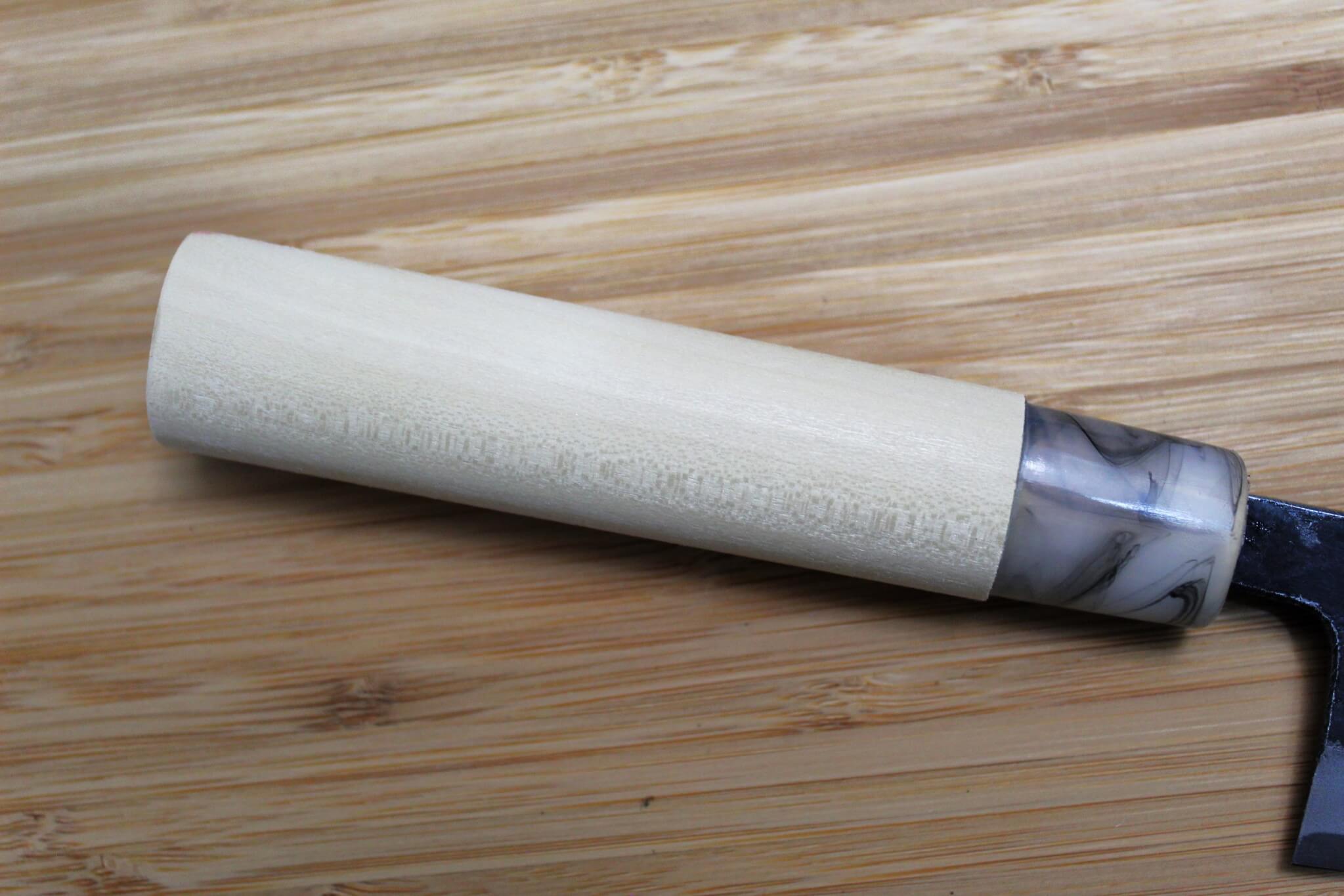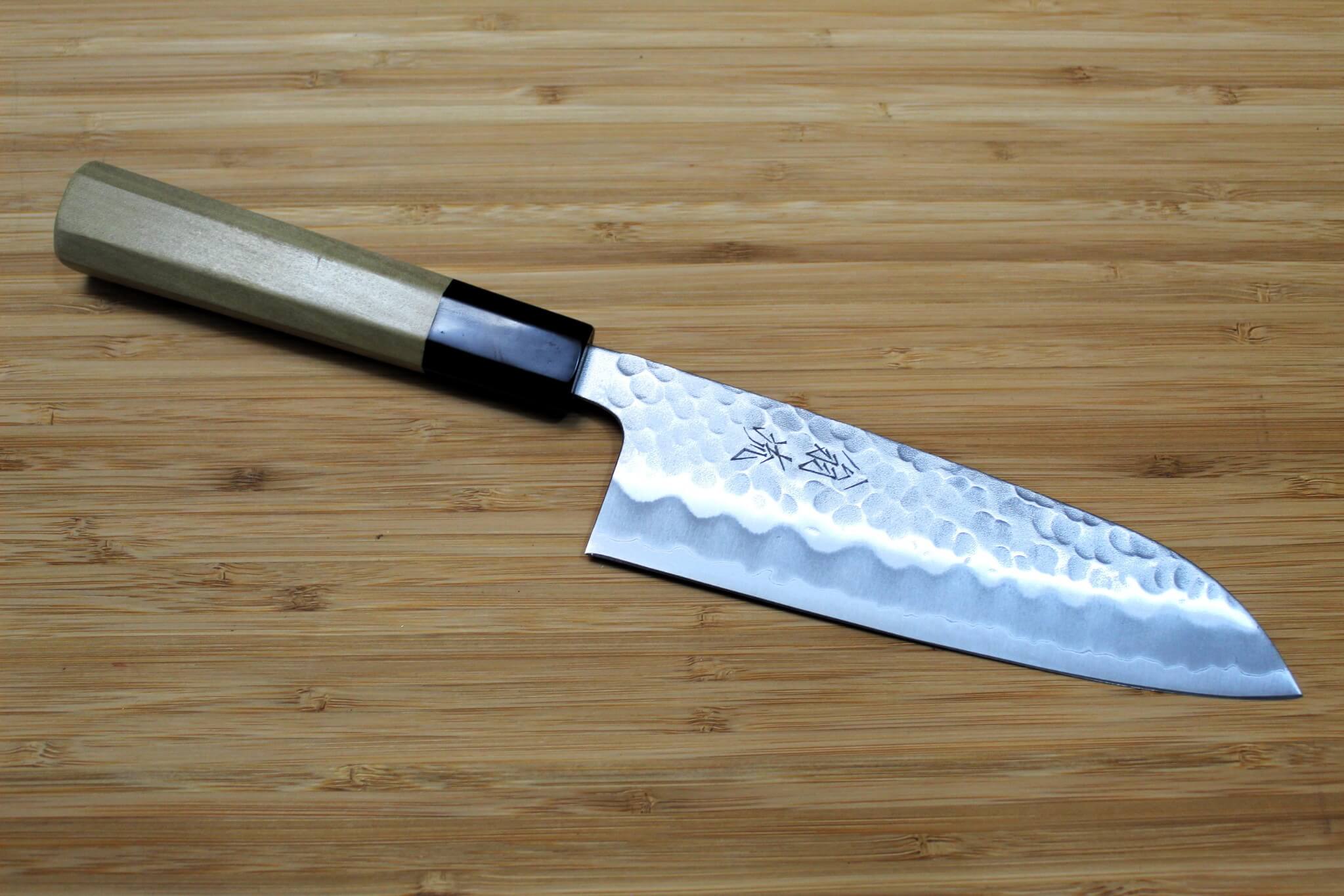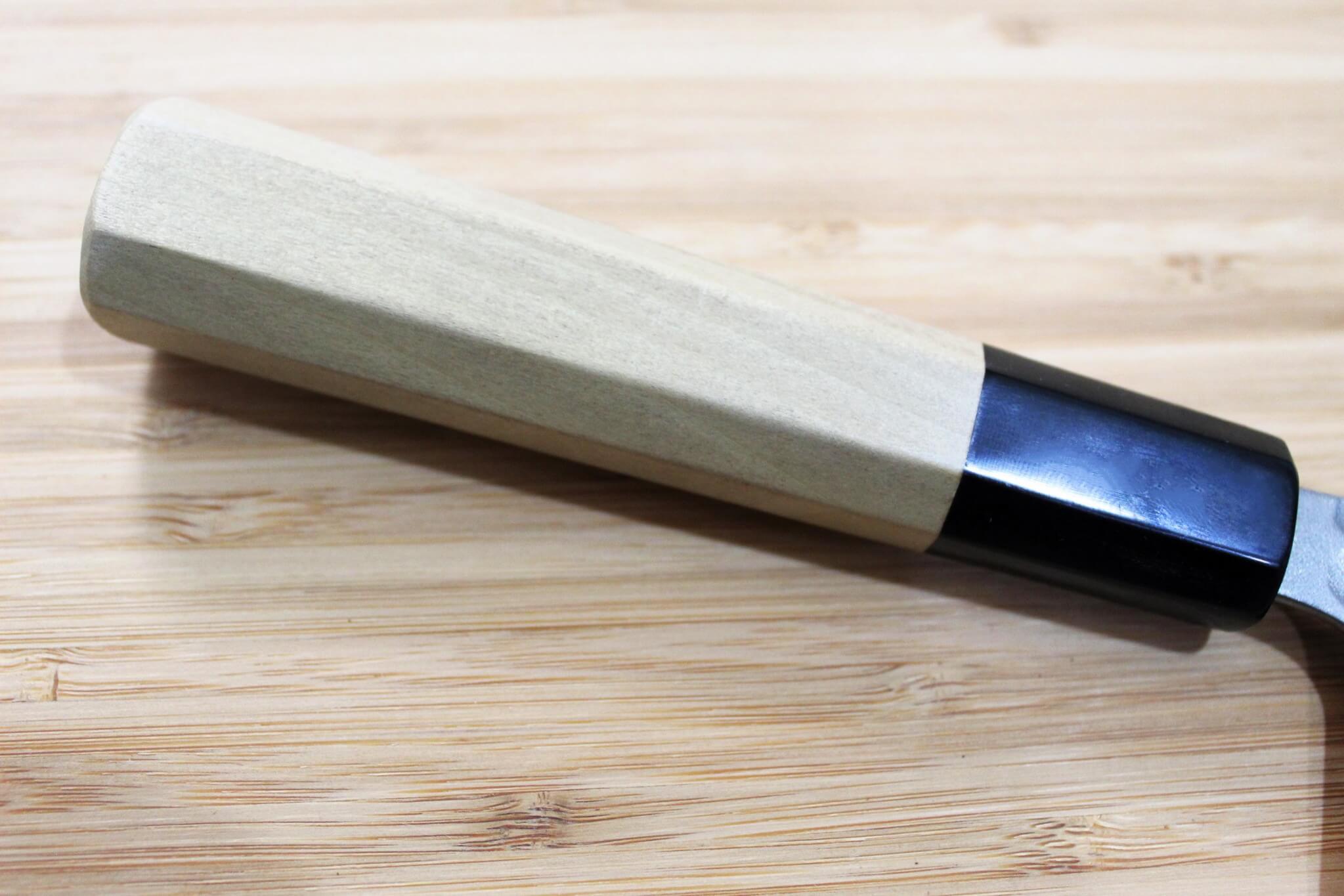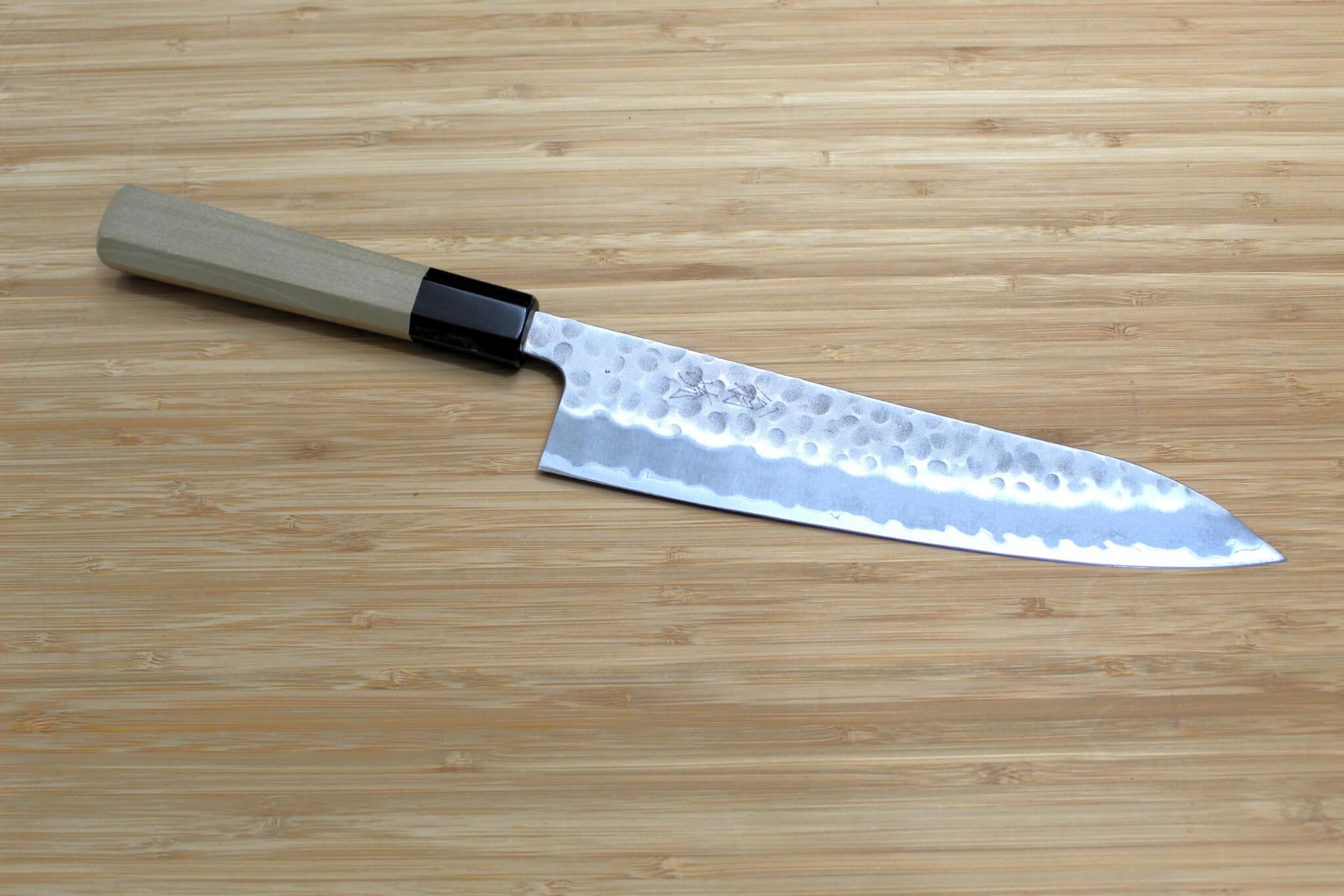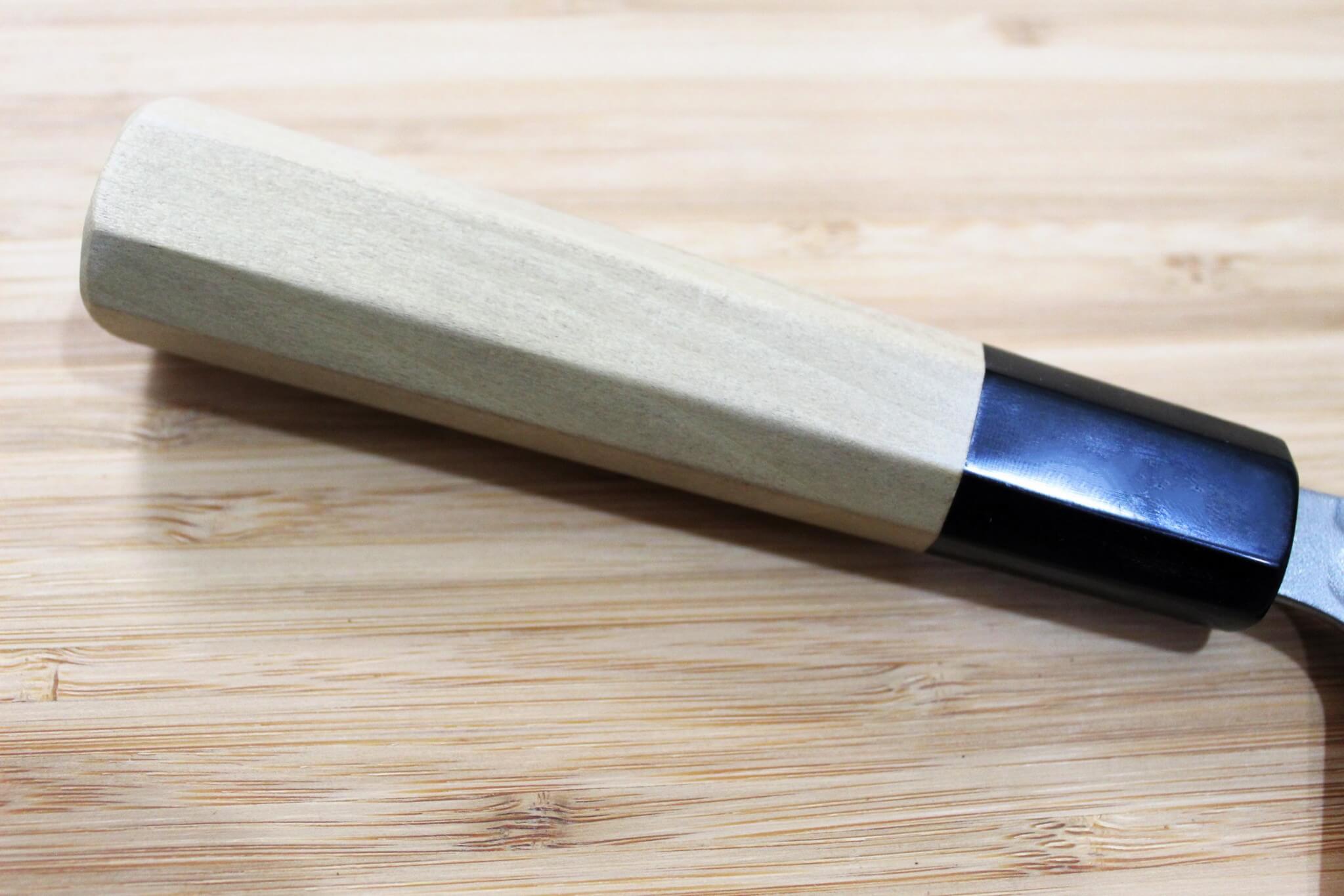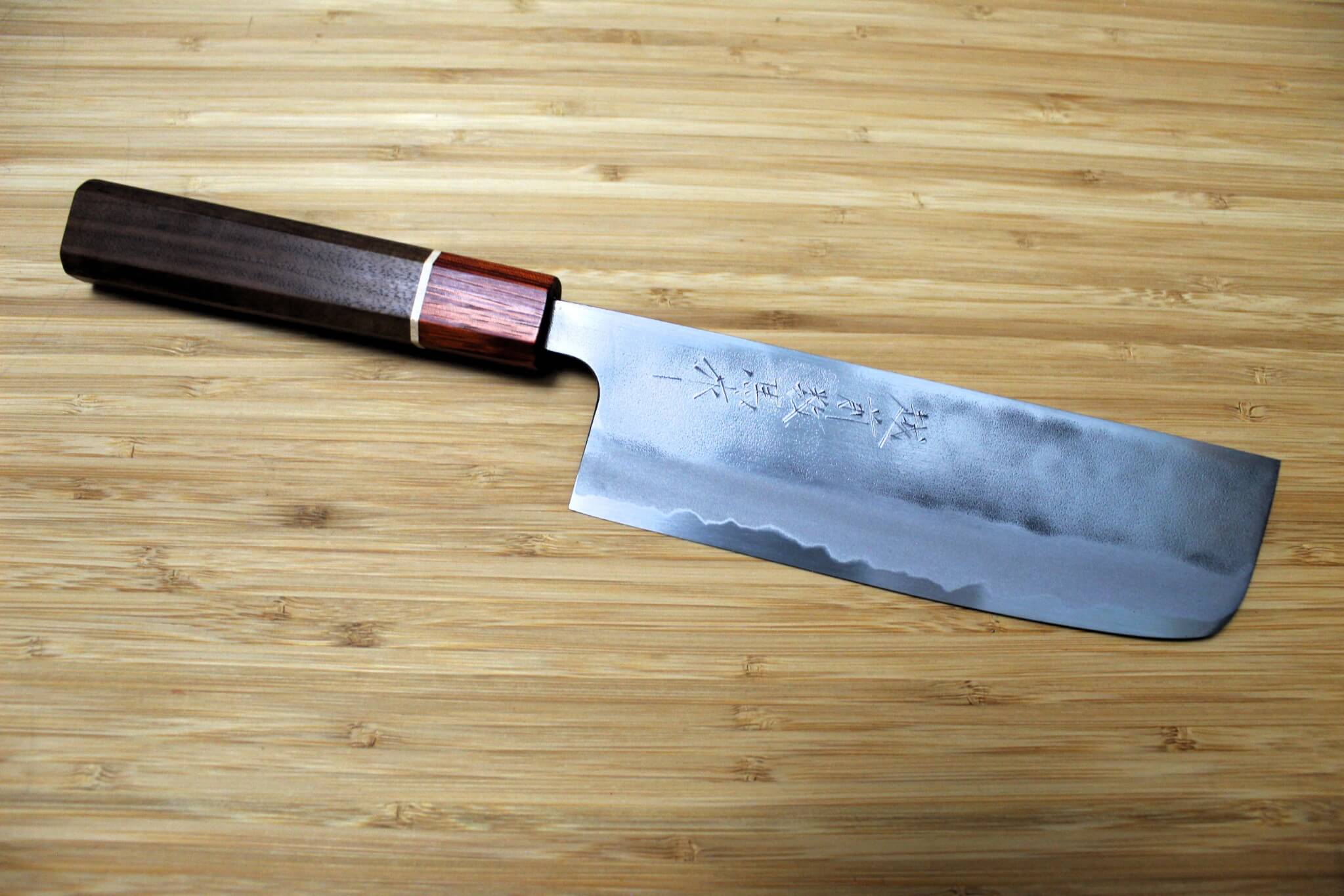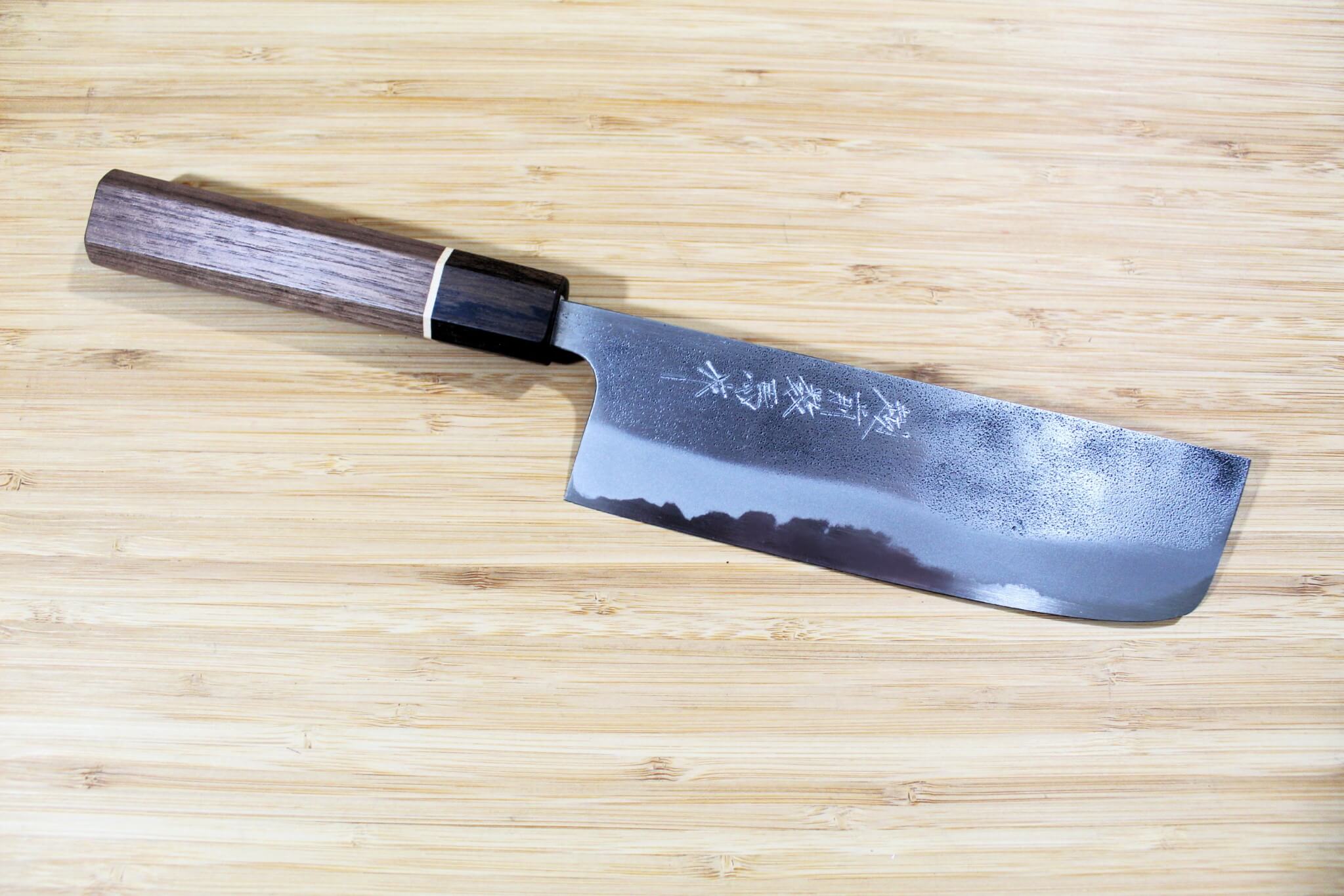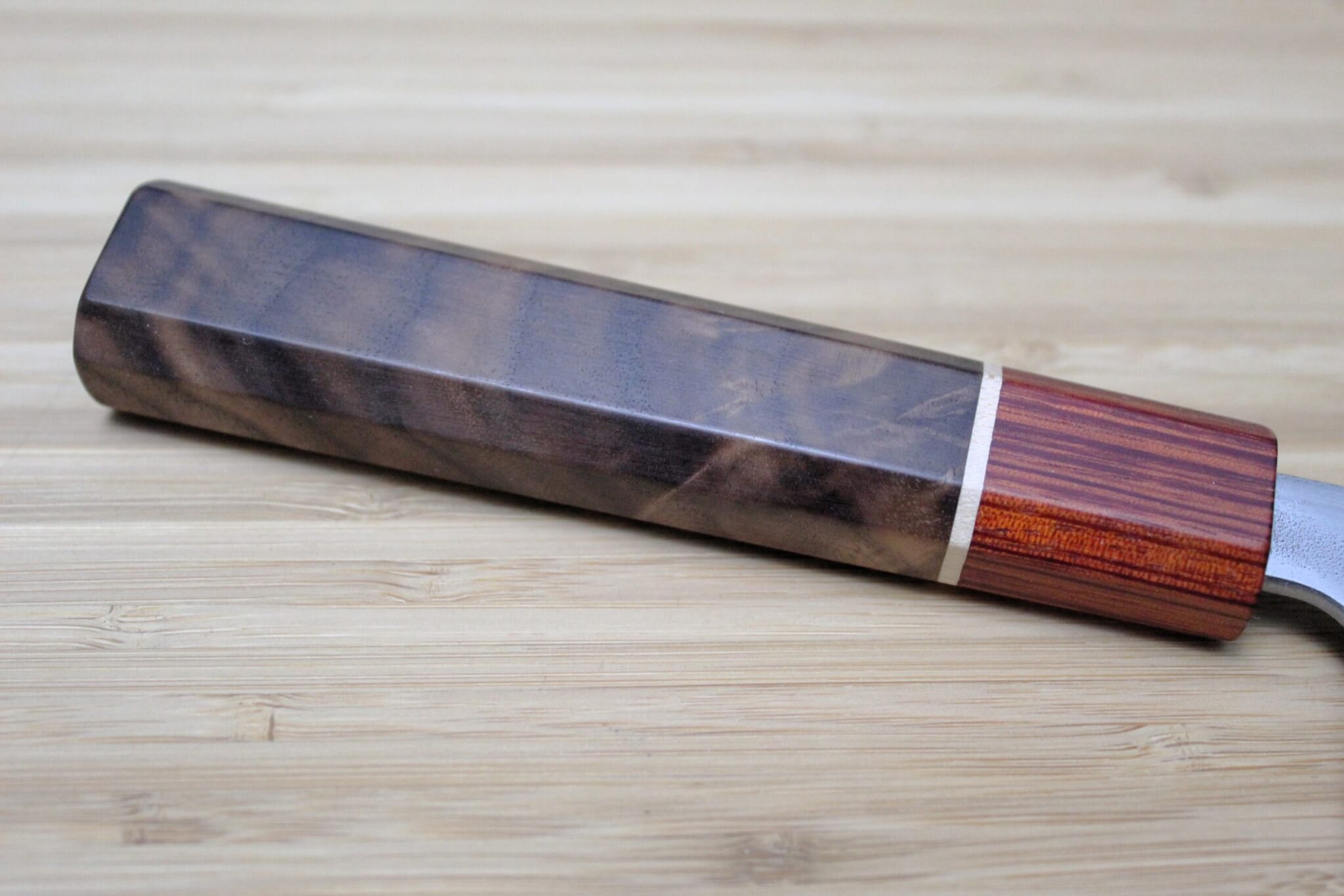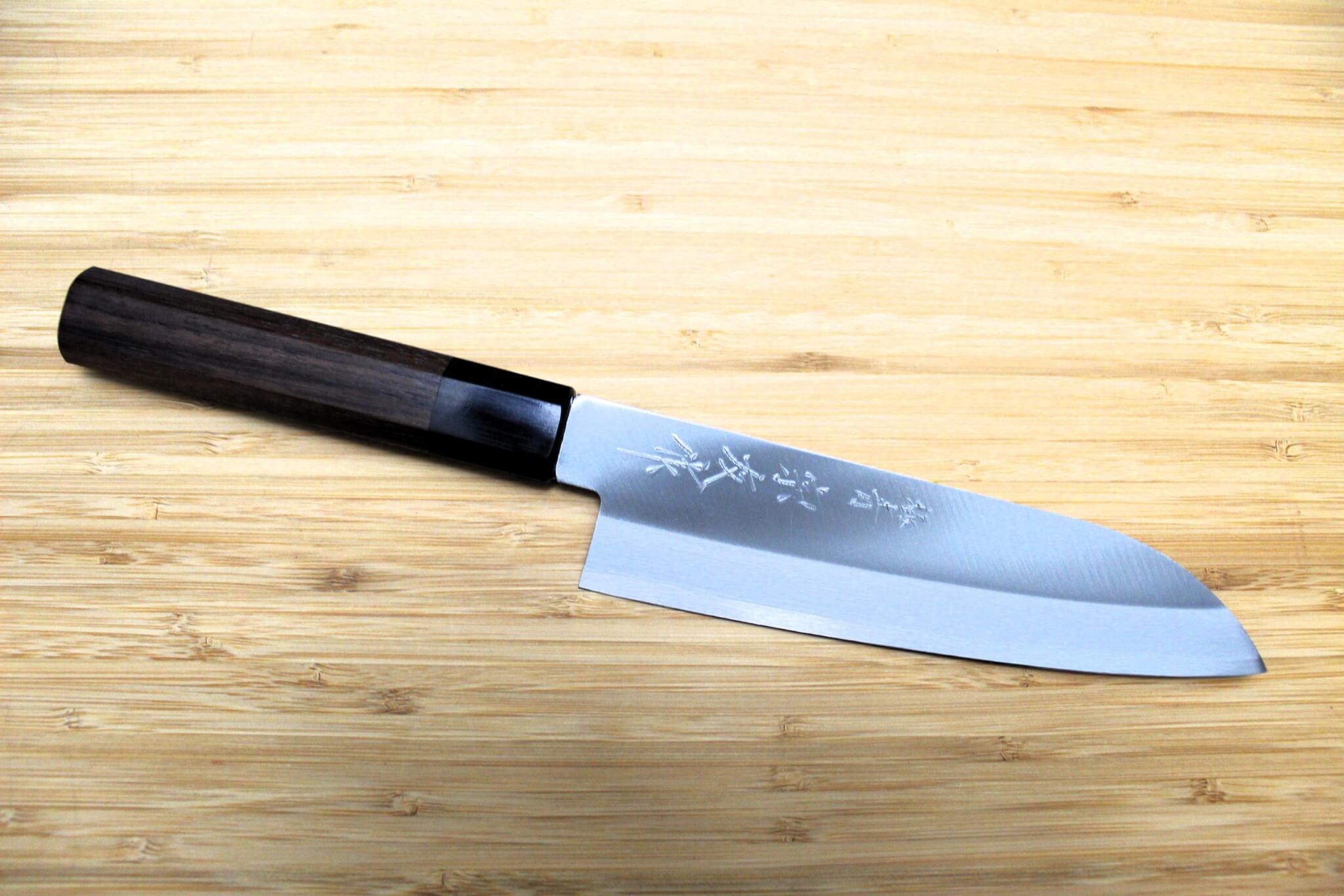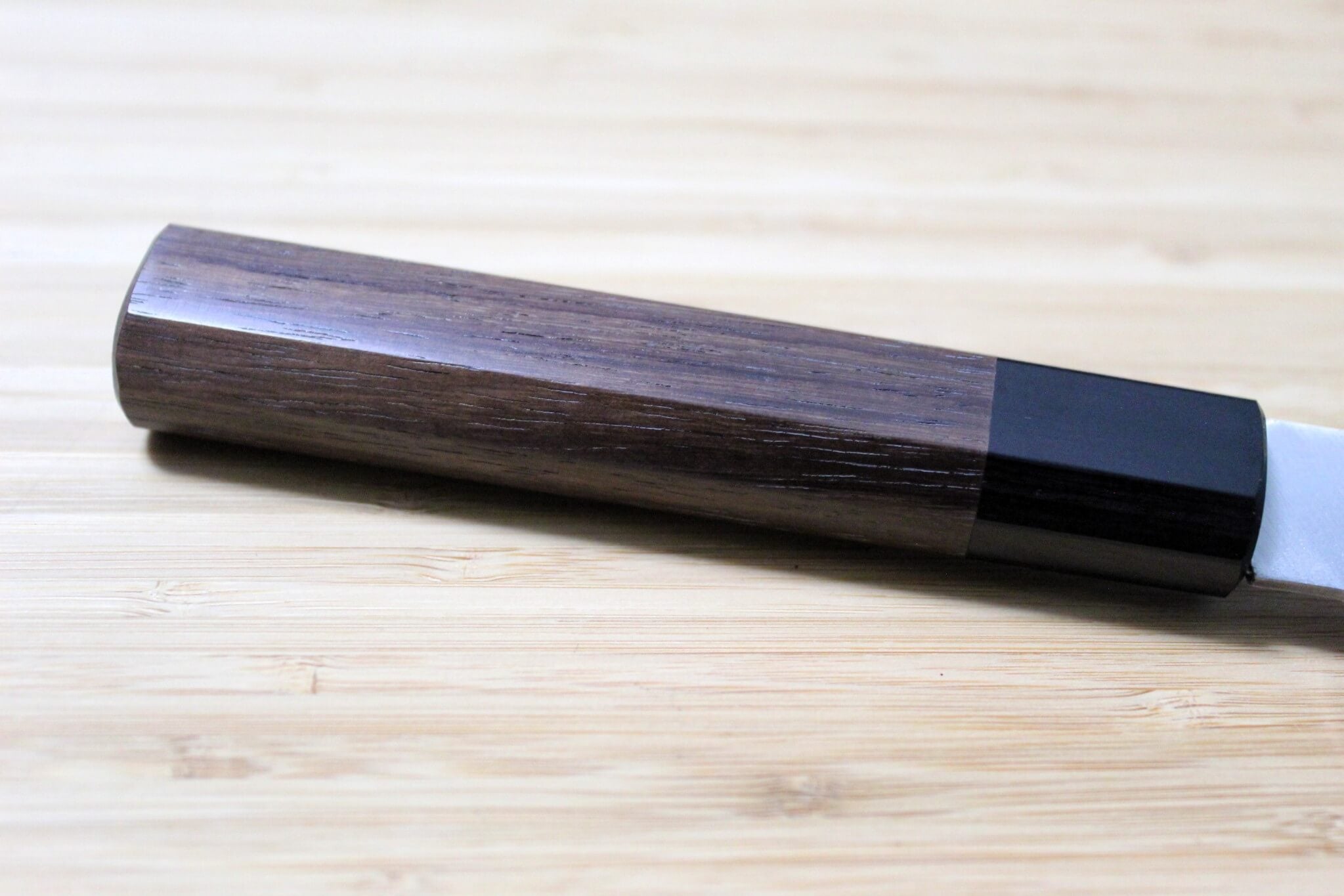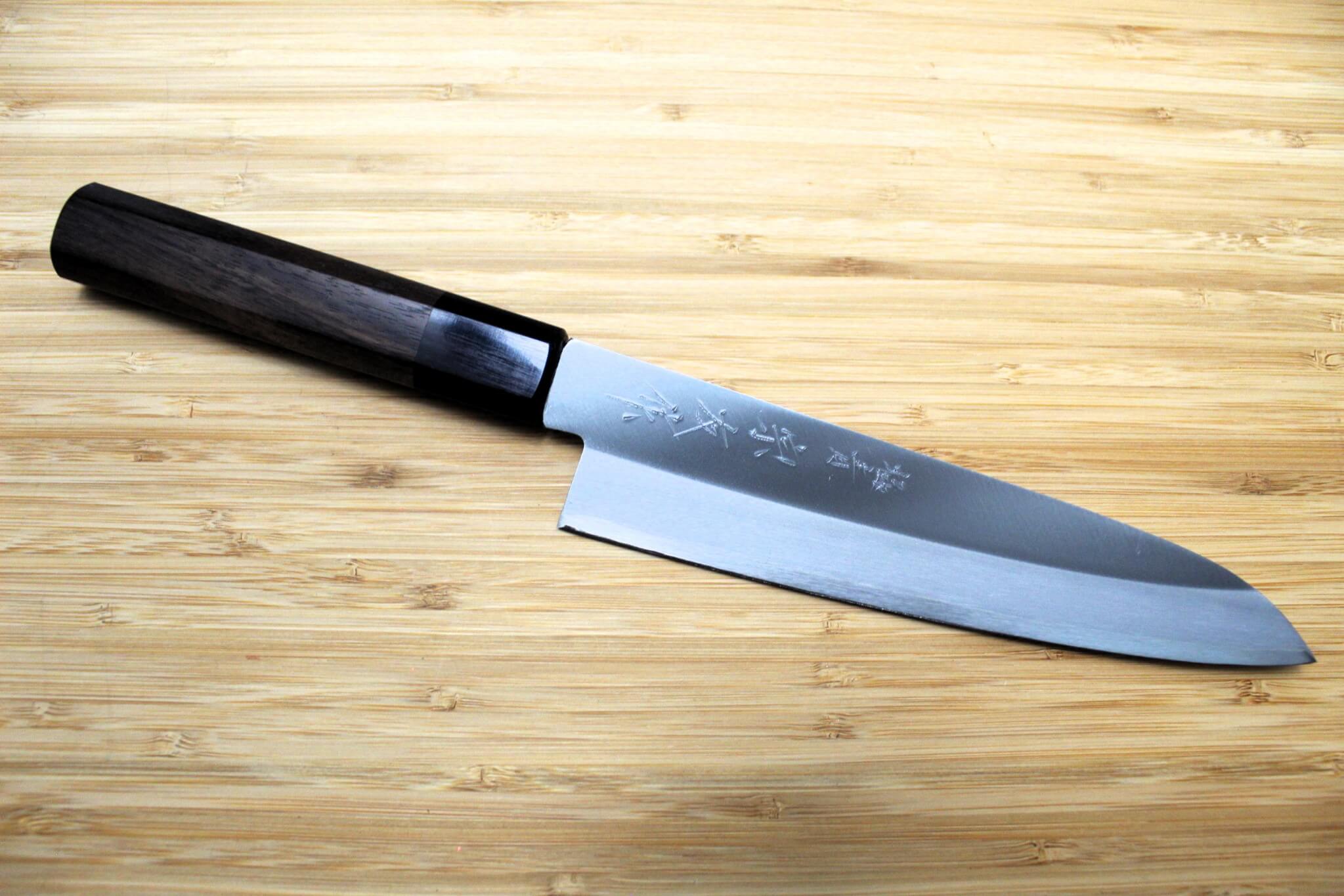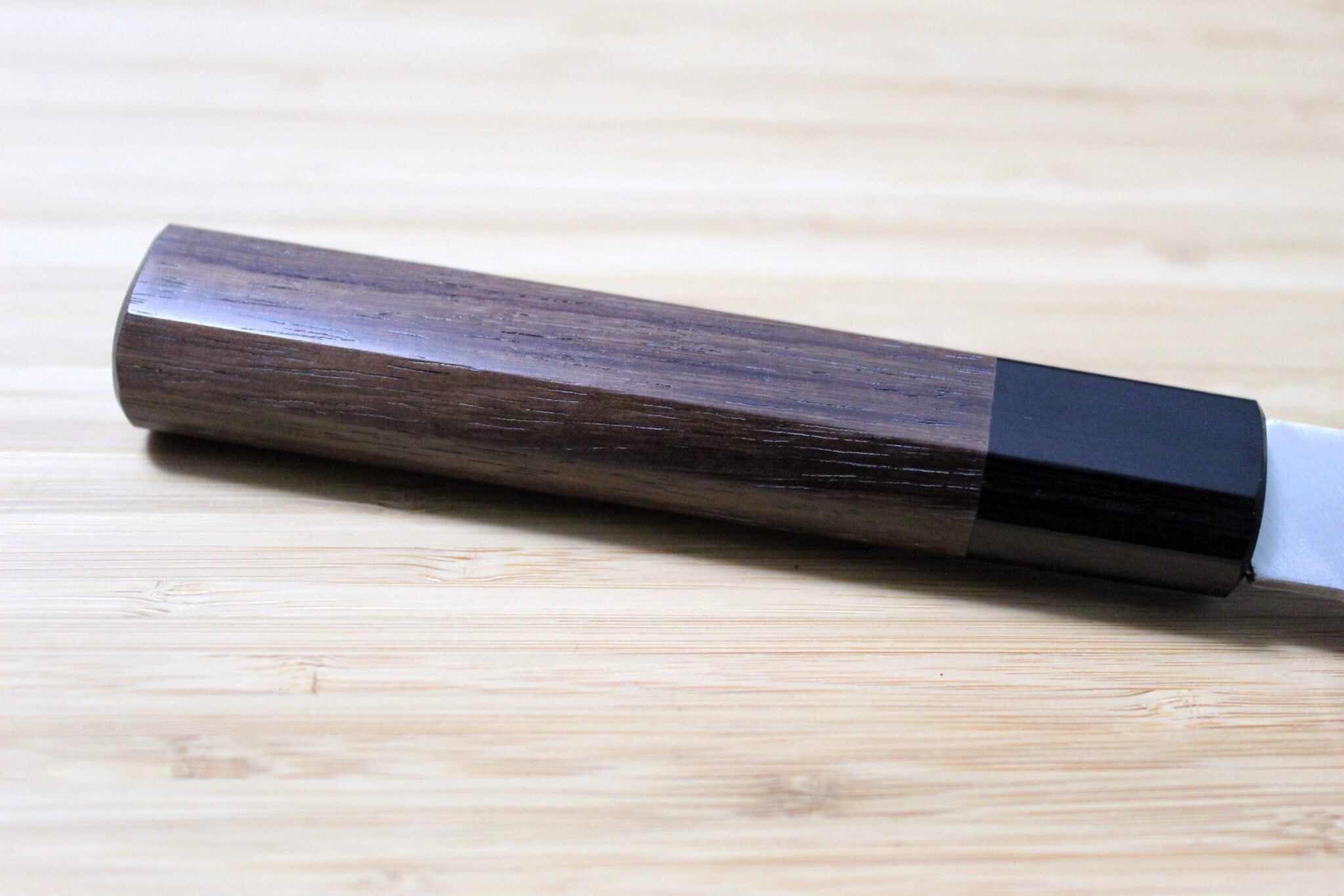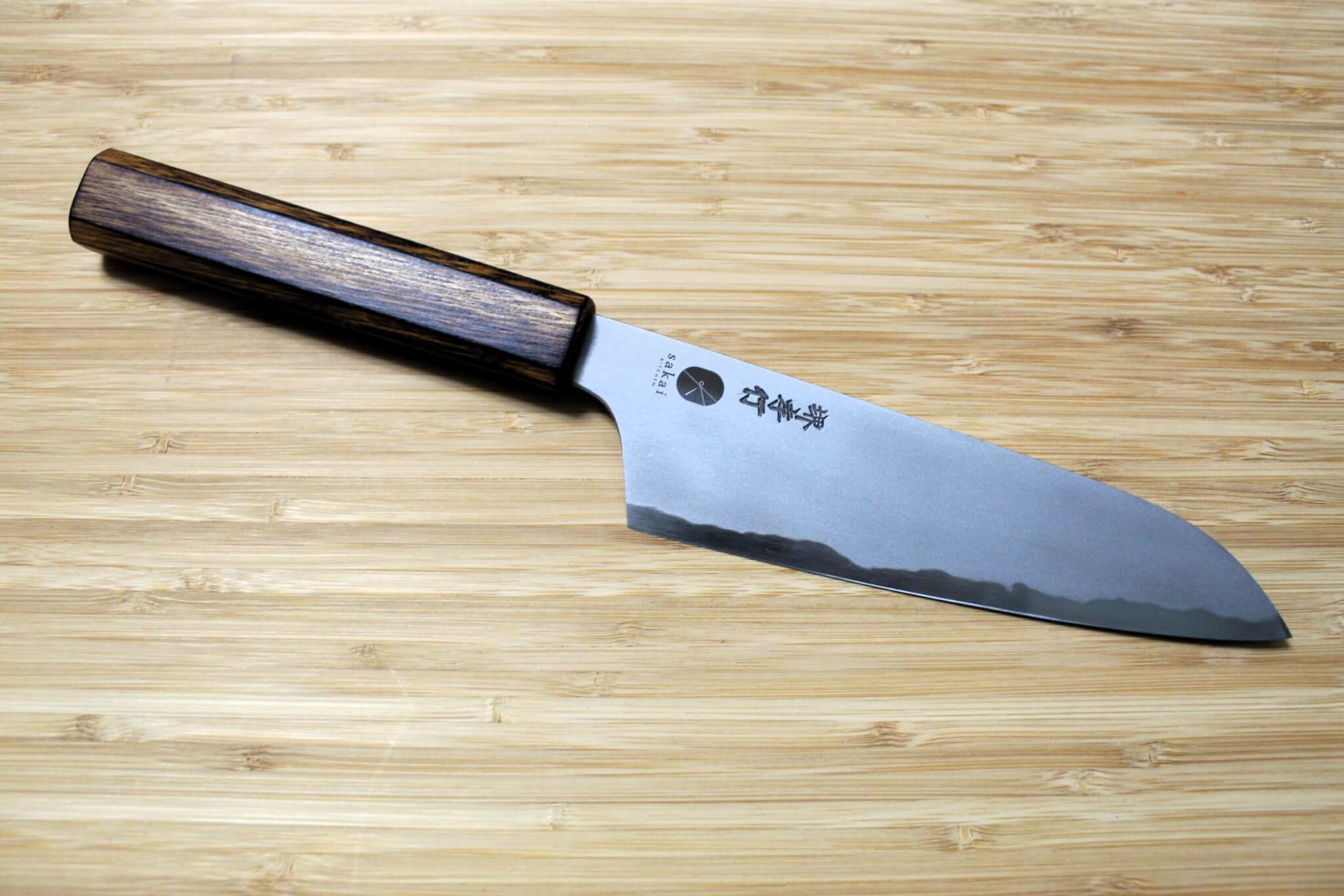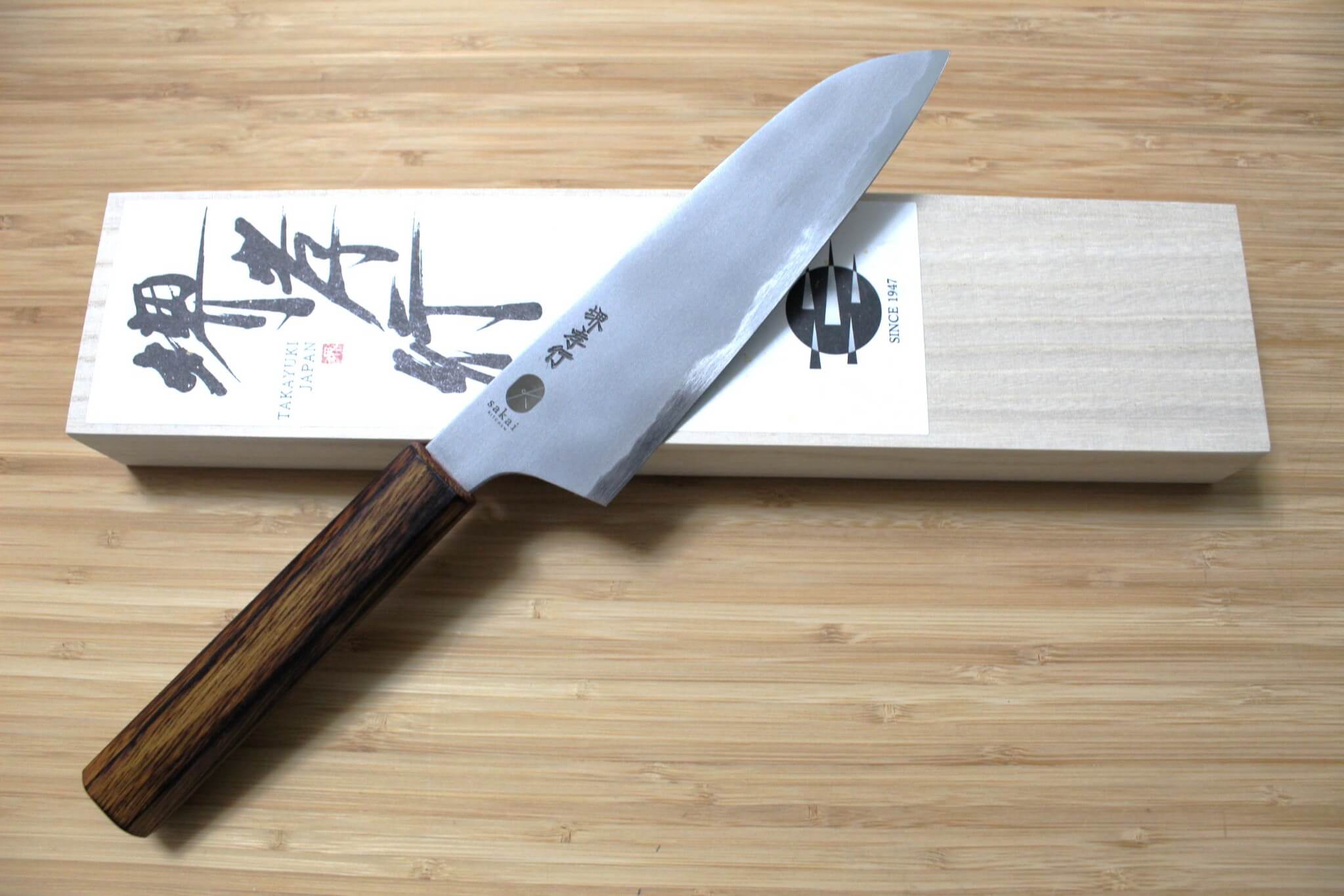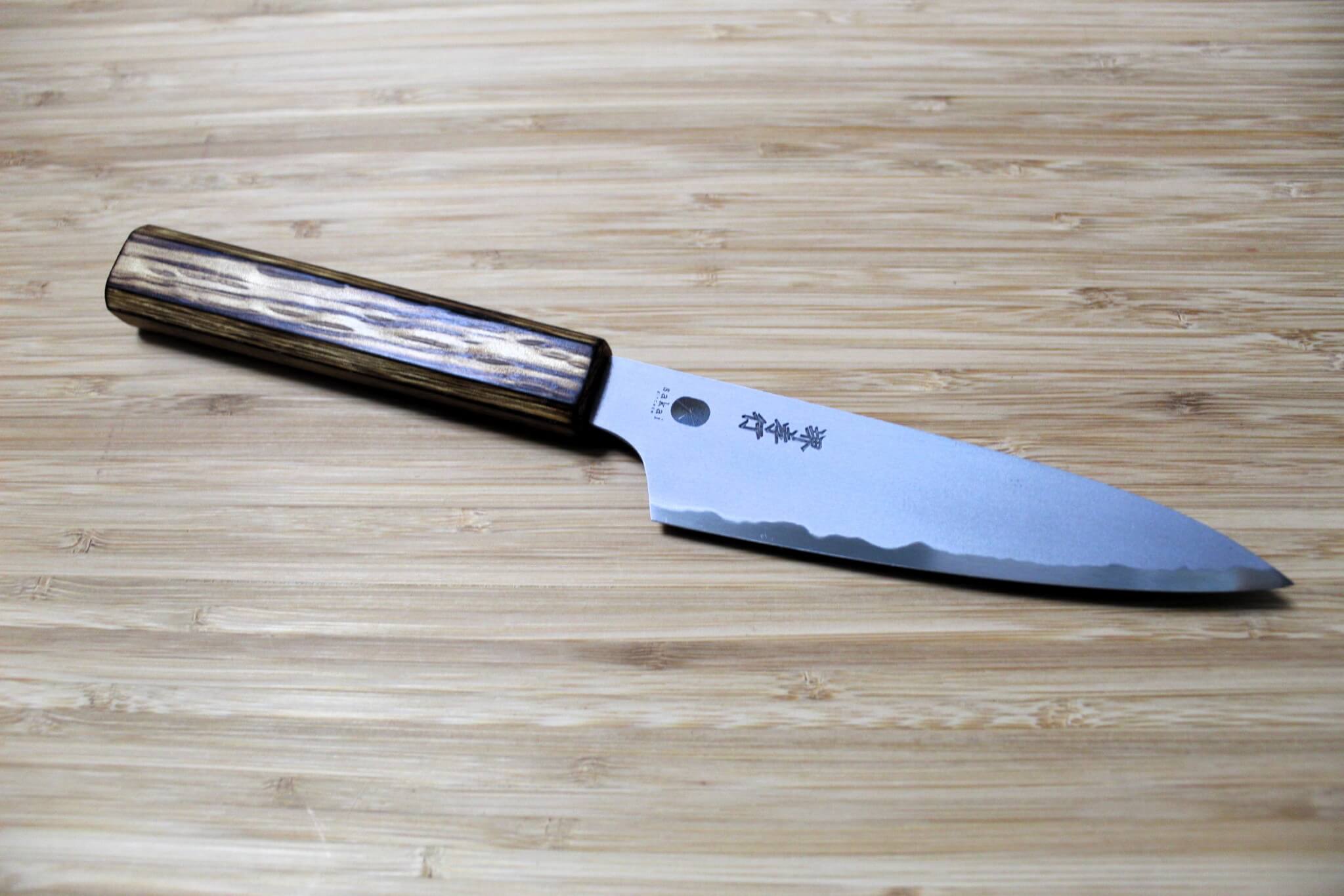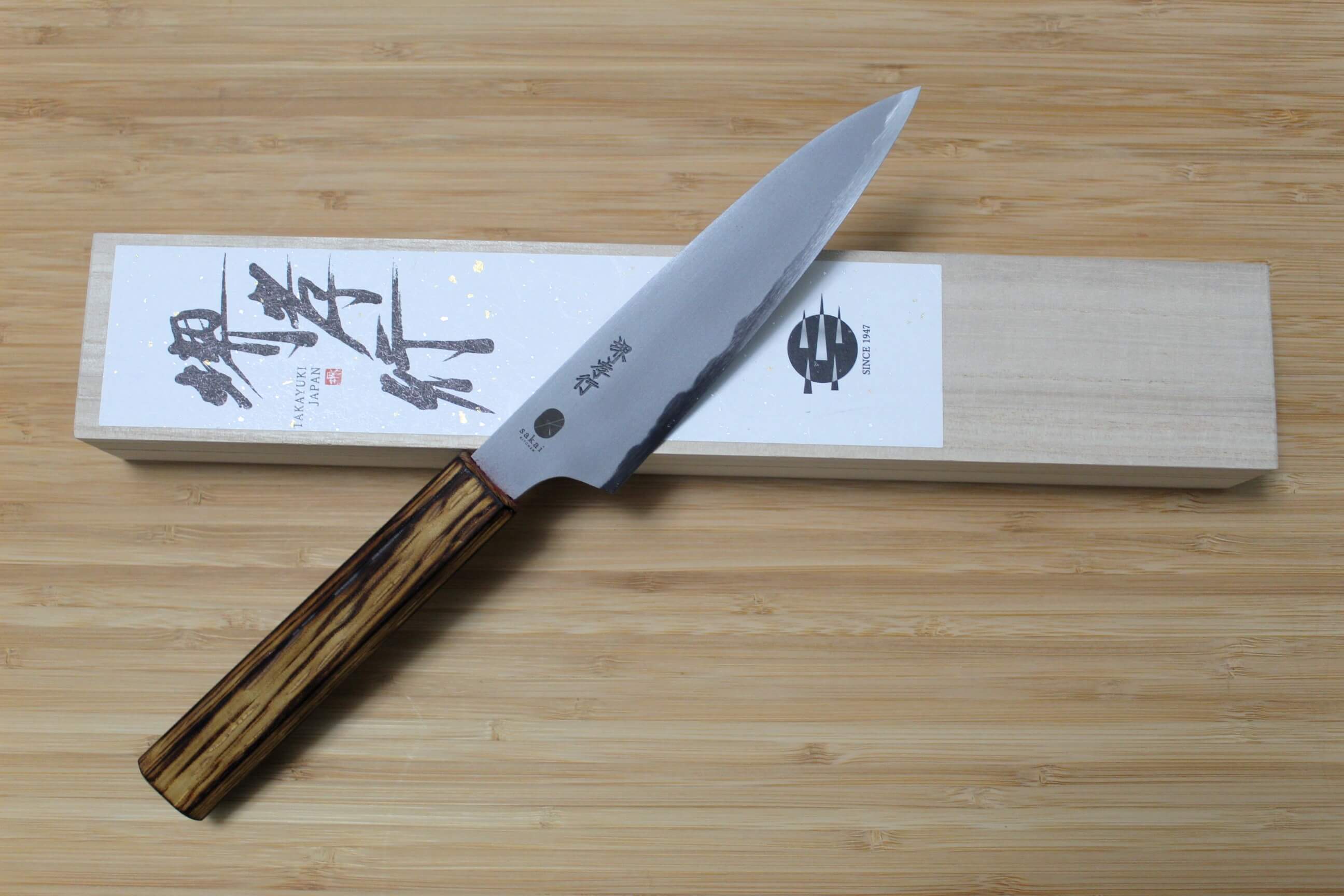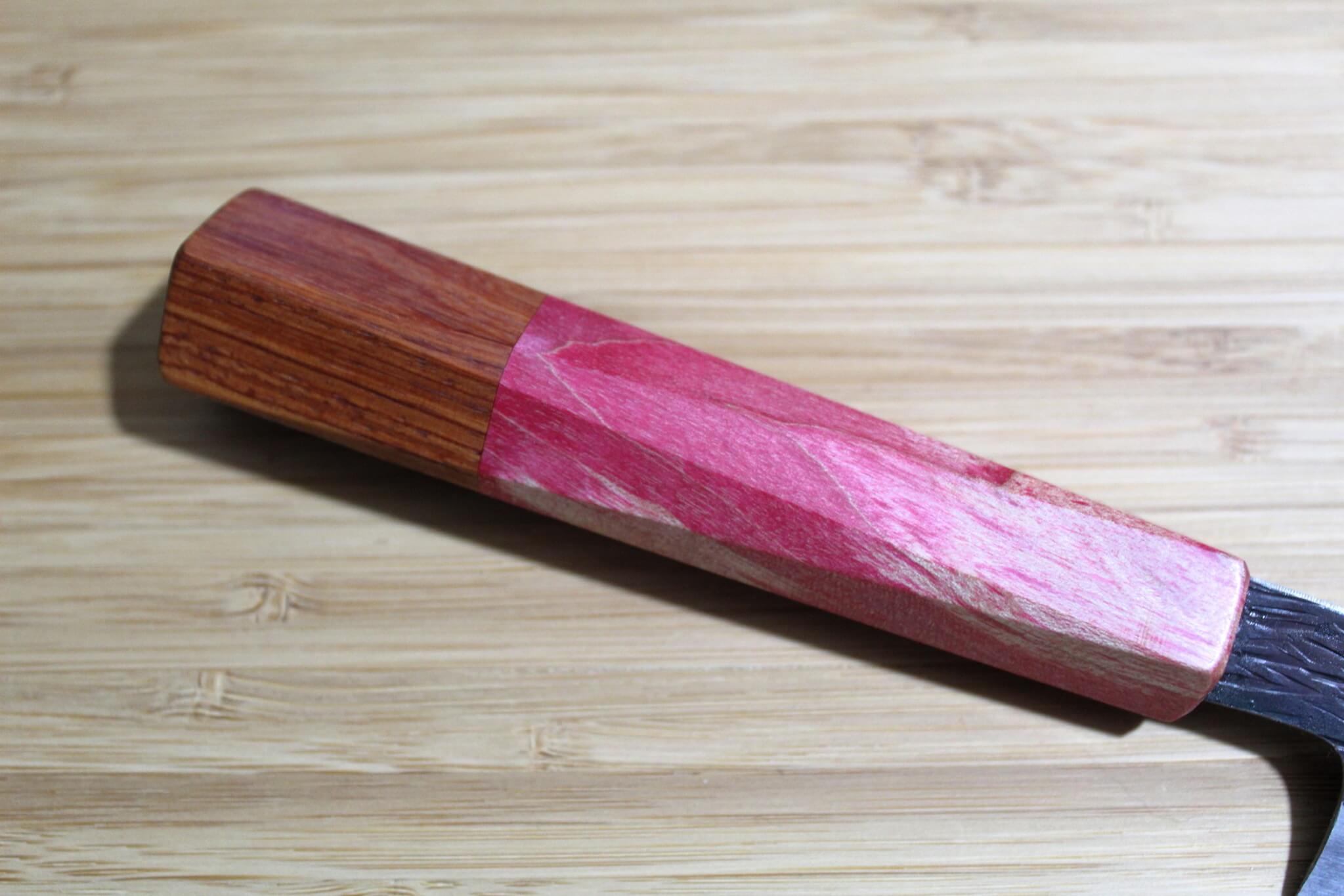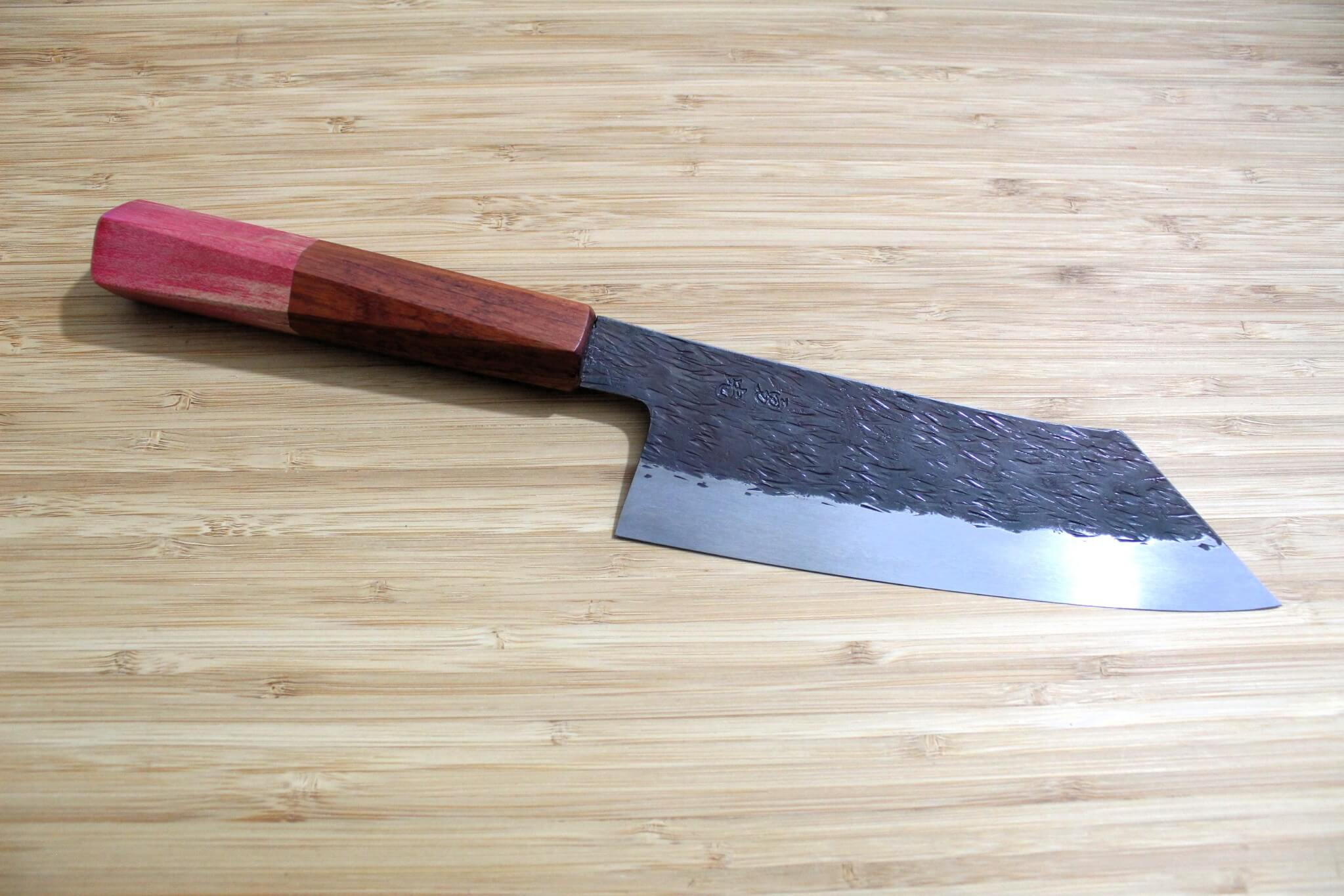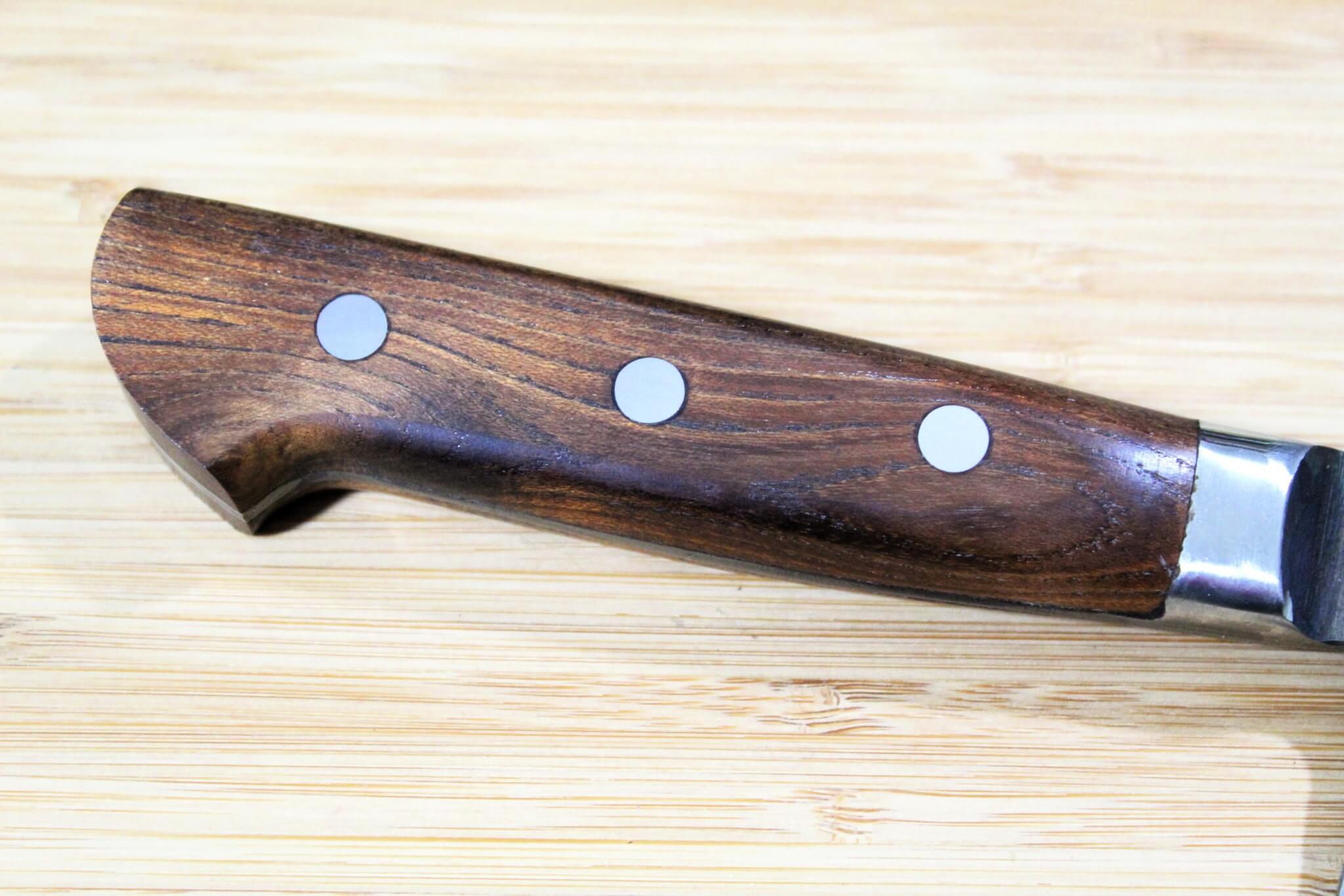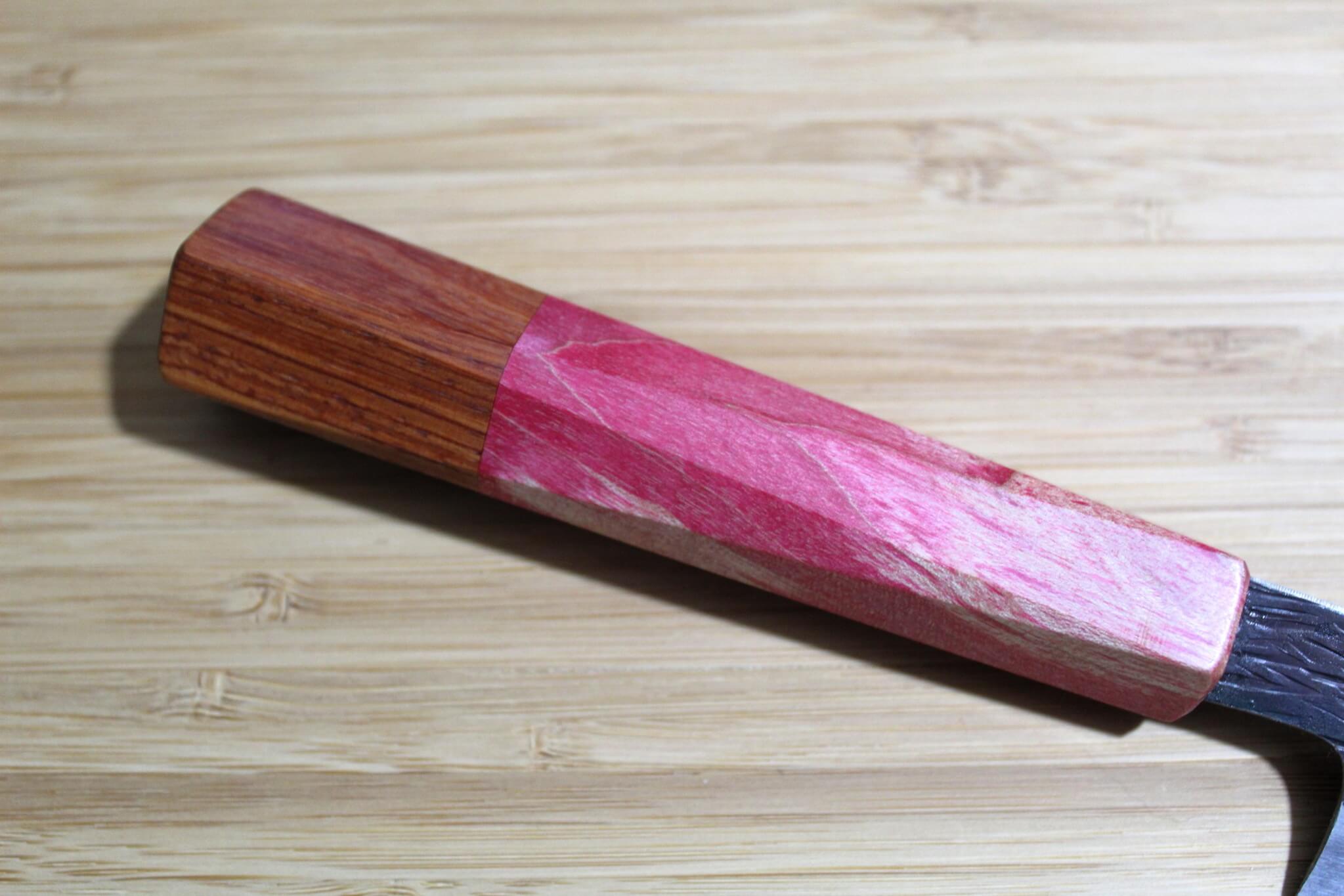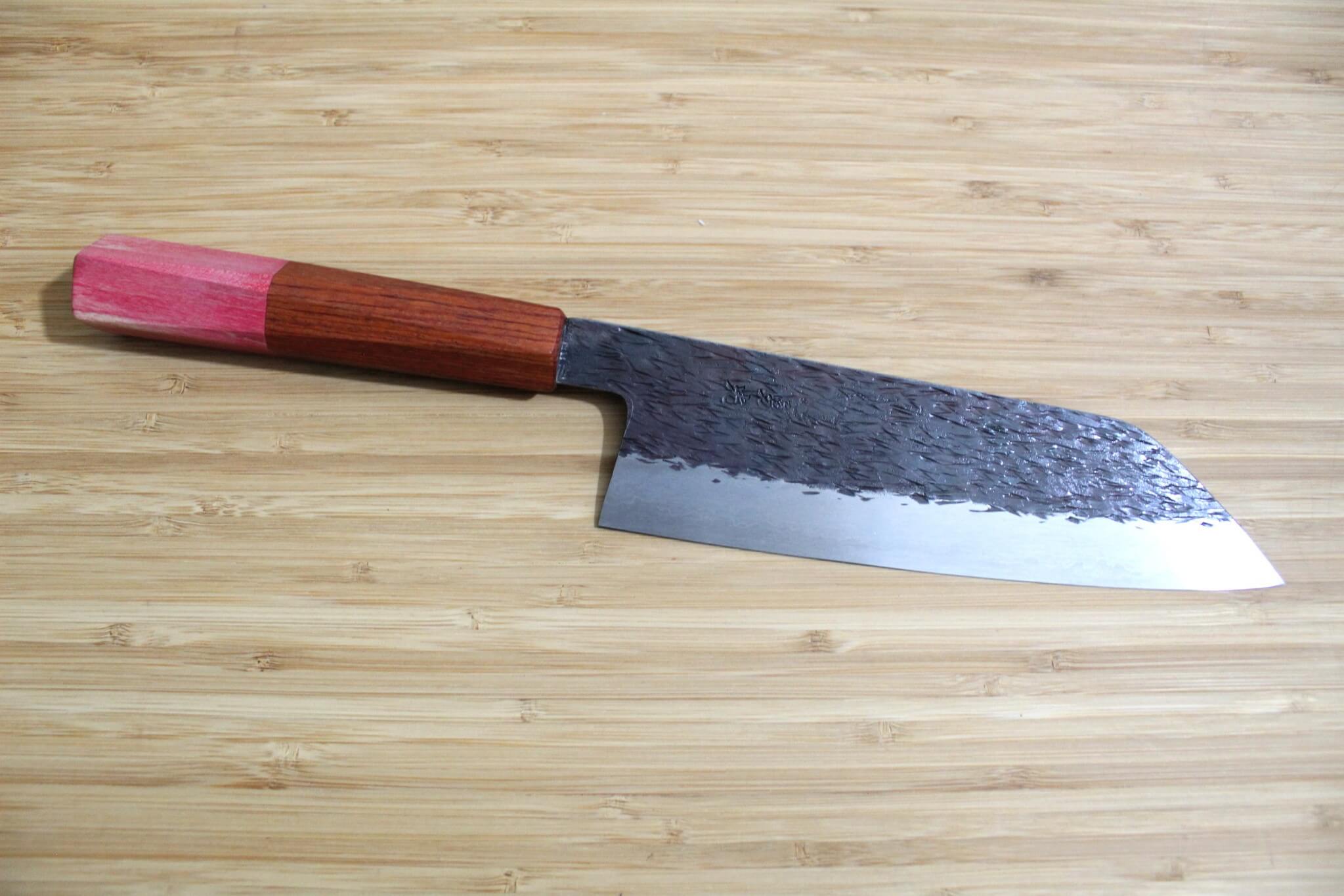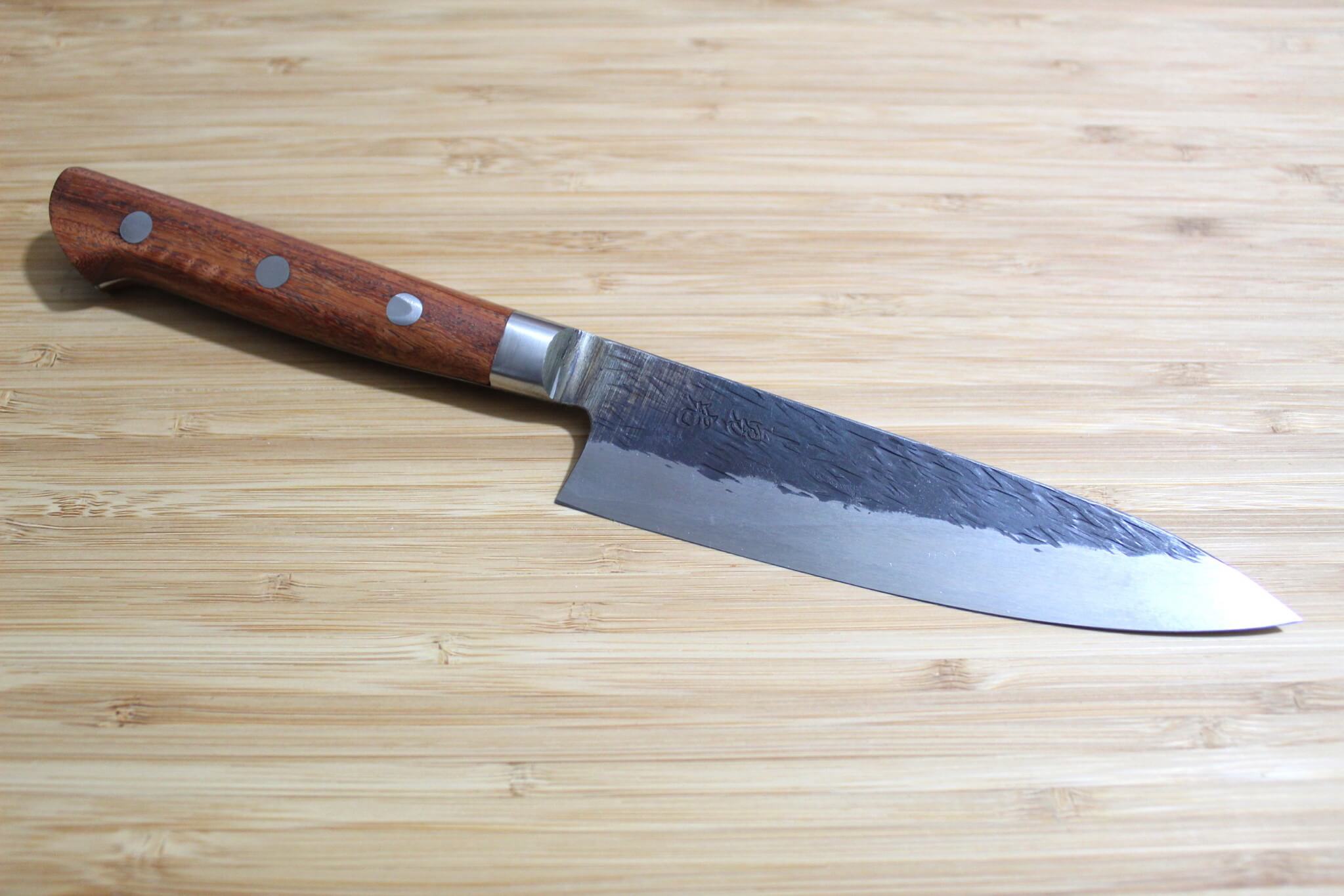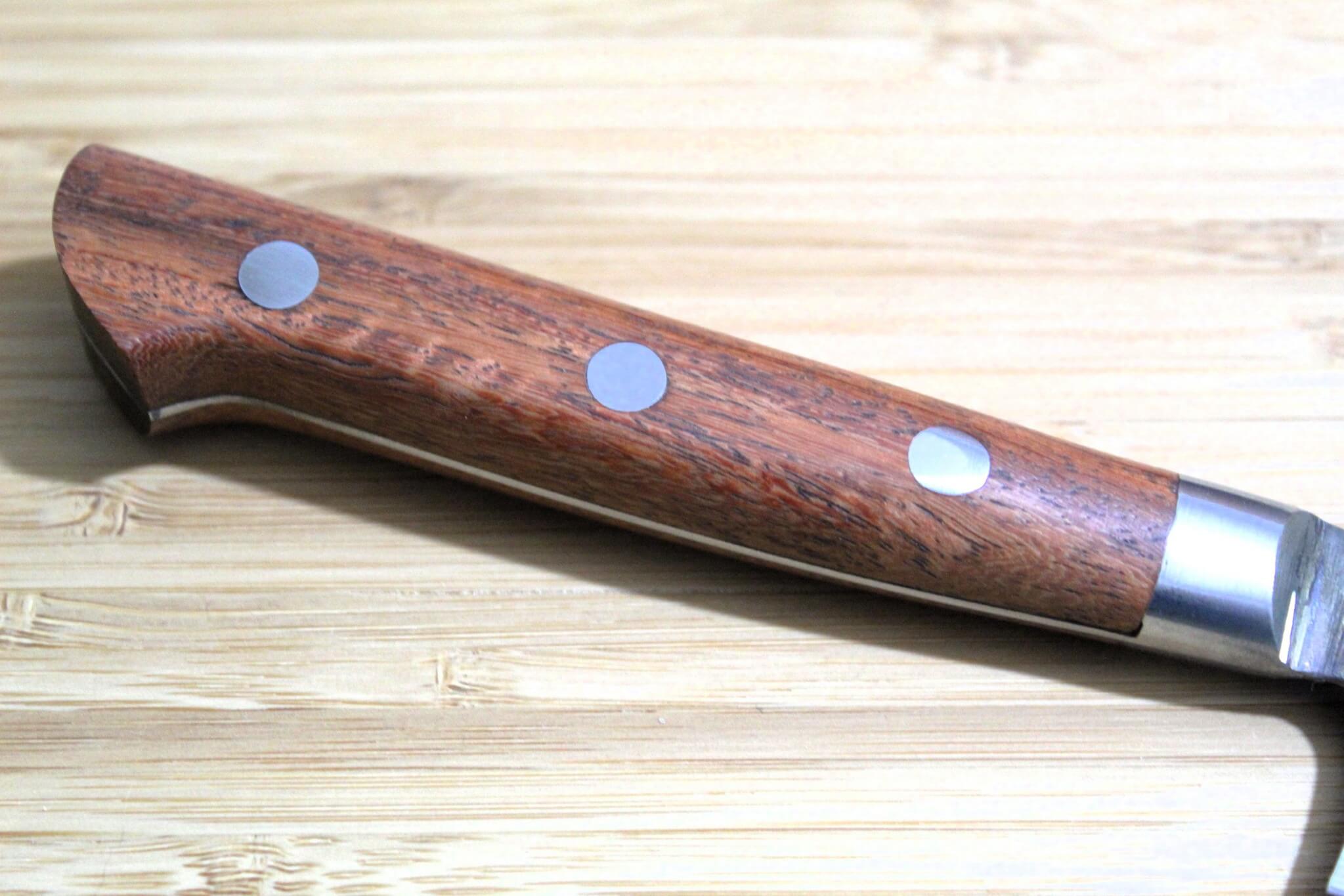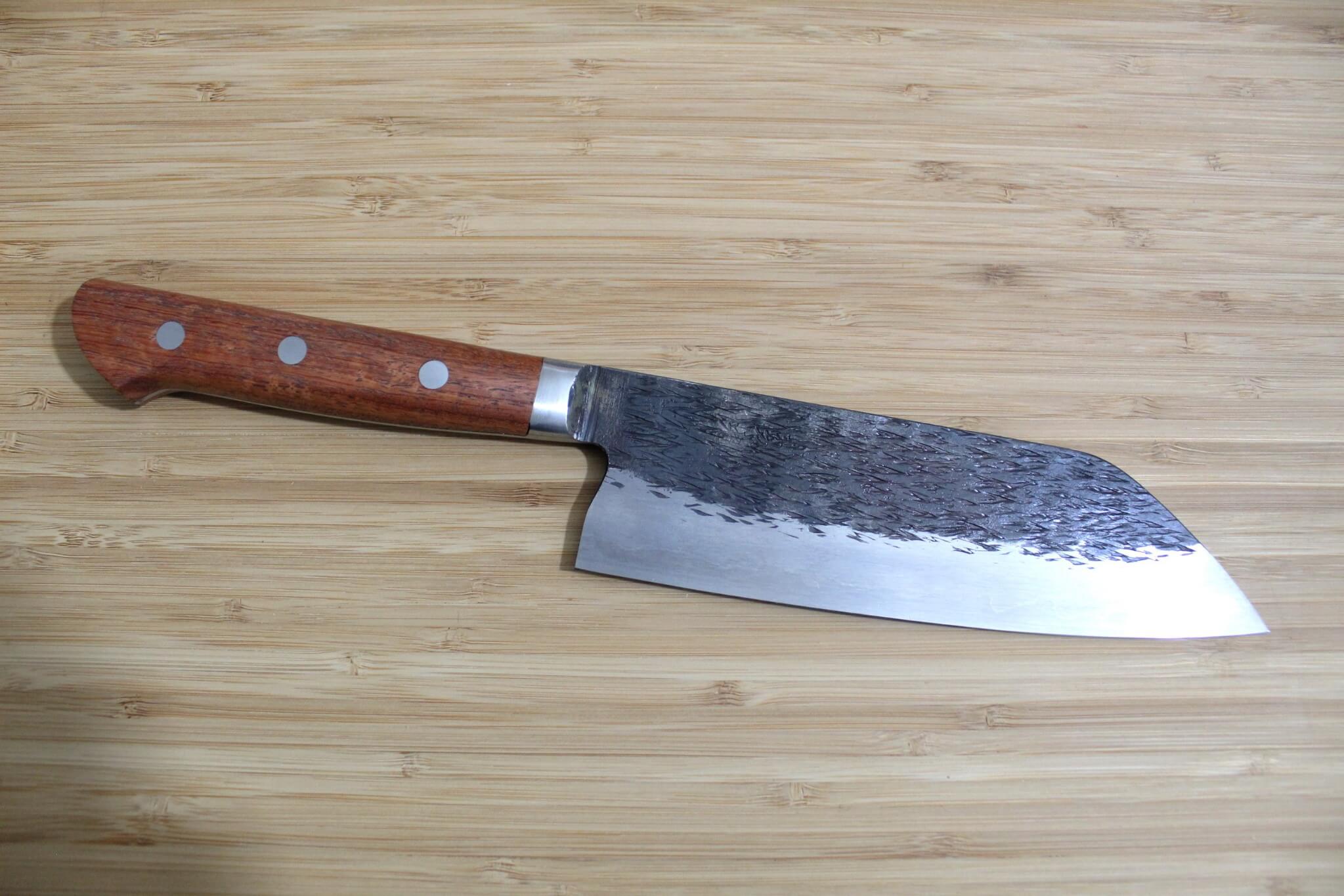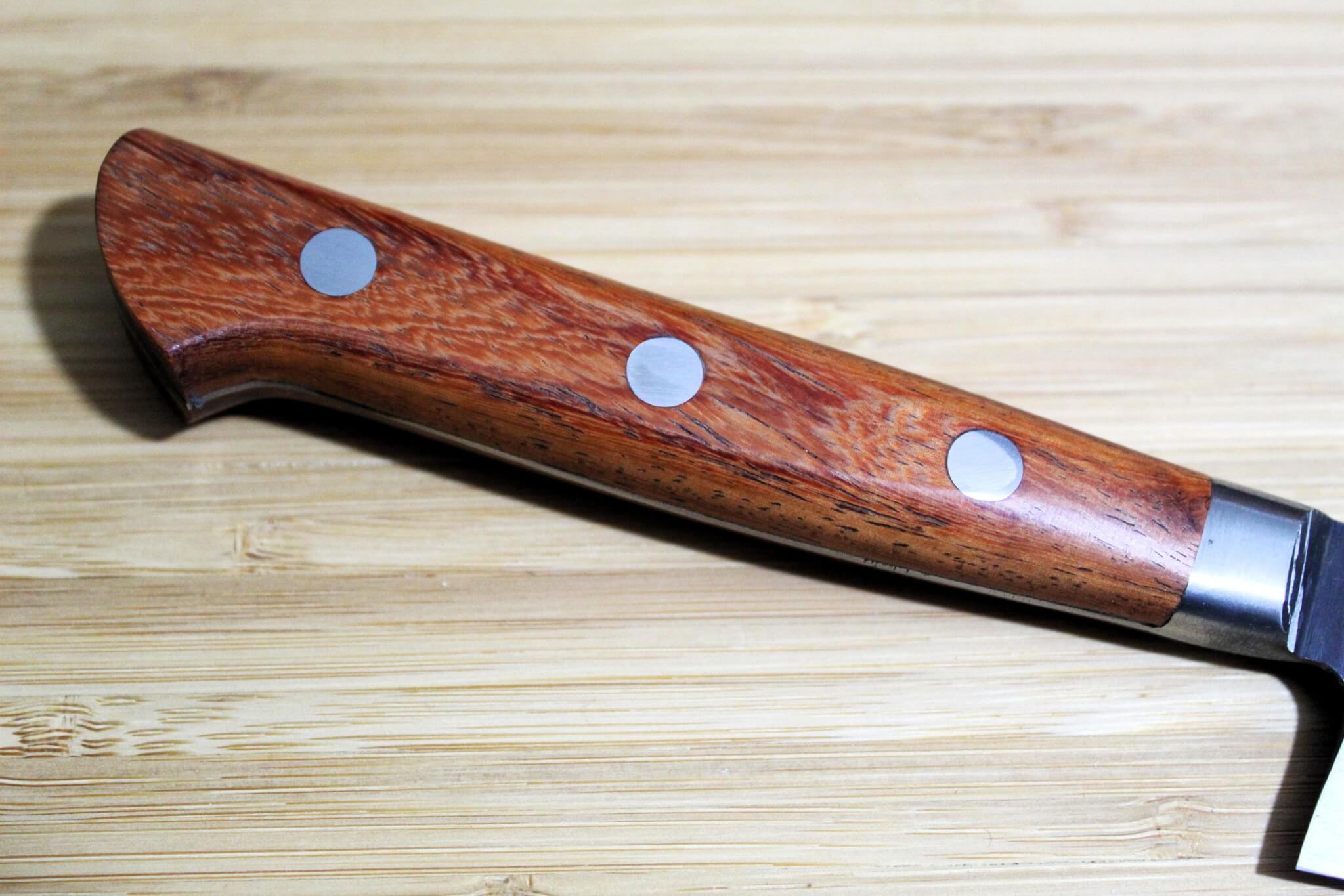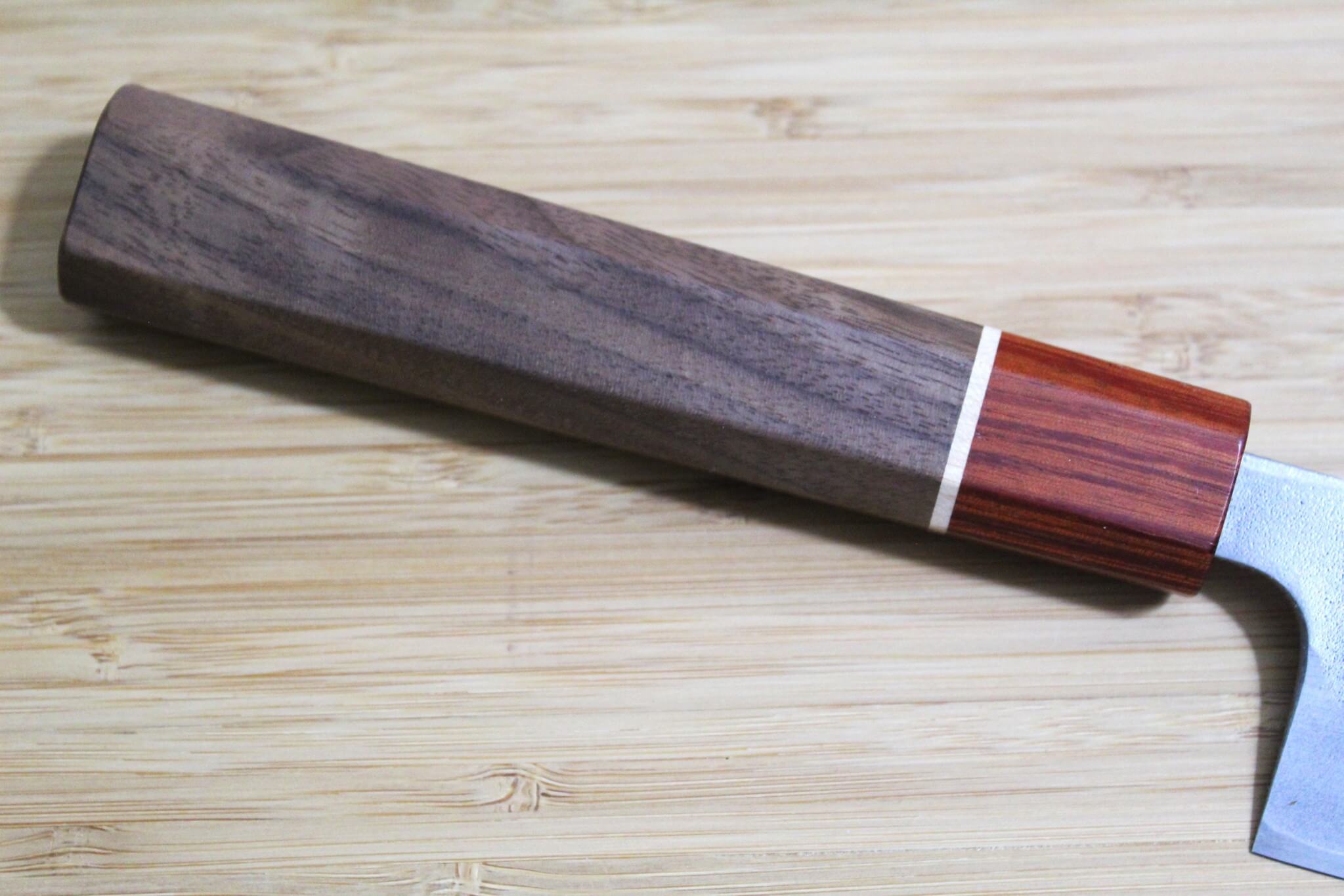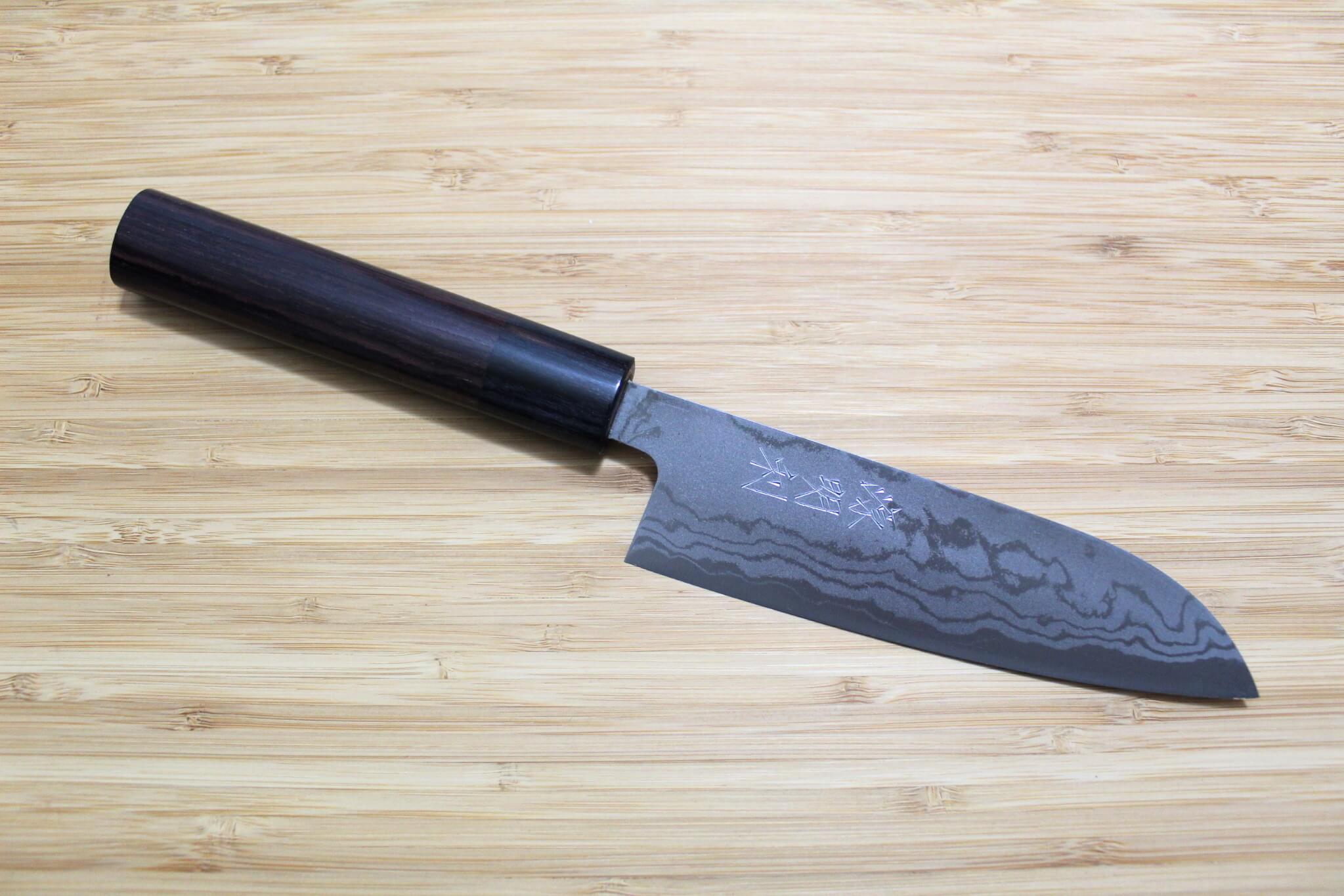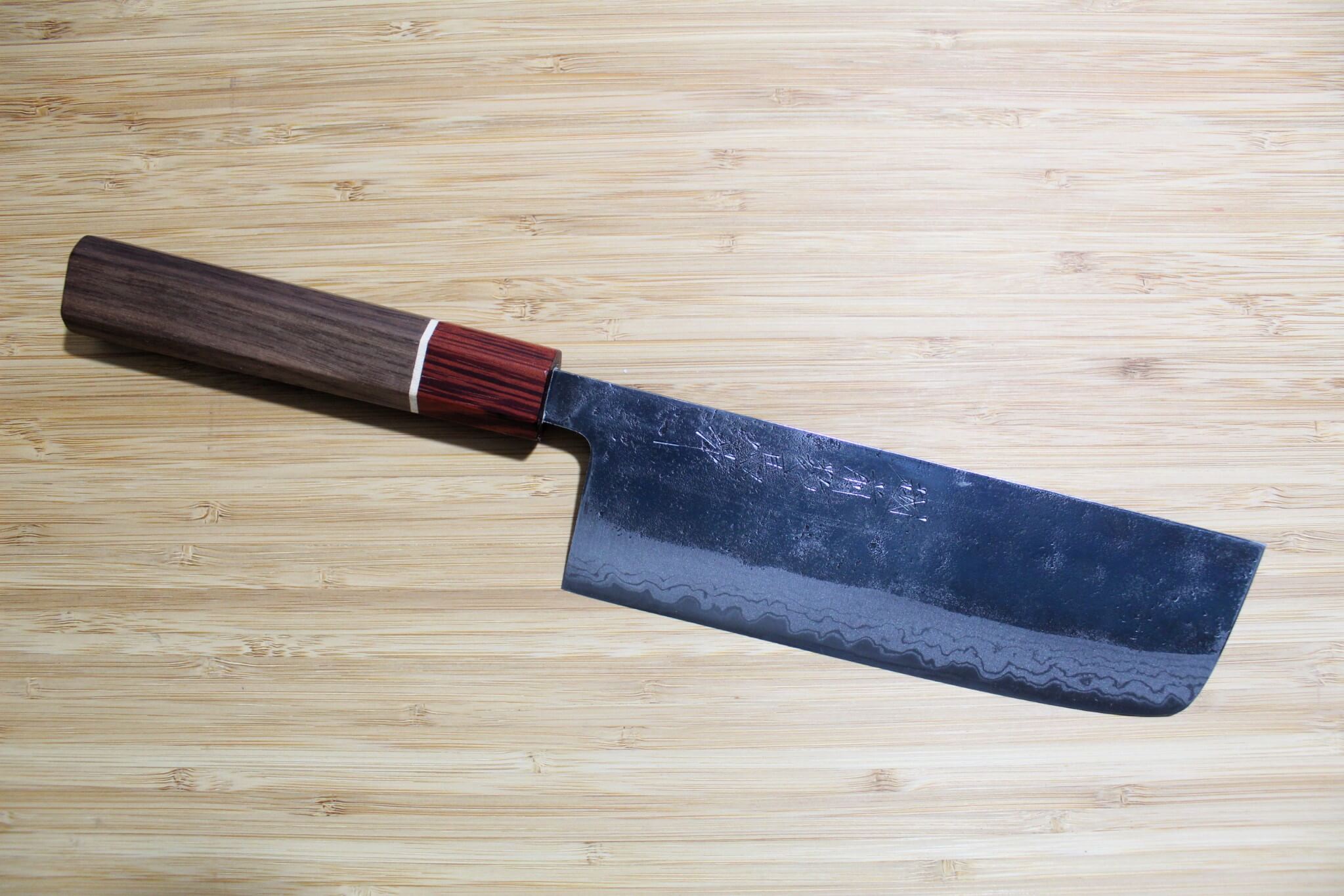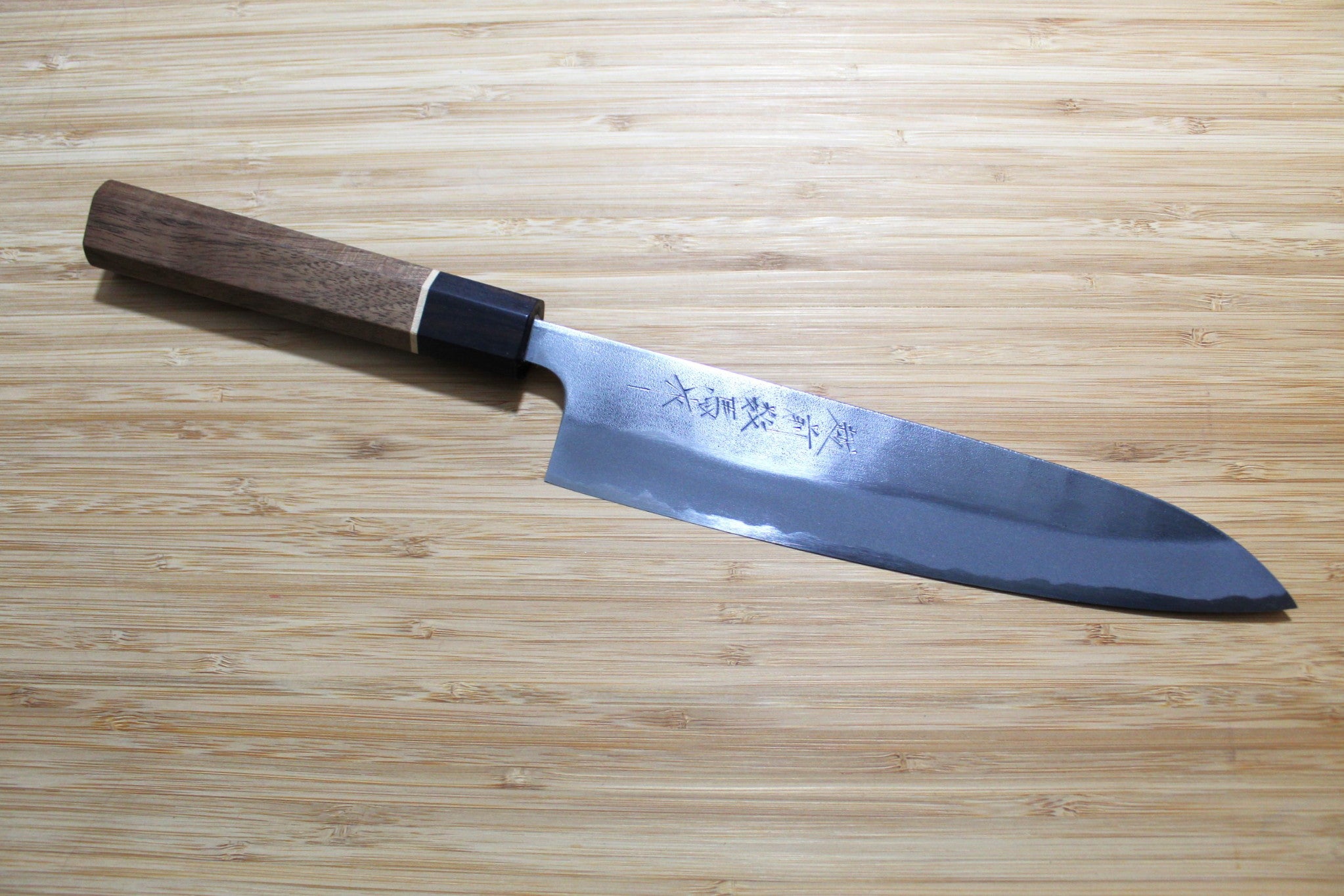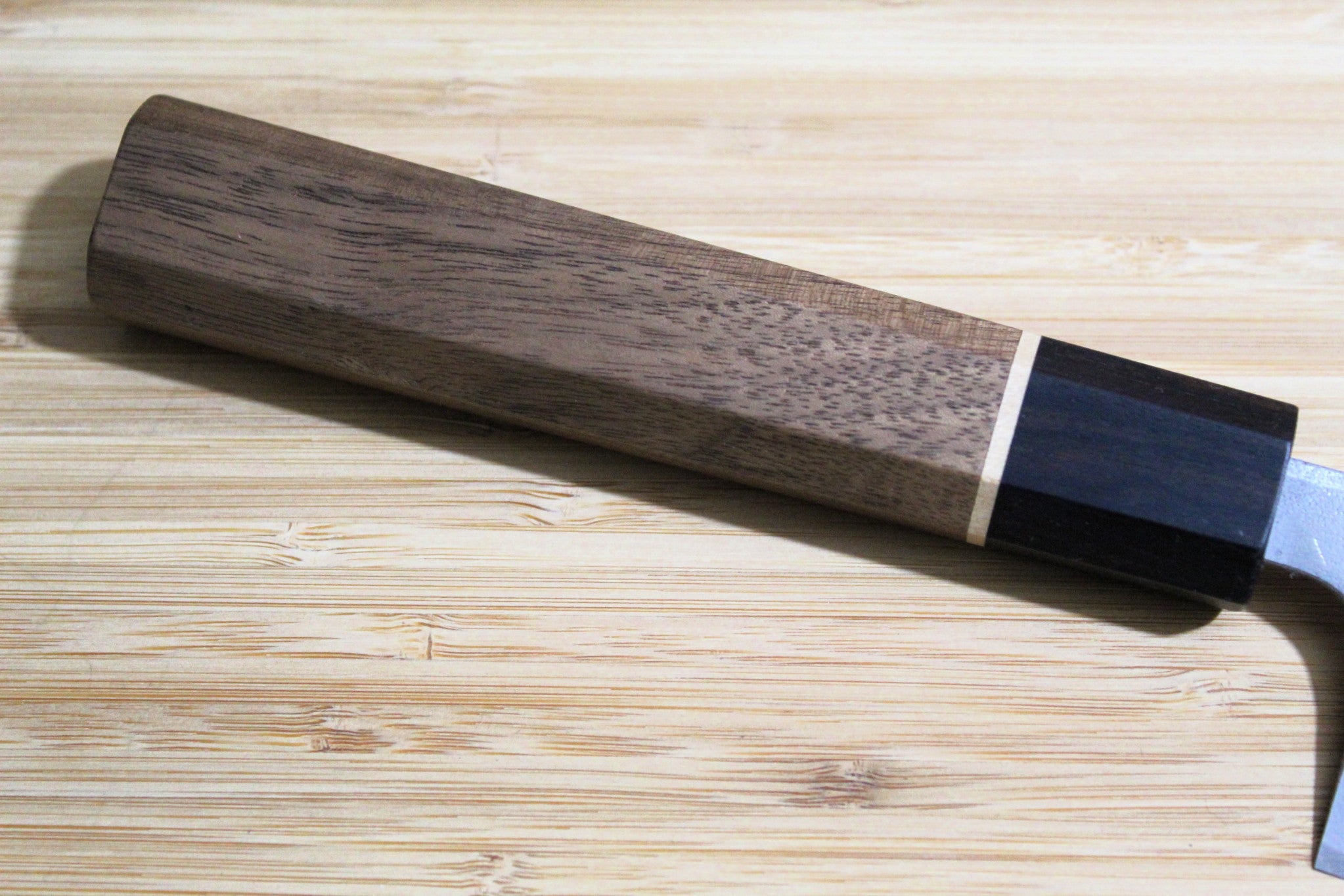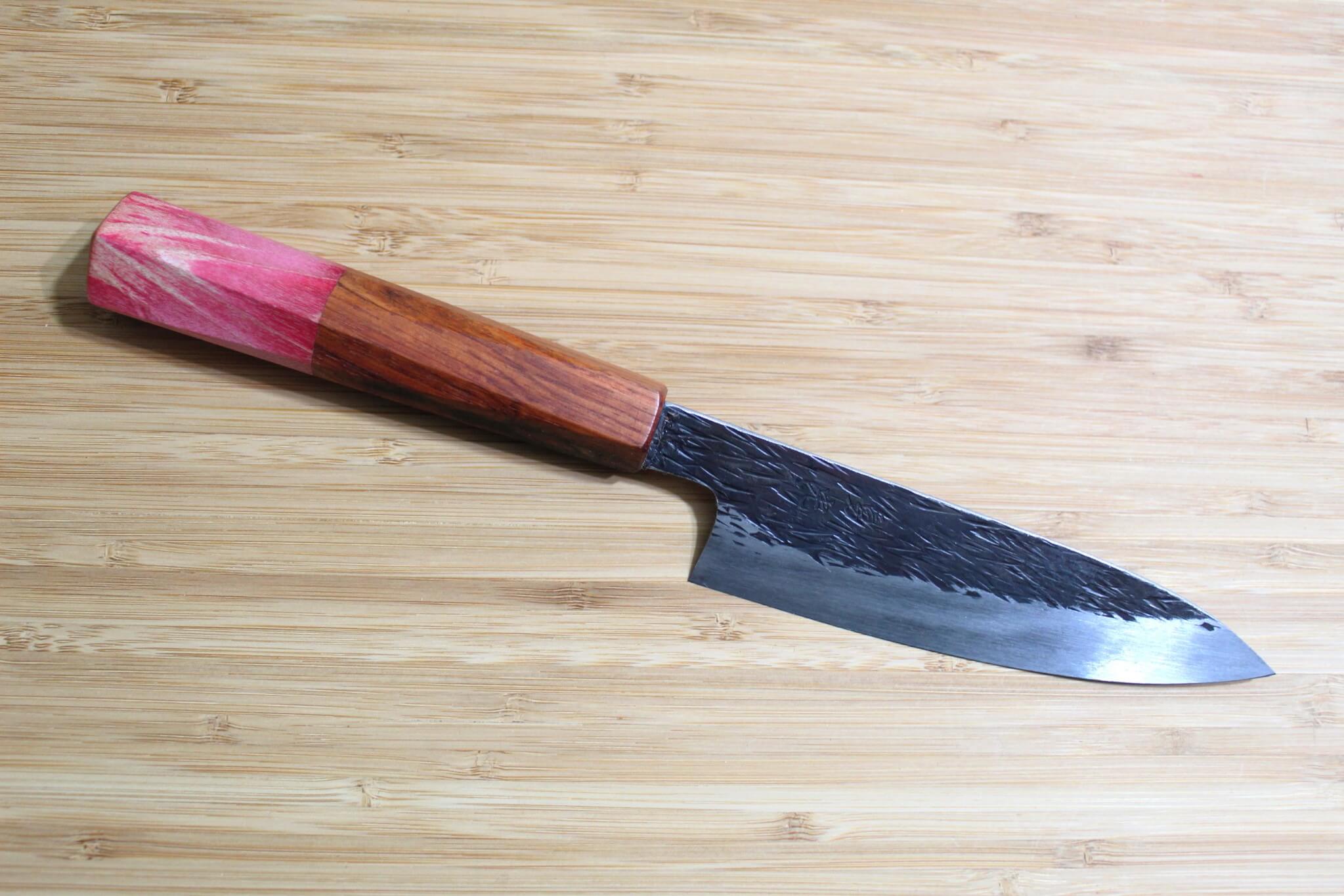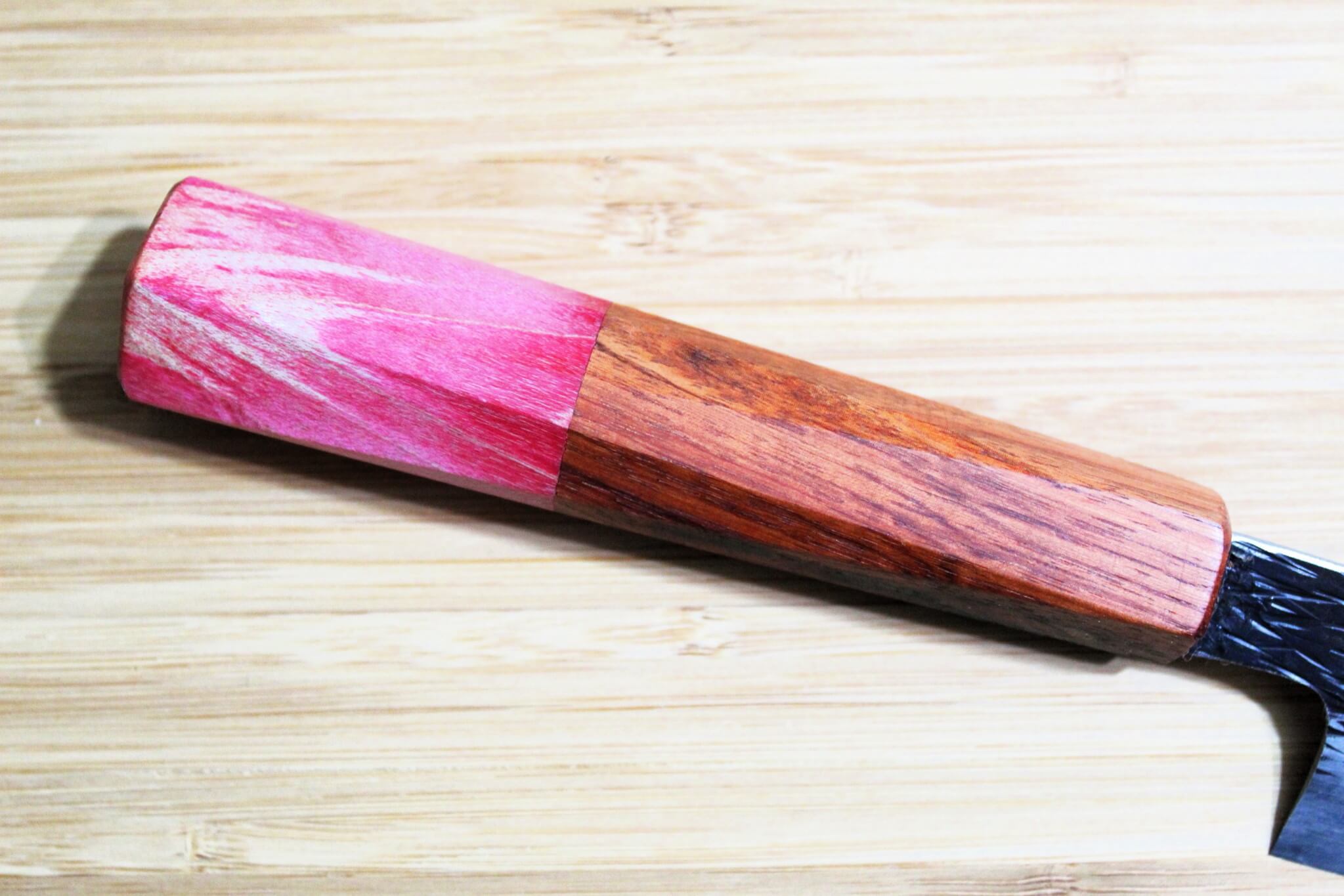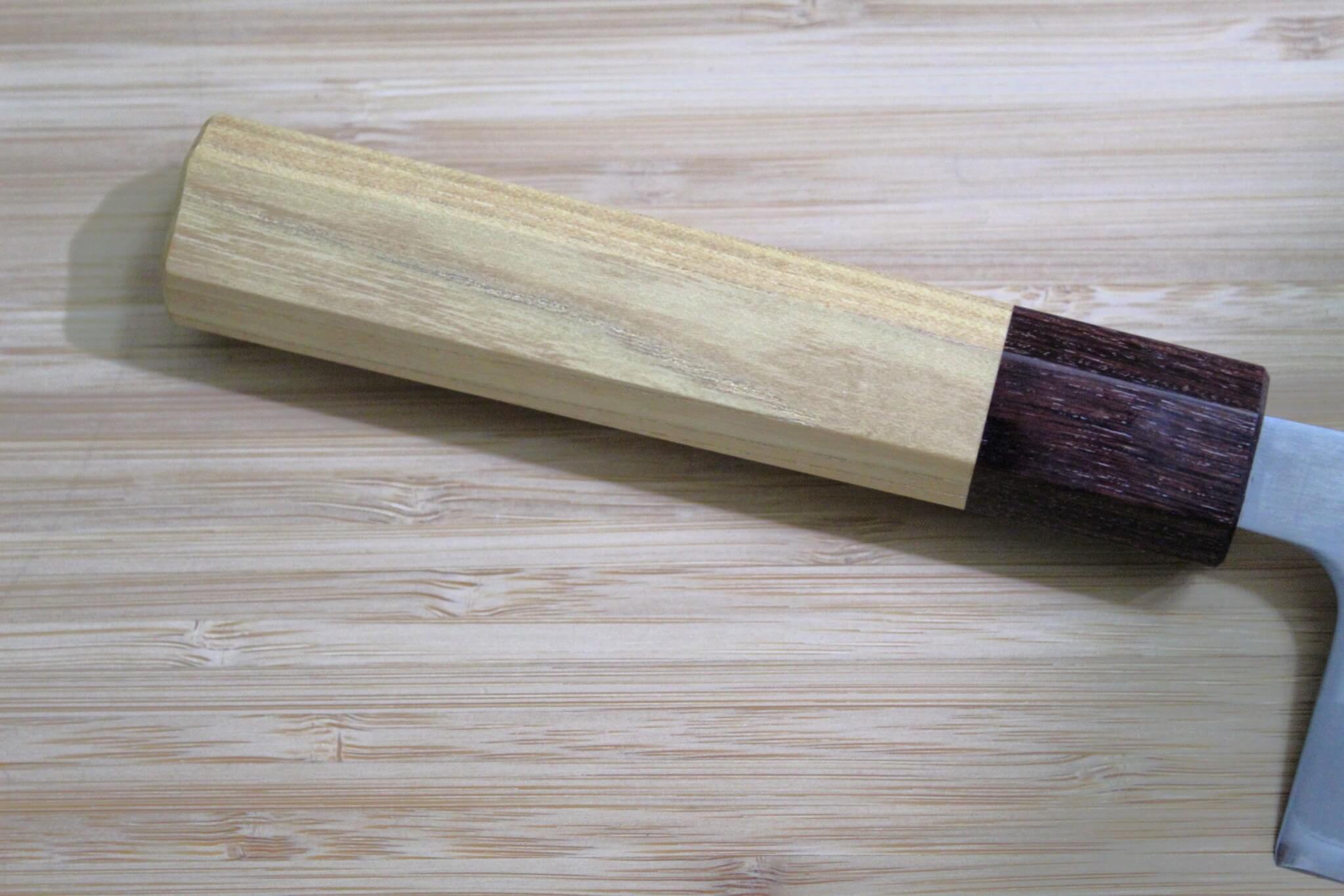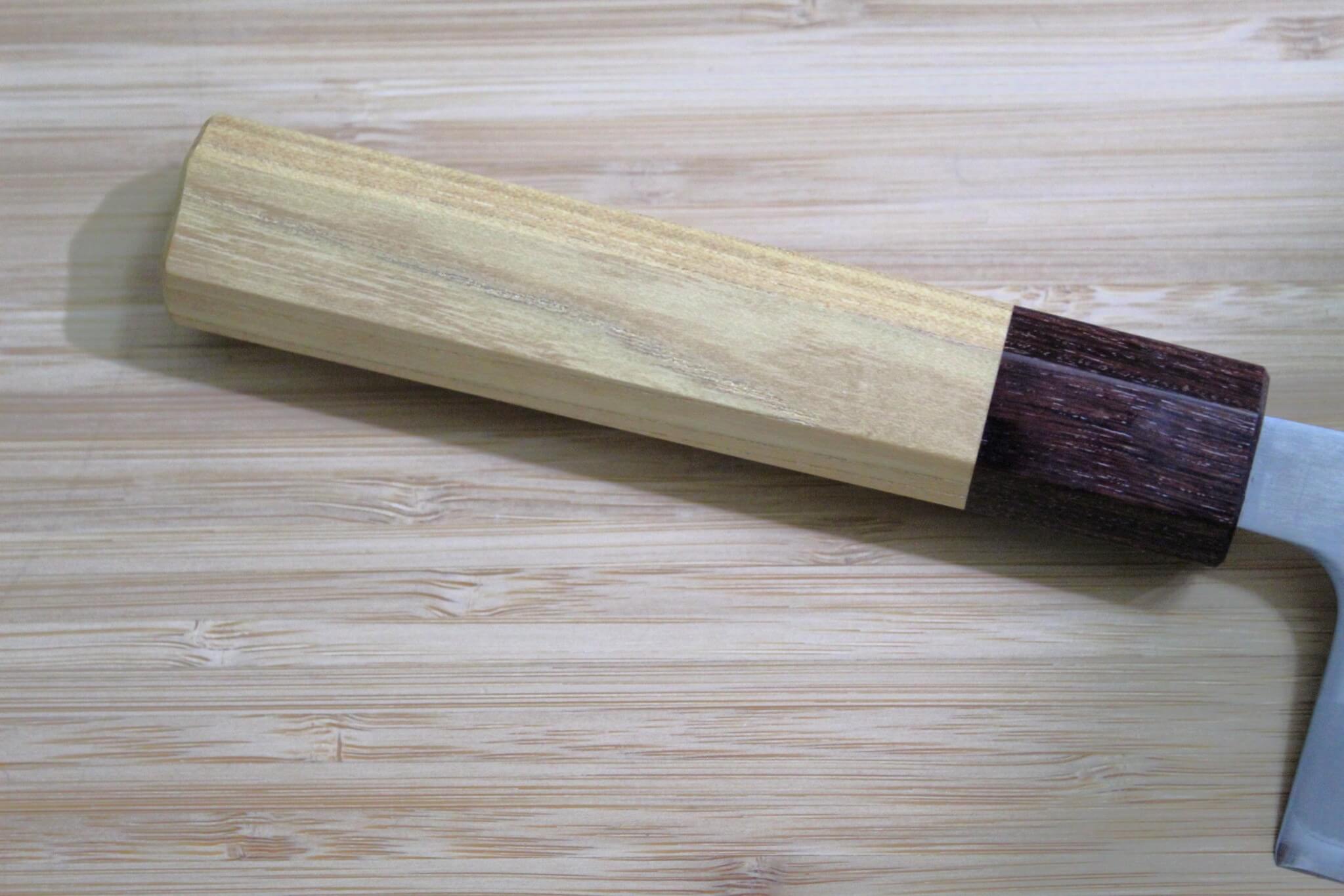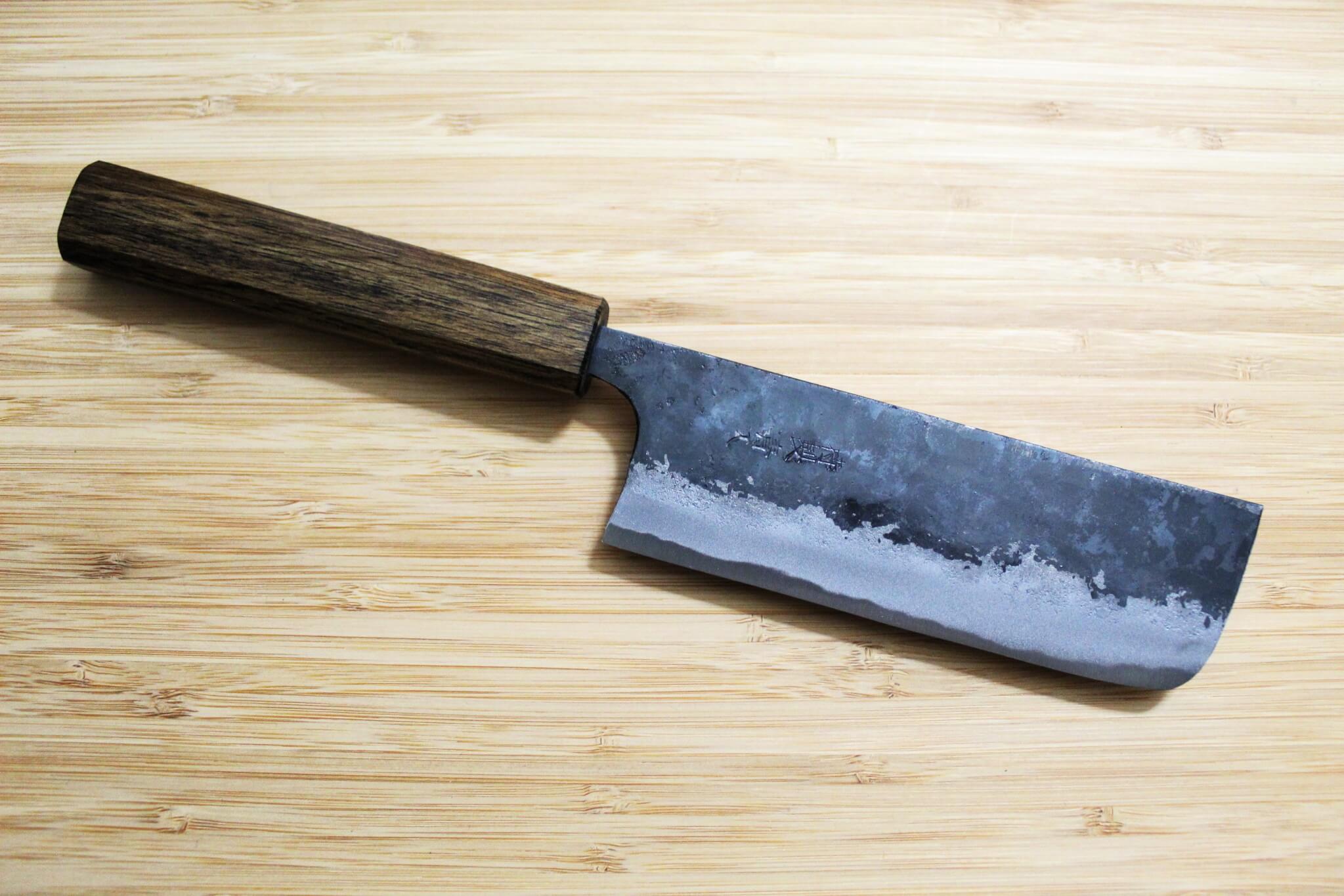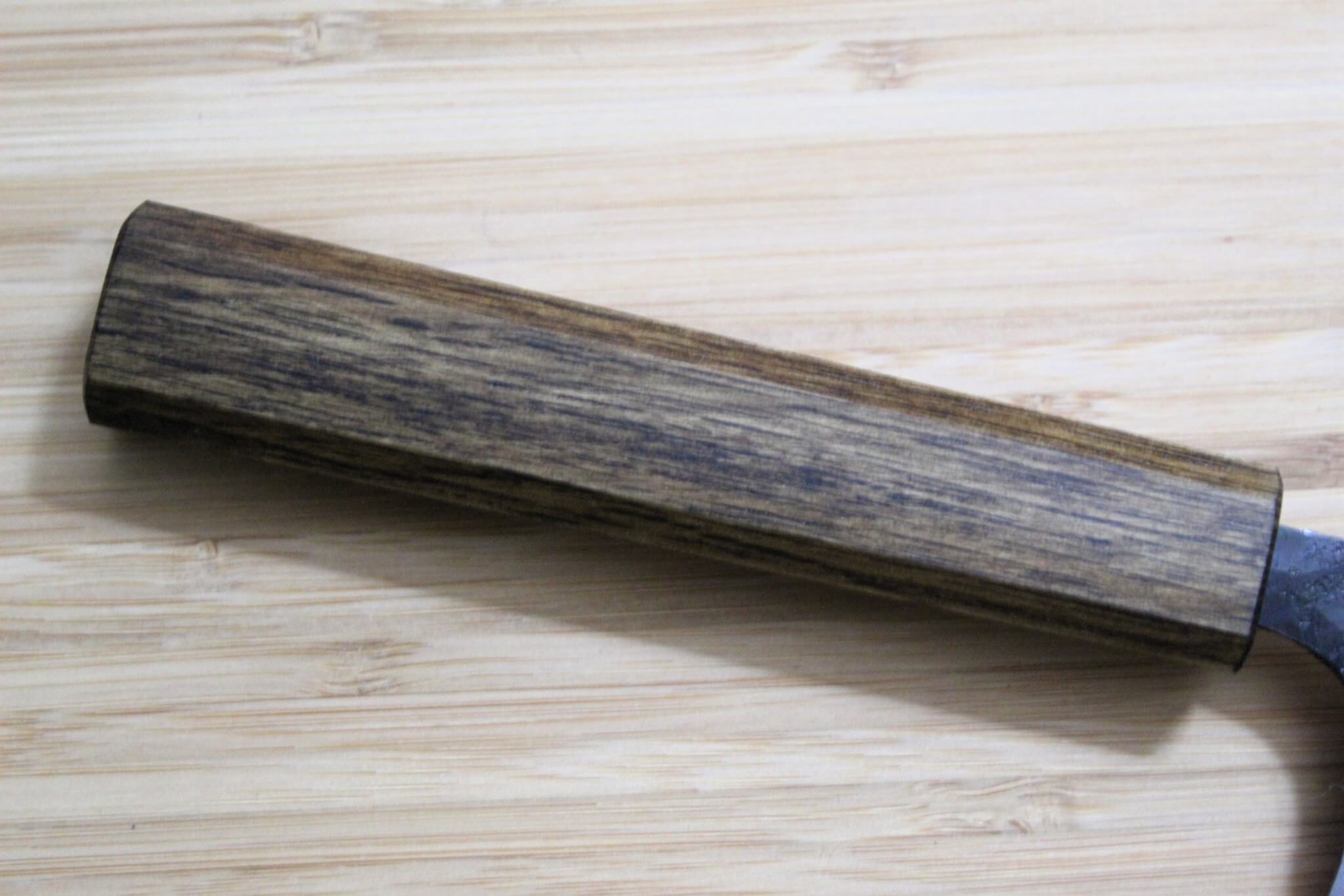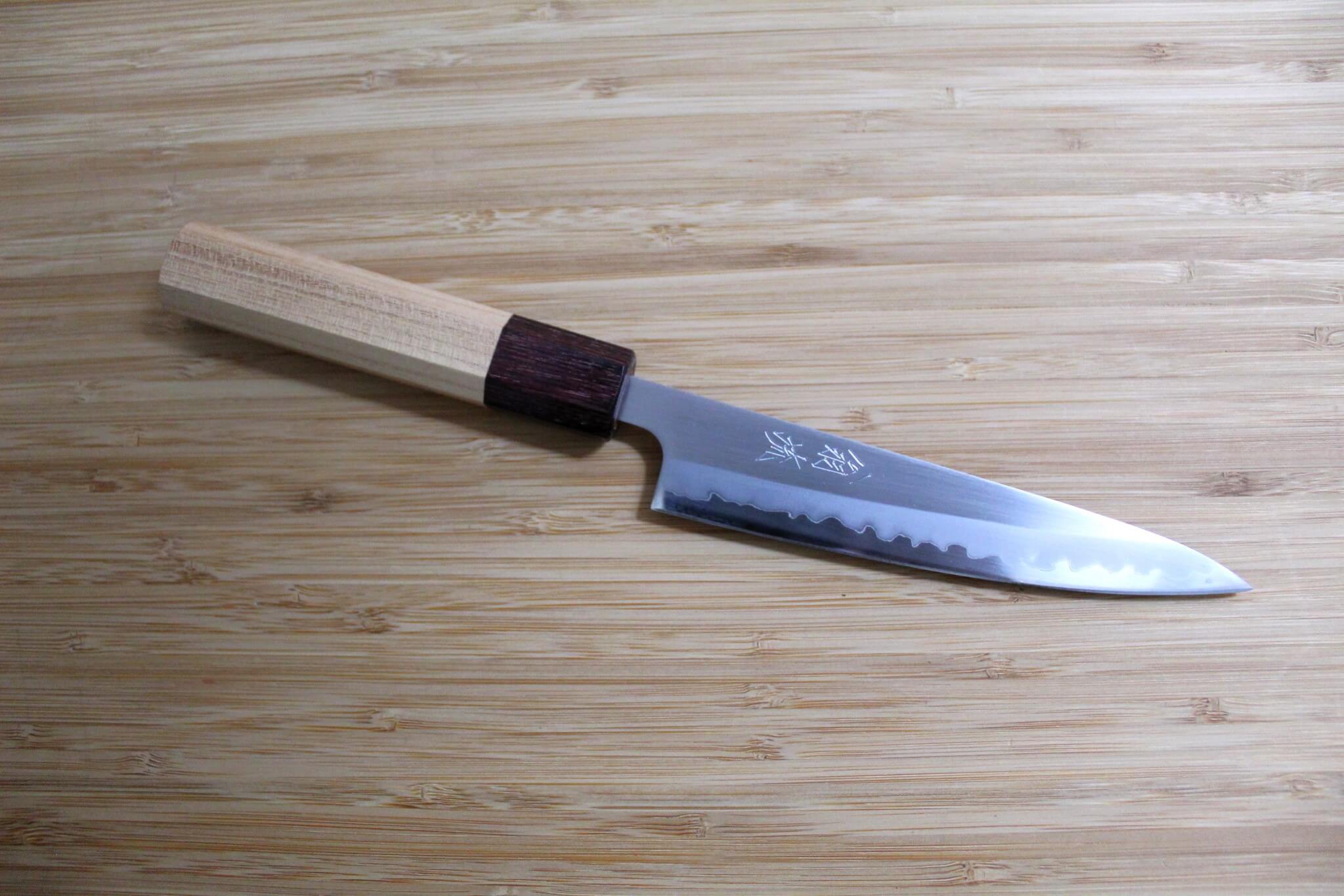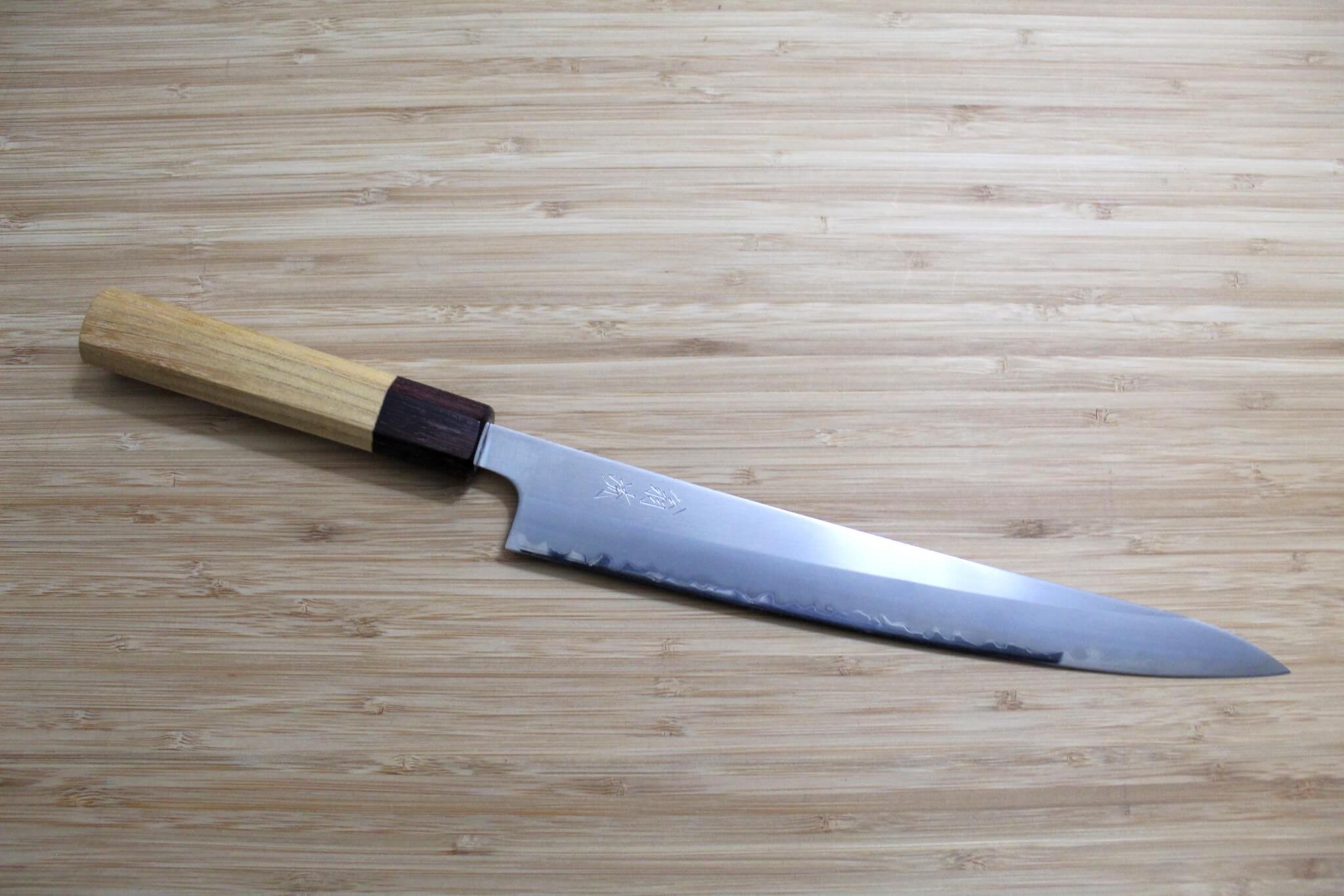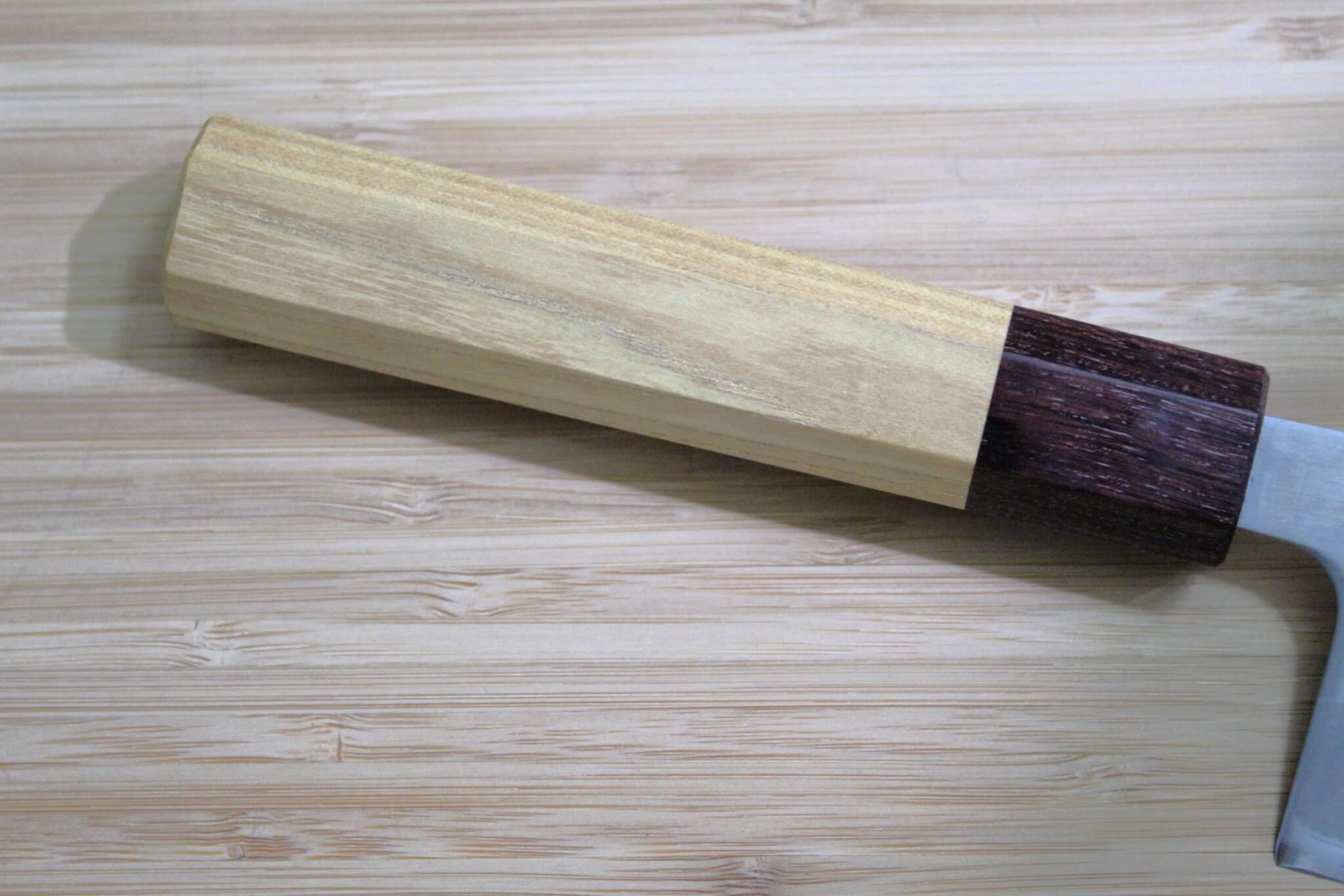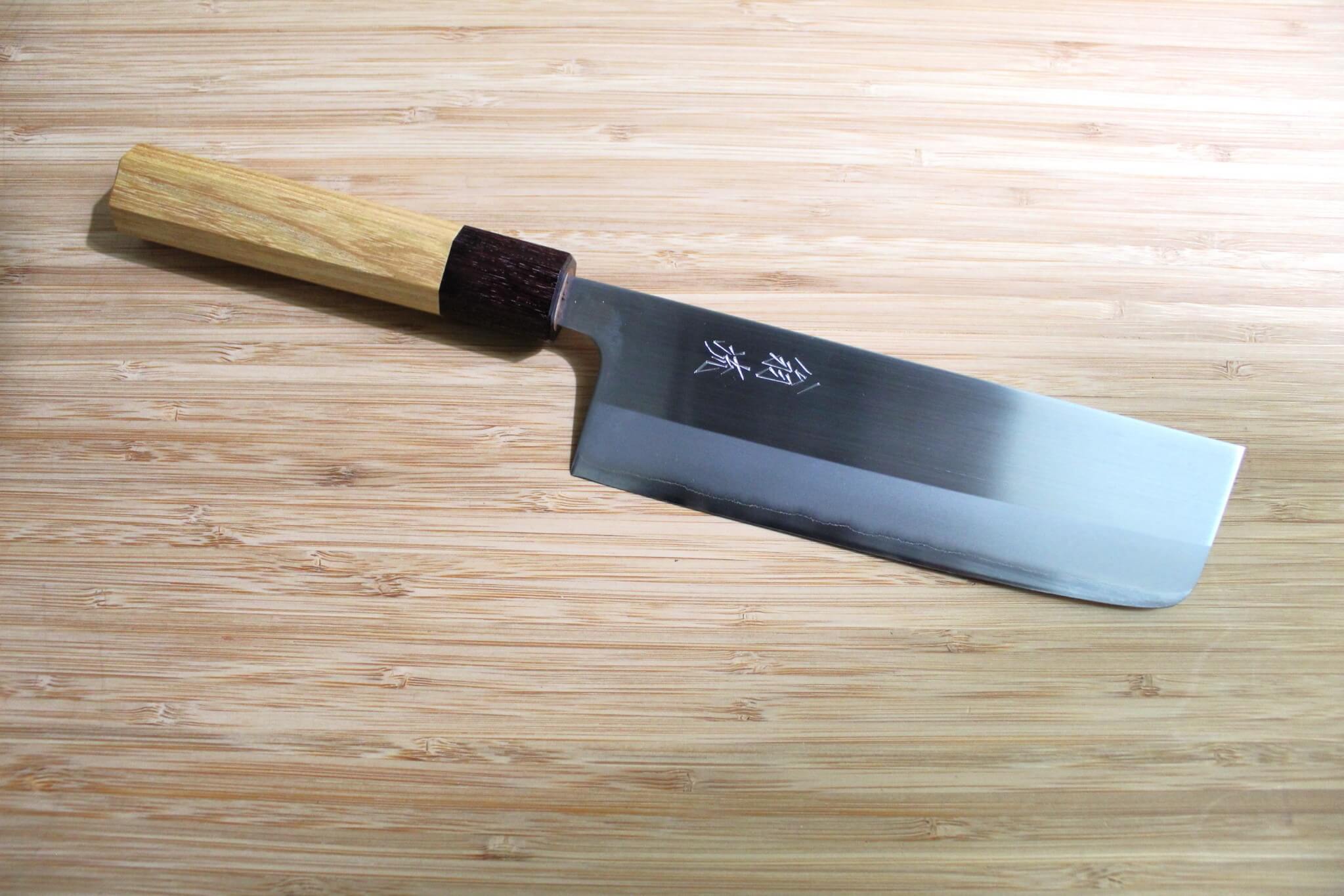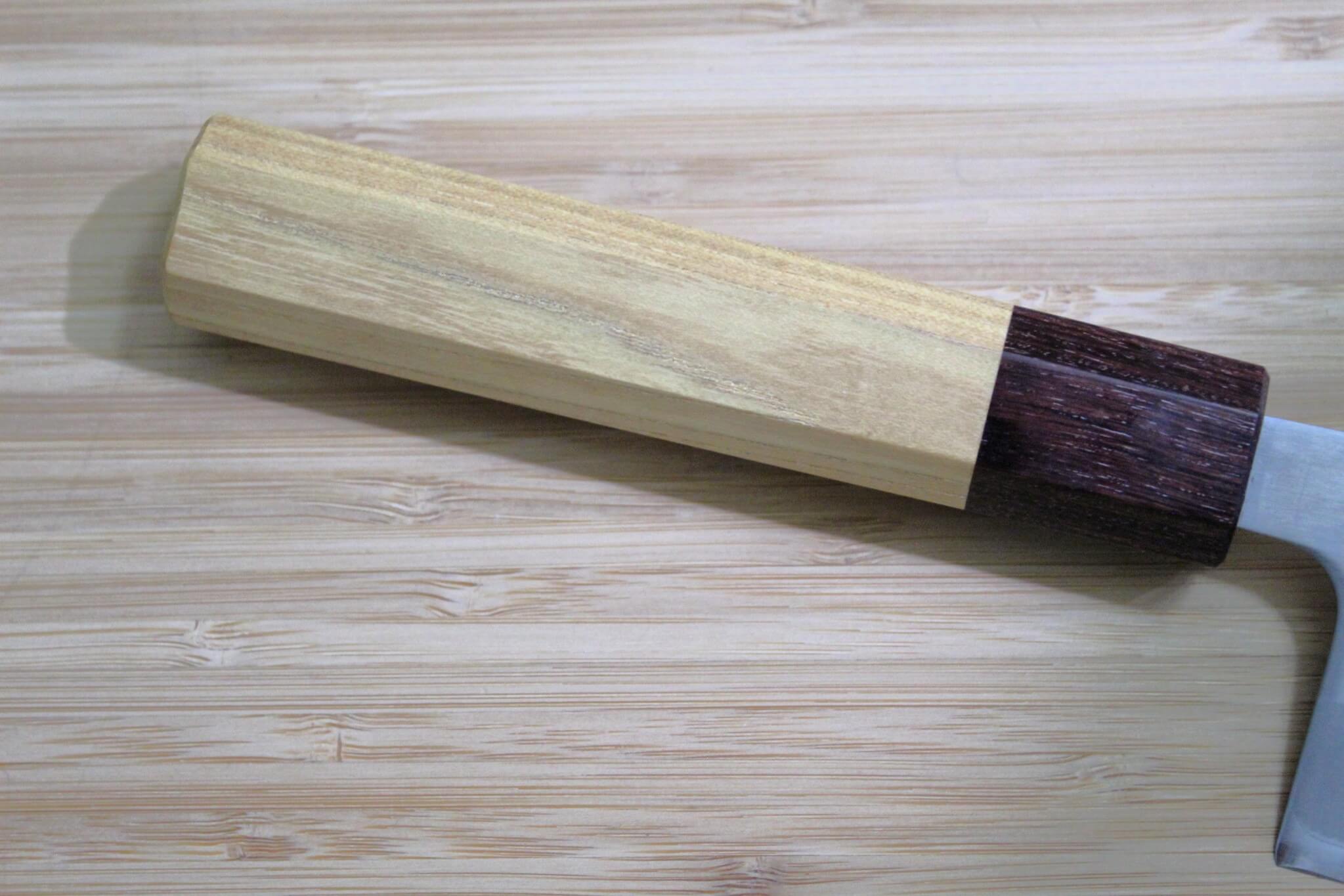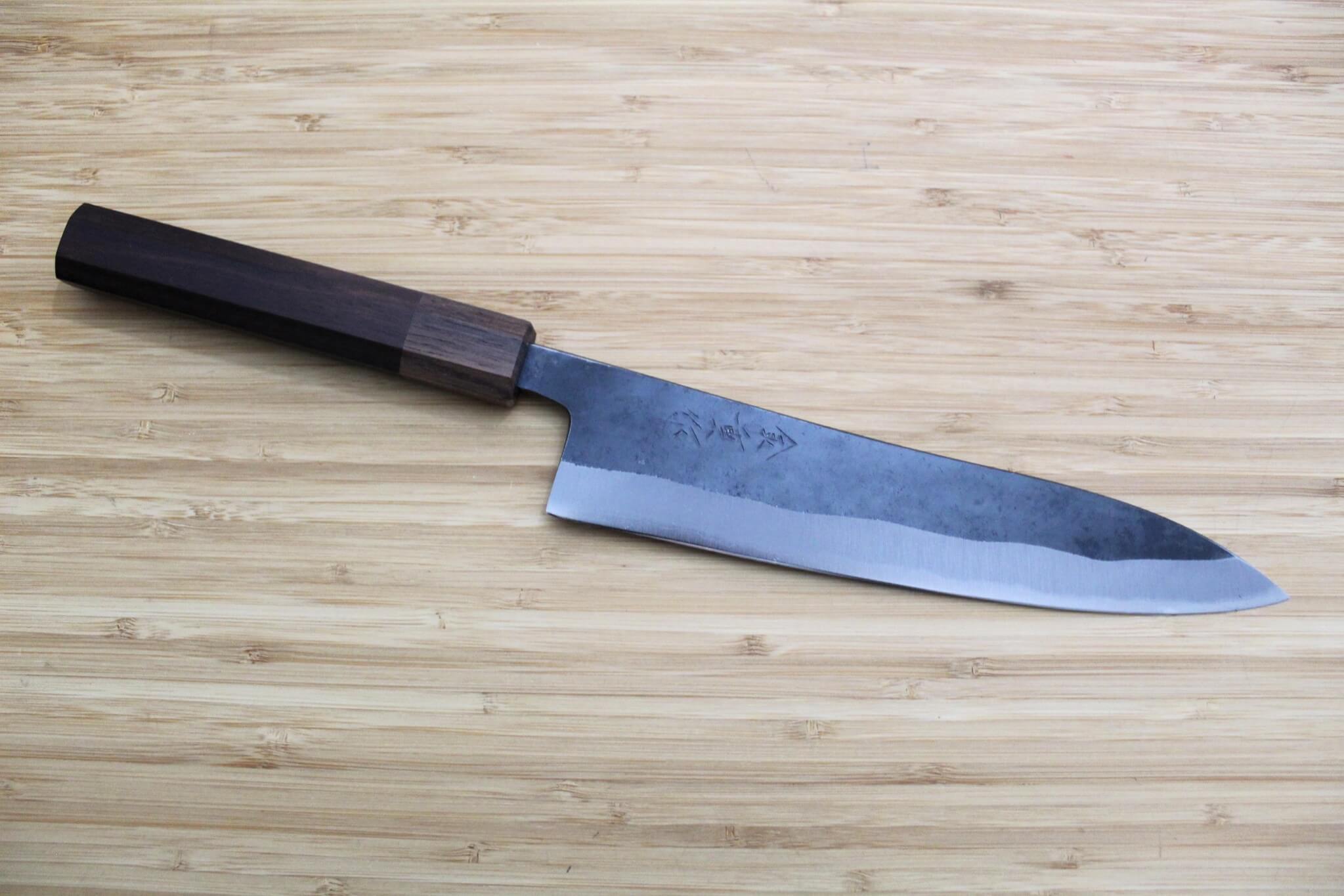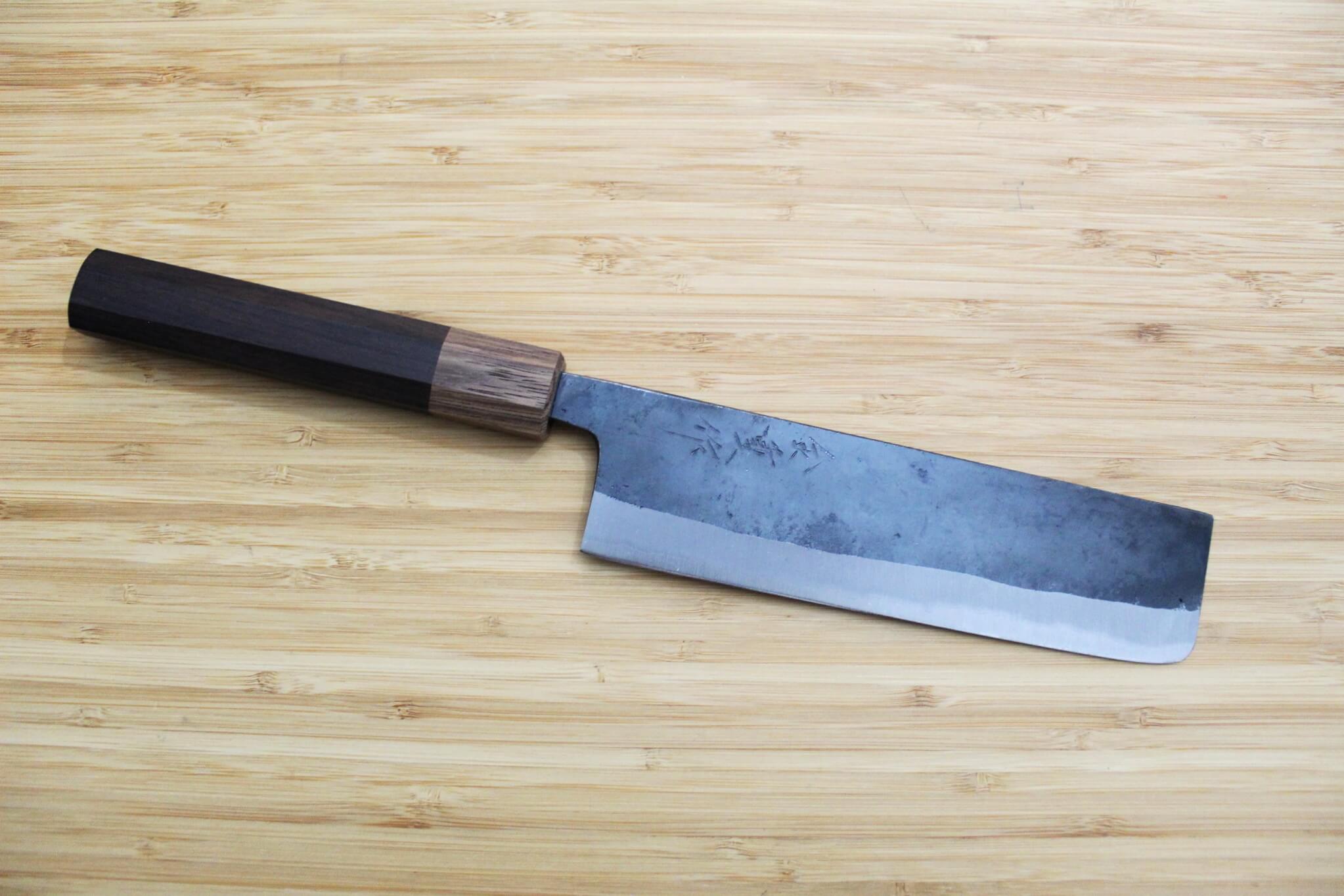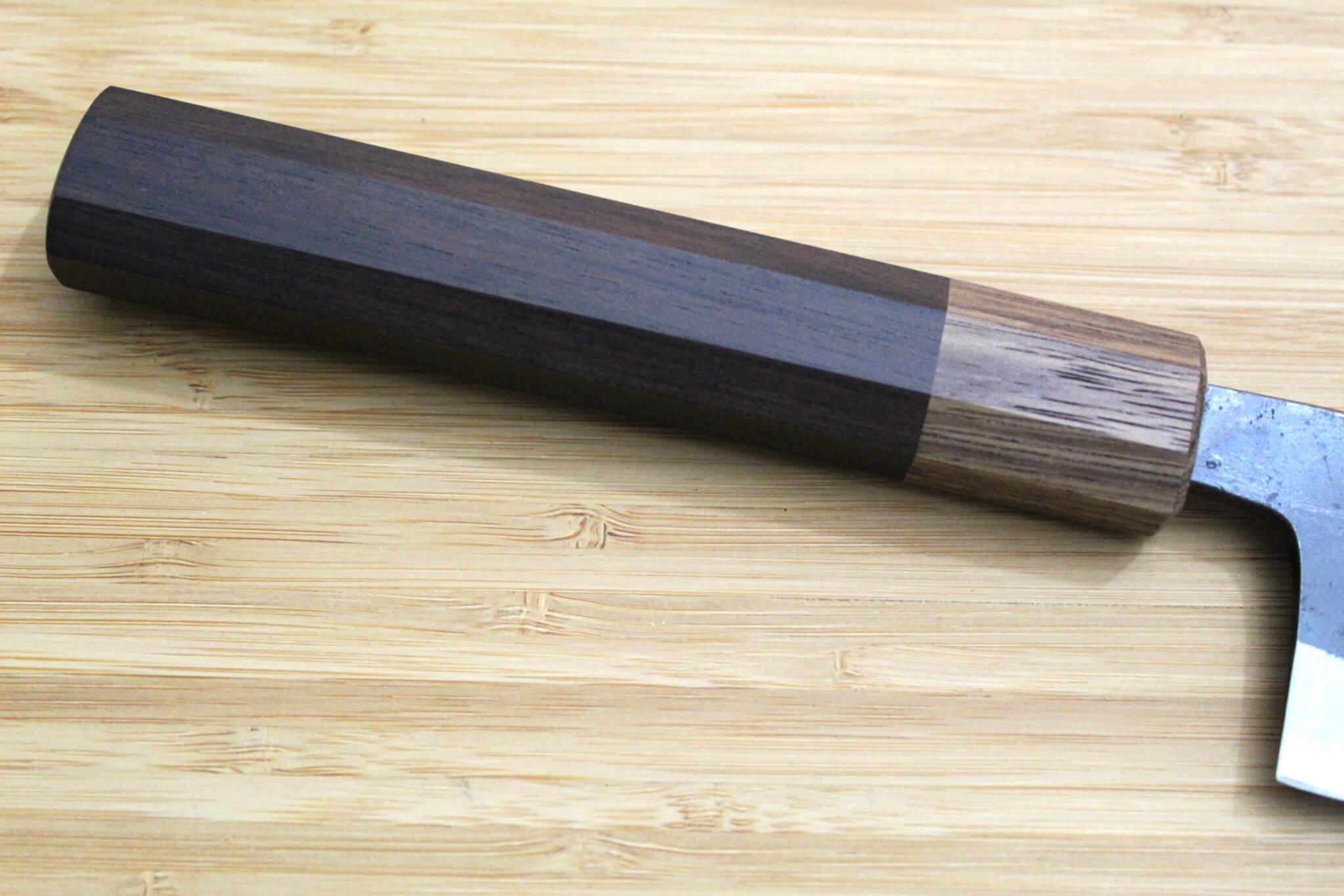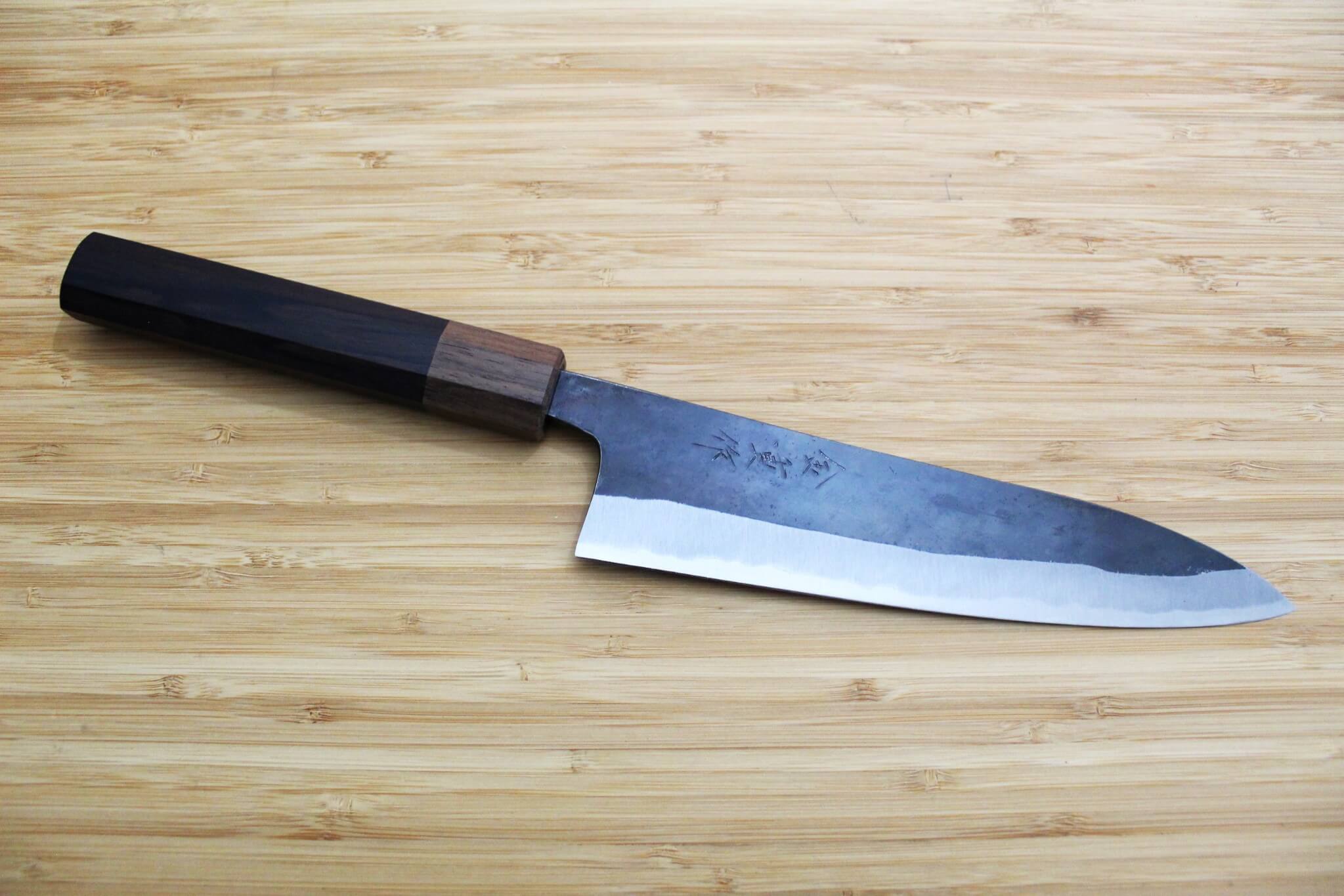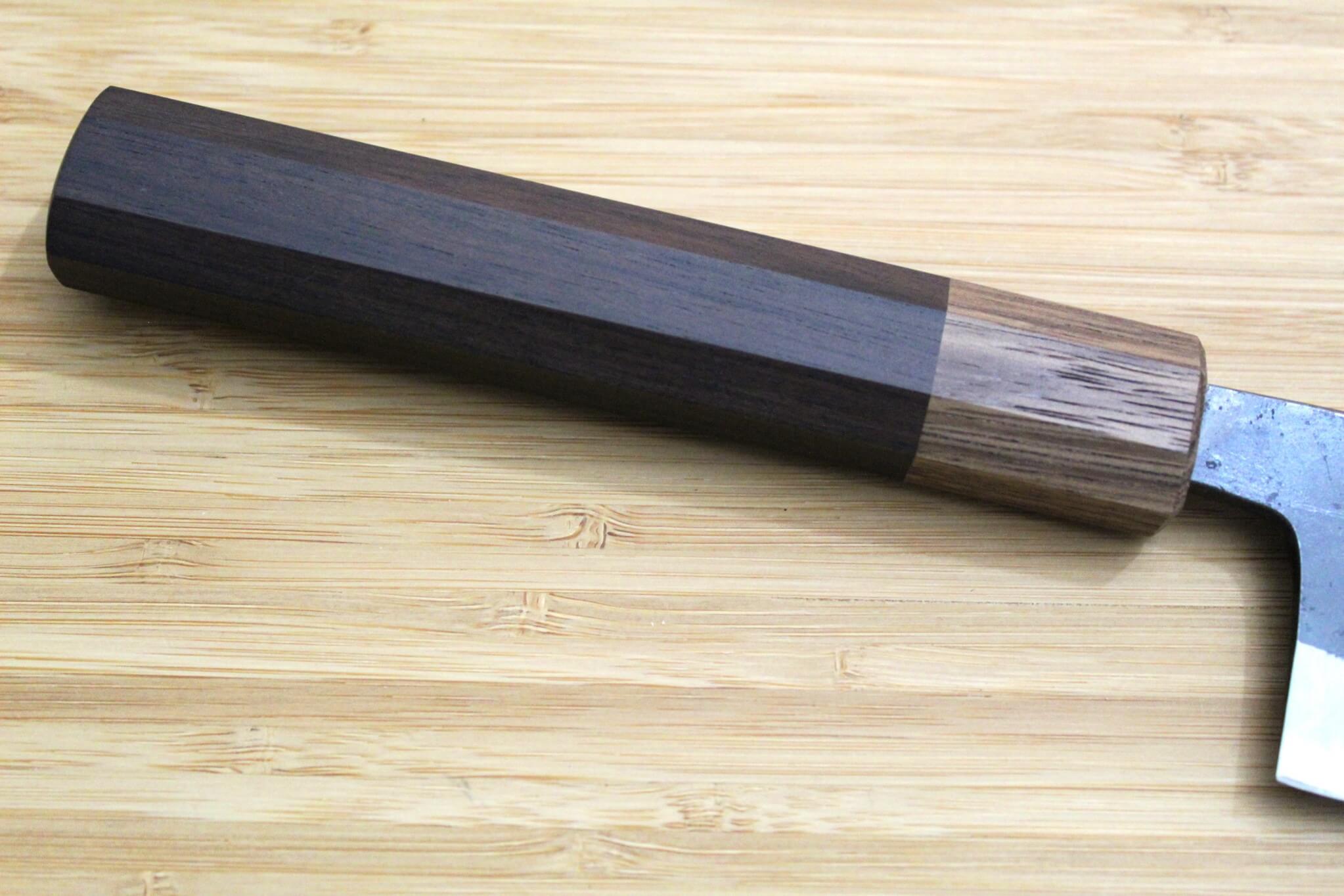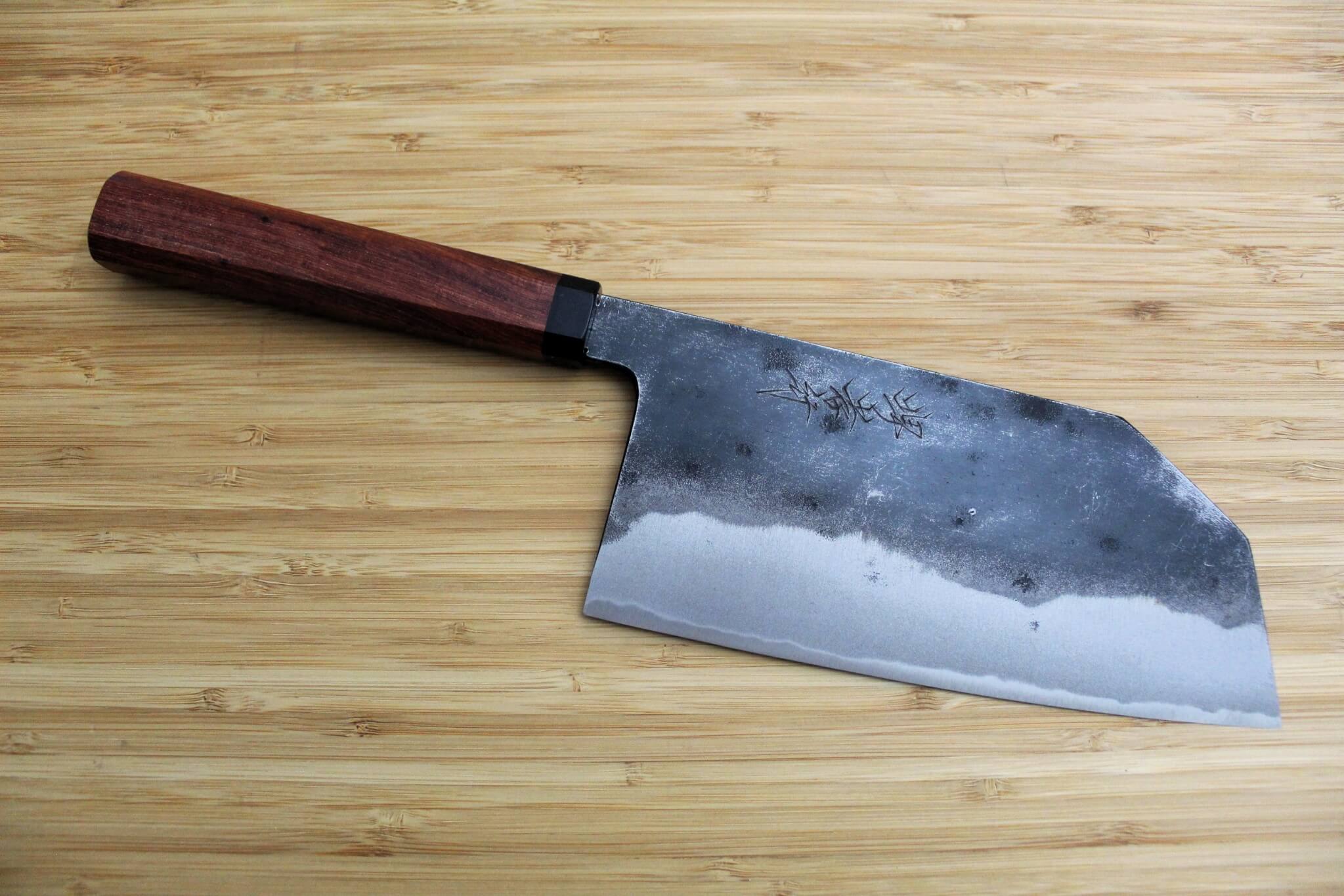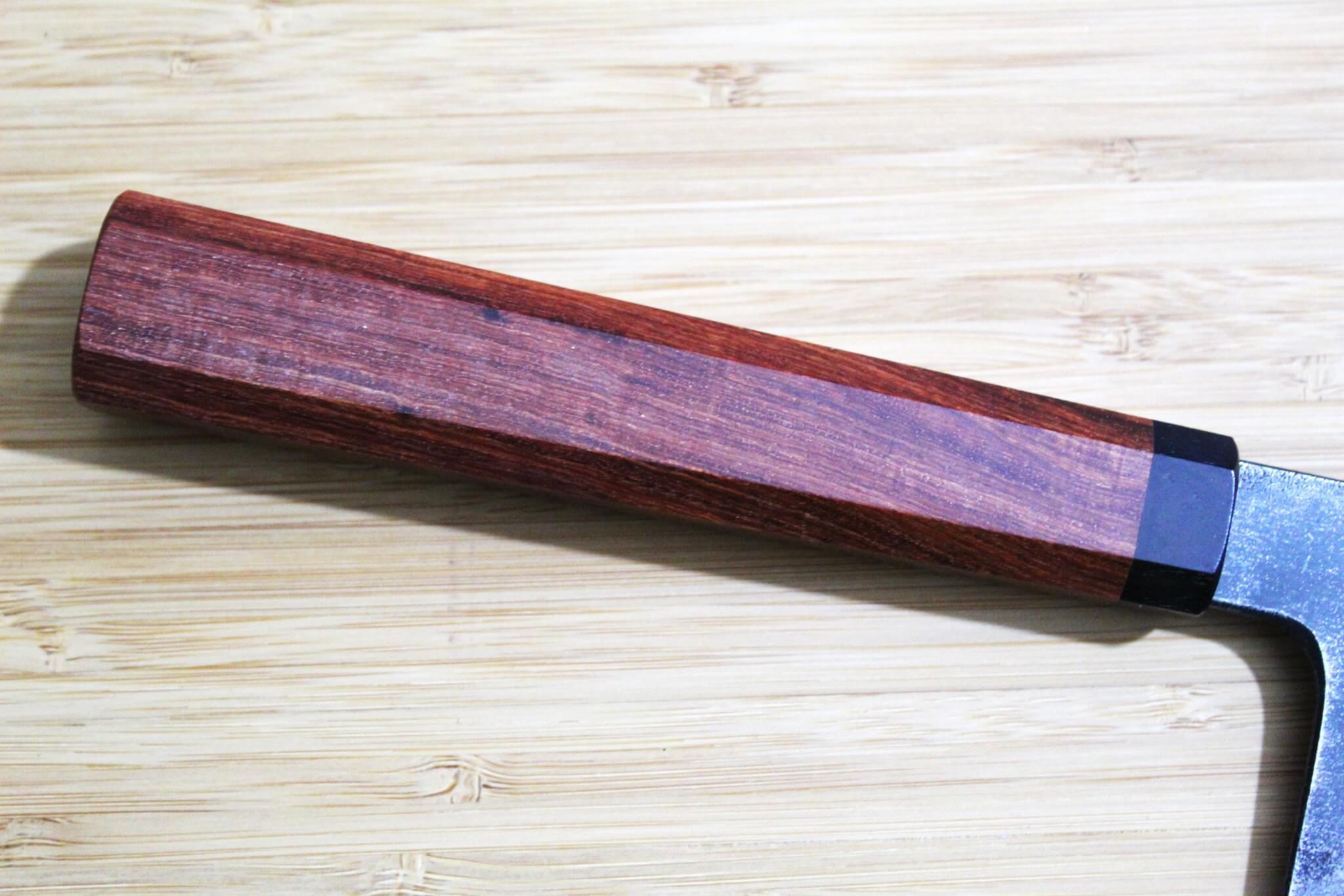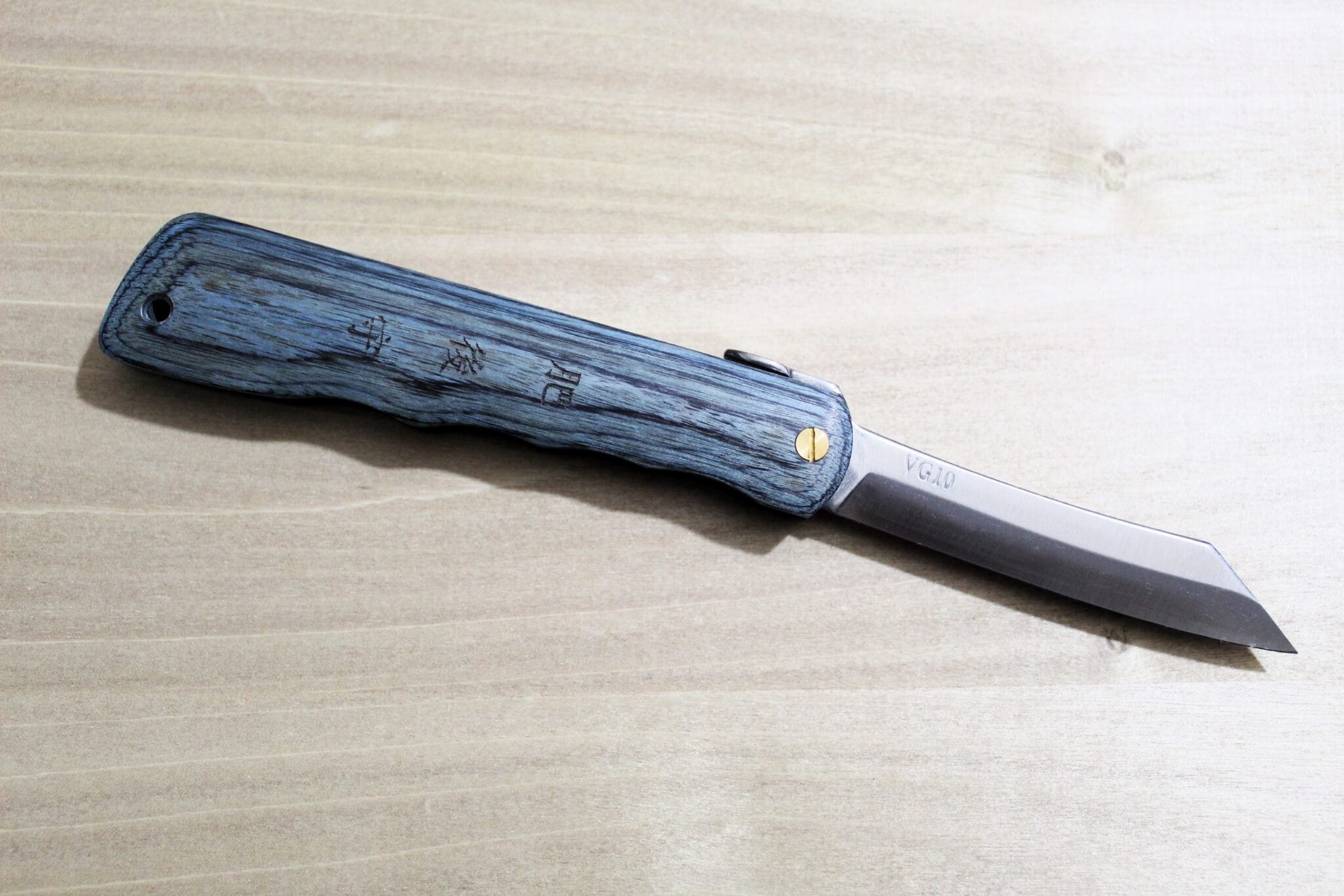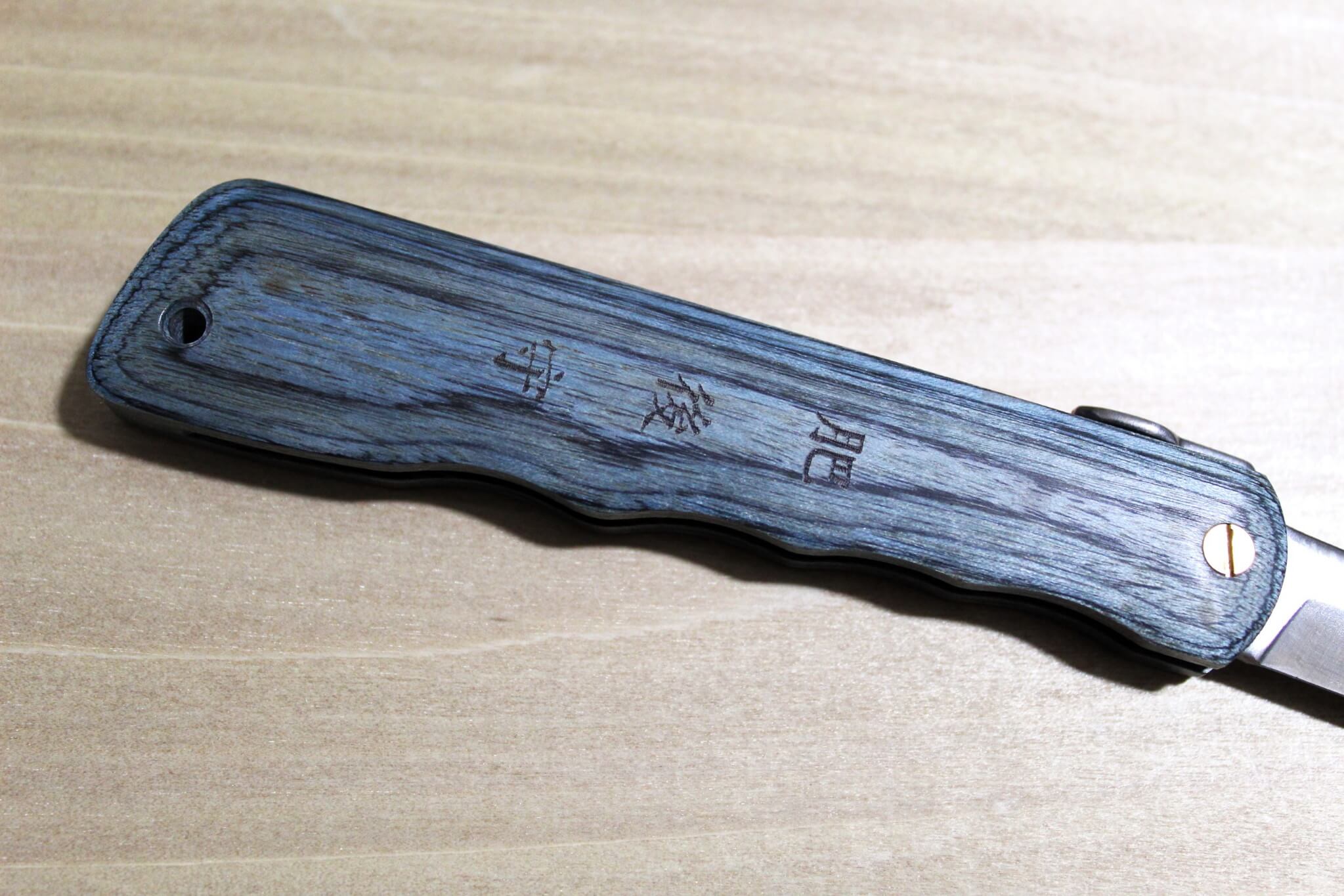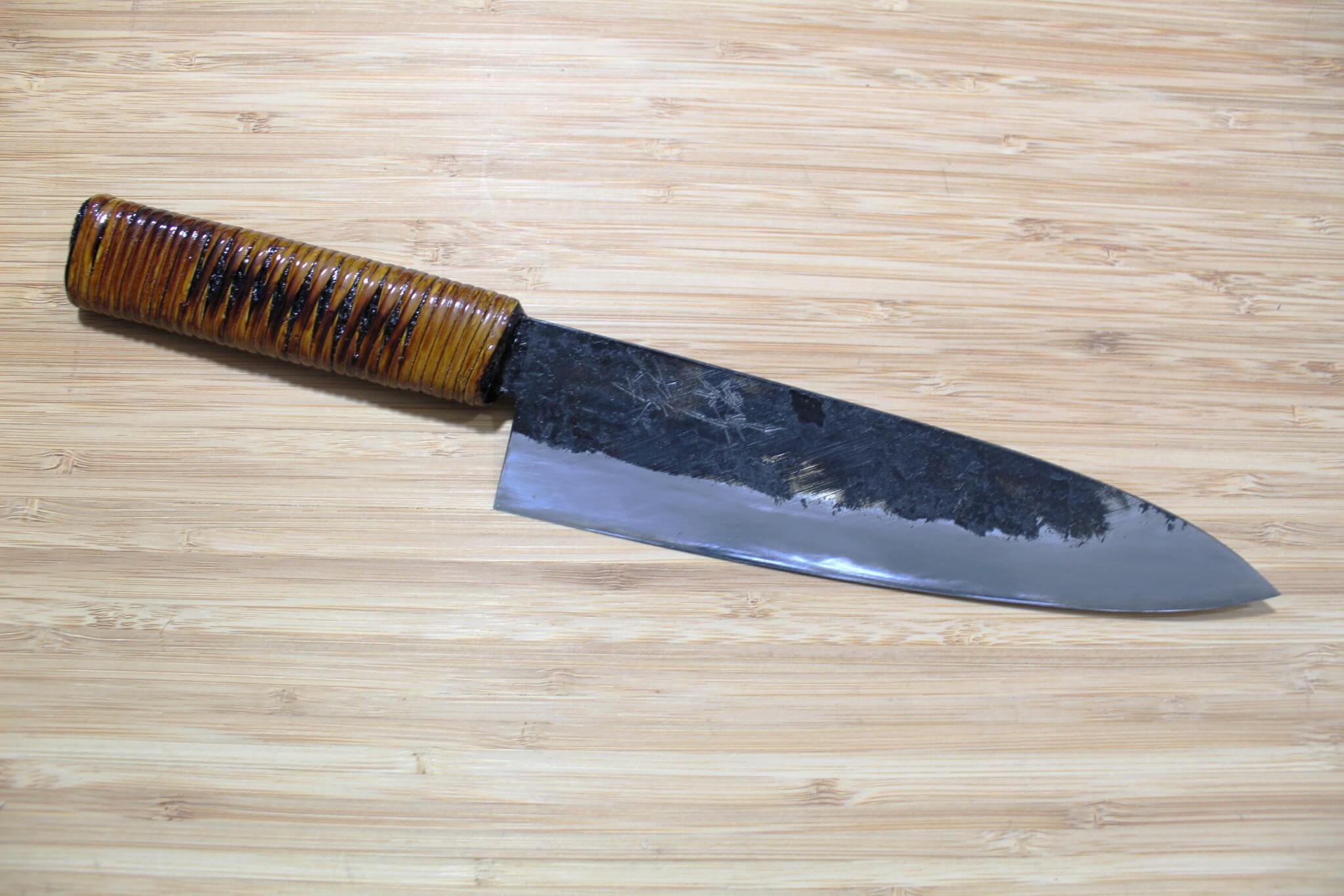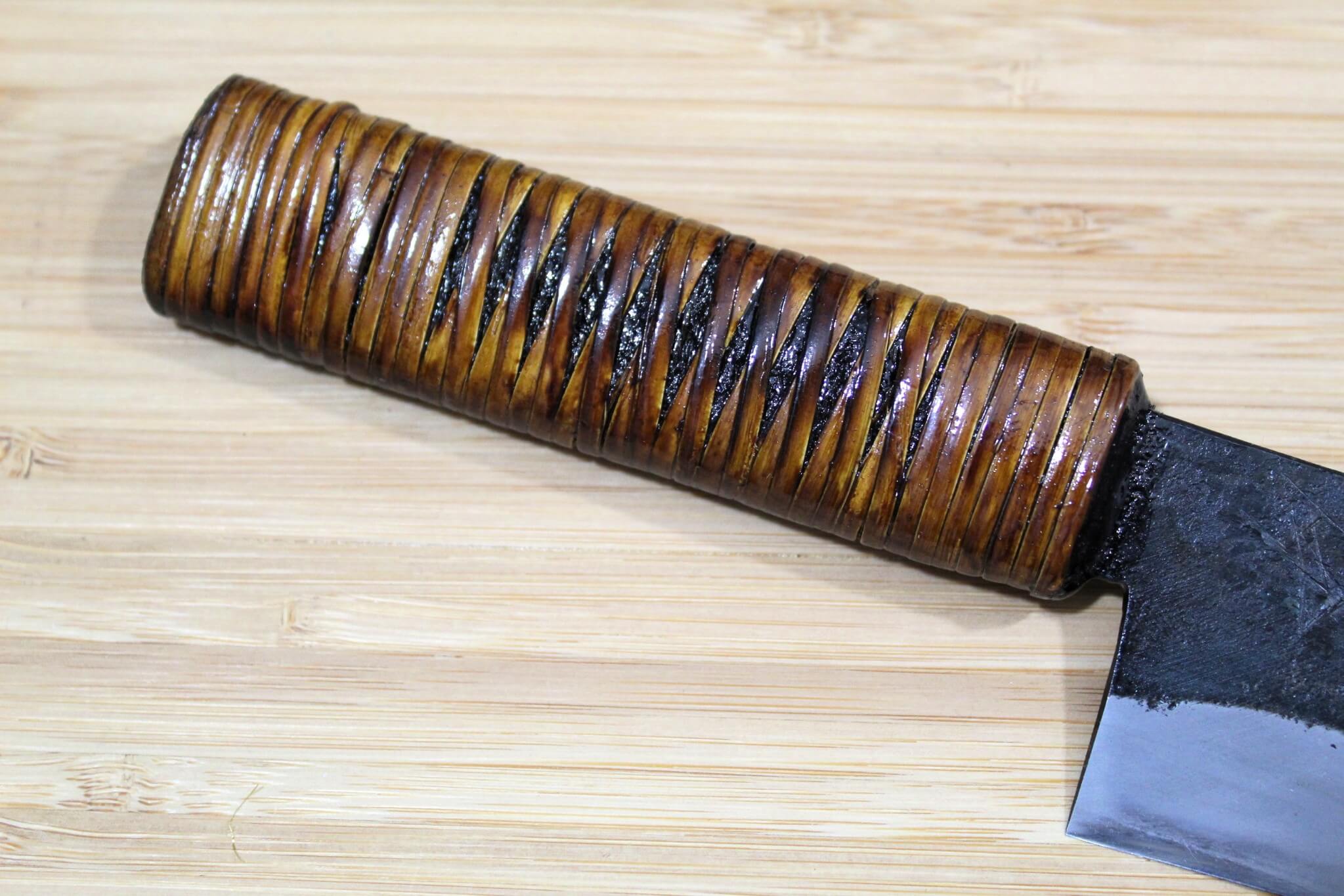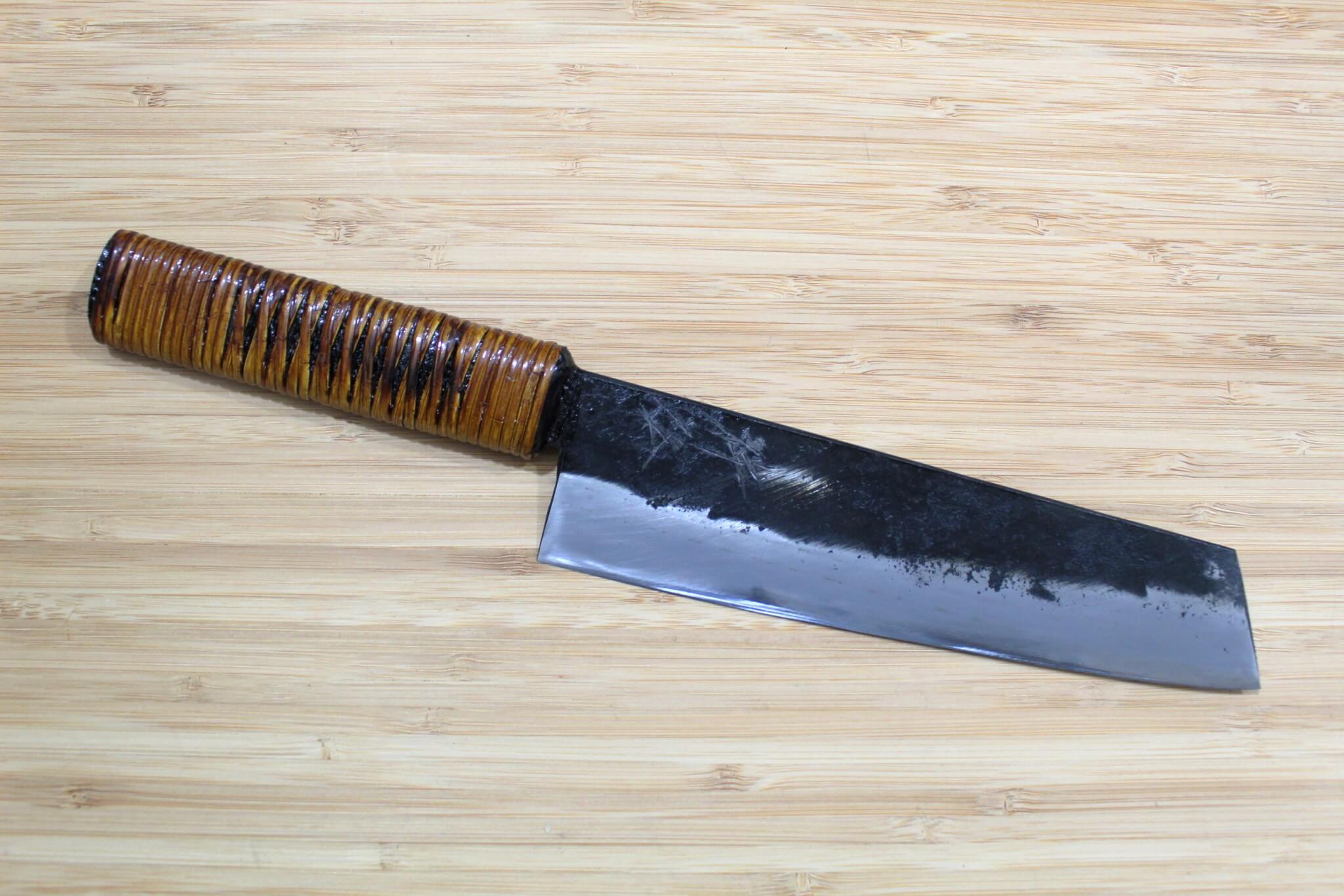Filters
Sakai Takayuki Homura Kogetsu Gyuto with Saya 210mm (8.3") - Aoniko / Blue Steel #2
Sale price$509.15
Regular price$599.00
Sakai Takayuki Homura Kogetsu Petty with Saya 150mm (5.9") - Aoniko/ Blue Steel #2
Sale price$364.65
Regular price$429.00
Sakai Takayuki Kengata Santoku Homura SP with Saya 225mm (8.8") - Aoniko (Blue Steel #2)
Sale price$1,044.65
Regular price$1,229.00
Fujiwara Yasuhiko Aogami Super / Blue Super Steel Nakiri 165 mm / 6.5" Red Handle
Sale price$271.15
Regular price$319.00
Fujiwara Yasuhiko Aogami Super / Blue Super Steel Petty 150 mm / 5.9" Red Handle
Sale price$305.15
Regular price$359.00
Fujiwara Yasuhiko Aogami Super / Blue Super Steel Santoku 165 mm / 6.5" Red Handle
Sale price$322.15
Regular price$379.00
OUL Petty Aoniko / Blue Steel #2 150mm / 5.9" Oak Handle
Sale price$279.65
Regular price$329.00
OUL Petty Shironiko / White Steel #2 150mm / 5.9" Oak Handle
Sale price$288.15
Regular price$339.00
OUL Petty Shirogami #1 / White Steel #1 Stainless Clad 135 mm / 5.3" Burnt Oak Handle
Sale price$194.65
Regular price$229.00
OUL Santoku Shirogami #1 / White Steel #1 Stainless Clad 165 mm / 6.5" Burnt Oak Handle
Sale price$288.15
Regular price$339.00
OUL Nakiri Shirogami #1 / White Steel #1 Stainless Clad 165 mm (6.5") Burnt Oak Handle
Sale price$296.65
Regular price$349.00
OUL Gyuto Shirogami #1 / White Steel #1 210 mm / 8.2" Burnt Oak Handle
Sale price$364.65
Regular price$429.00
OUL Santoku Aoniko / Blue Steel #2 180mm / 7.0" Oak Handle
Sale price$356.15
Regular price$419.00
OUL Kurouchi Aogami Nakiri 165 mm / 6.5" Magnolia Handle
Sale price$169.15
Regular price$199.00
OUL Santoku Hammered Shironiko / White Steel #2 165 mm / 6.5" Magnolia Handle
Sale price$296.65
Regular price$349.00
OUL Gyuto Hammered Shironiko / White Steel #2 210 mm / 8.2" Magnolia Handle
Sale price$254.15
Regular price$299.00
Sawakazuma Yugiri Shironiko Nashiji Nakiri Knife 165 mm / 6.5" Maple and Renghas Handle
Sale price$330.65
Regular price$389.00
Sawakazuma Yugiri Nashiji Santoku Knife 165 mm / 6.5" Maple and Renghas Handle
Sale price$288.15
Regular price$339.00
Miki Hamono Gokuao Aogami Super / Blue Super Steel Santoku Knife 170 mm / 6.7" with Rosewood Handle
Sale price$211.65
Regular price$249.00
Miki Hamono Gokuao Aogami Super / Blue Super Steel Gyuto Knife 180 mm / 7.1" with Rosewood Handle
Sale price$220.15
Regular price$259.00
Sakai Takayuki Baikoku Shironiko / White Steel #2 Santoku Knife 180mm / 7.1" Burnt Oak Handle
Sale price$305.15
Regular price$359.00
Sakai Takayuki Baikoku Shironiko / White Steel #2 Petty Knife 140mm / 5.5" Burnt Oak Handle
Sale price$288.15
Regular price$339.00
Isamitsu Shirogami #1 / White Steel #1 Kiritsuke 135 mm / 5.3" Red Two Tone Maple Handle
Sale price$500.65
Regular price$589.00
Isamitsu Shirogami #1 / White Steel #1 Kiritsuke 165 mm / 6.5" Red Two Tone Maple Handle
Sale price$662.15
Regular price$779.00
Isamitsu Shirogami #1 / White Steel #1 Nakiri 165 mm / 6.5" Japanese Pagoda Handle
Sale price$679.15
Regular price$799.00
Isamitsu Shirogami #1 / White Steel #1 Petty 120 mm / 4.7" Red Two Tone Maple Handle
Sale price$424.15
Regular price$499.00
Isamitsu Shirogami #1 / White Steel #1 Santoku 180 mm / 7.0" Red Two Tone Maple Handle
Sale price$679.15
Regular price$799.00
Isamitsu Shirogami #1 / White Steel #1 Petty 135 mm / 5.3" Maple Handle
Sale price$441.15
Regular price$519.00
Isamitsu Shirogami #1 / White Steel #1 Santoku 180 mm / 7.0" Maple Handle
Sale price$679.15
Regular price$799.00
Isamitsu Shirogami #1 / White Steel #1 Paring Knife 90 mm / 3.5" Maple Handle
Sale price$373.15
Regular price$439.00
Sawakazuma Yugiri Nashiji Gyuto Knife 210 mm / 8.2" Maple and Renghas Handle Orange
Sale price$407.15
Regular price$479.00
Sawakazuma Ginryu Aoniko Small Santoku 135 mm / 5.3" Rosewood Handle
Sale price$160.65
Regular price$189.00
Sawakazuma Narukami Shironiko Nakiri Knife 165 mm / 6.5" Maple and Renghas Handle
Sale price$194.65
Regular price$229.00
Sawakazuma Yugiri Nashiji Gyuto Knife 210 mm / 8.2" Maple and Renghas Handle Brown
Sale price$407.15
Regular price$479.00
Isamitsu Shirogami #1 / White Steel #1 Petty 120 mm / 4.7" Brown Two Tone Maple Handle
Sale price$424.15
Regular price$499.00
OUL Kengata Gyuto White Steel #1 210 mm / 8.2" Keyaki Handle
Sale price$398.65
Regular price$469.00
OUL Santoku White Steel #1 165 mm / 6.5" Keyaki Handle
Sale price$296.65
Regular price$349.00
OUL Kurouchi Aoniko / Blue Steel #2 Small Nakiri Knife 120 mm / 4.7" Black Oak Handle
Sale price$126.65
Regular price$149.00
OUL Petty White Steel #1 135 mm / 5.3" Keyaki Handle
Sale price$194.65
Regular price$229.00
OUL Sujihiki White Steel #1 240 mm / 9.4" Keyaki Handle
Sale price$339.15
Regular price$399.00
OUL Nakiri White Steel #1 165 mm / 6.5" Keyaki Handle
Sale price$296.65
Regular price$349.00
Kaneshige Hamono Kurouchi Aoniko Gyuto Knife 210 mm (8.2") Khii Ebony Handle
Sale price$245.65
Regular price$289.00
Kaneshige Hamono Kurouchi Aoniko Nakiri Knife 170 mm / 6.7" Khii Ebony Handle
Sale price$237.15
Regular price$279.00
Kaneshige Hamono Kurouchi Aoniko Santoku Knife 190 mm (7.5") Khii Ebony Handle
Sale price$228.65
Regular price$269.00
Sakai Takayuki Shironiko Habahiro Bunka Knife 180 mm (7.0")
Sale price$322.15
Regular price$379.00
Higonokami Woody VG-10 Folding Pocket Knife Sora (Blue)
Sale price$101.15
Regular price$119.00
Kyokokaji Shokei Shironiko Kurouchi Bunka 180 mm (7.0") Fujimaki Handle
Sale price$390.15
Regular price$459.00
Kyokokaji Shokei Shironiko Kurouchi Kiritsuke 170 mm / 6.7" Fujimaki Handle
Sale price$347.65
Regular price$409.00

